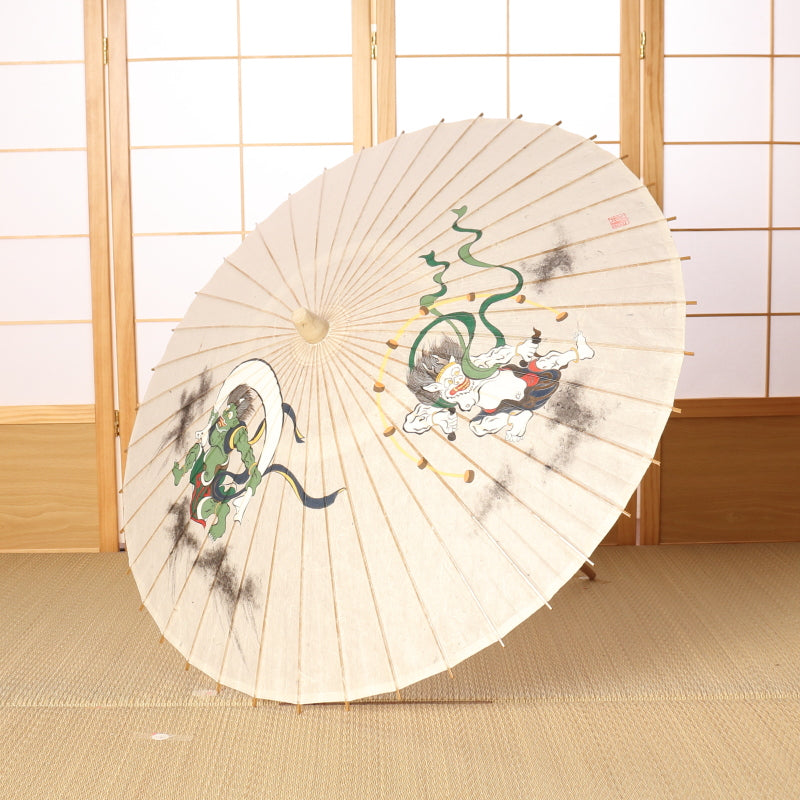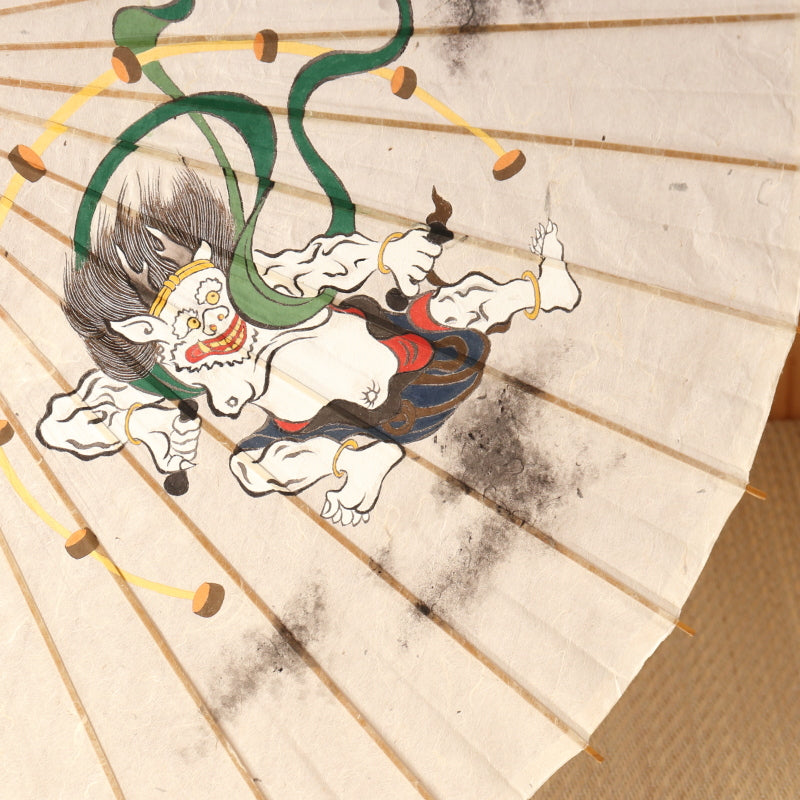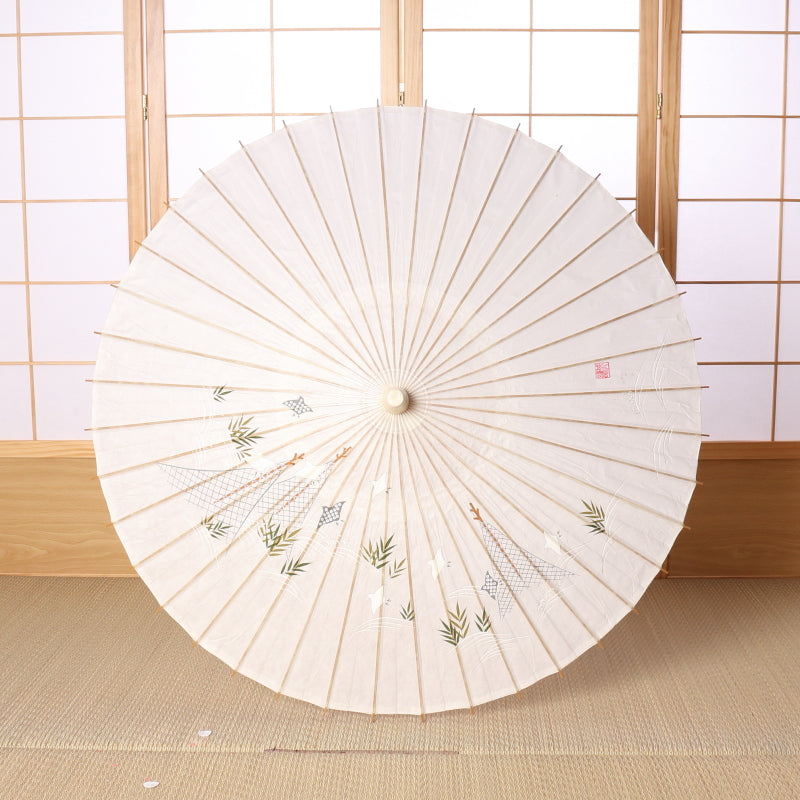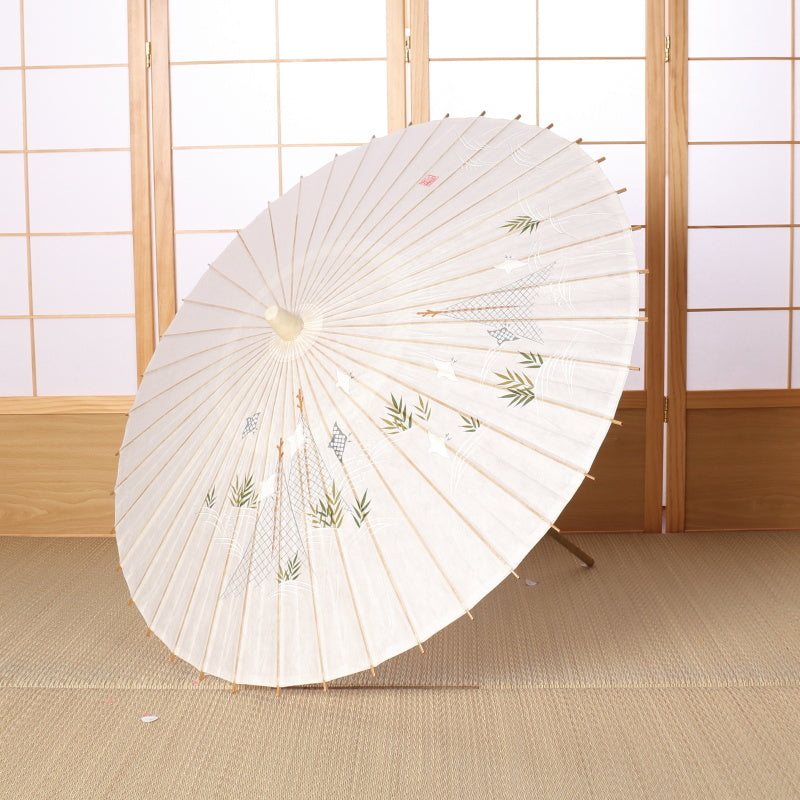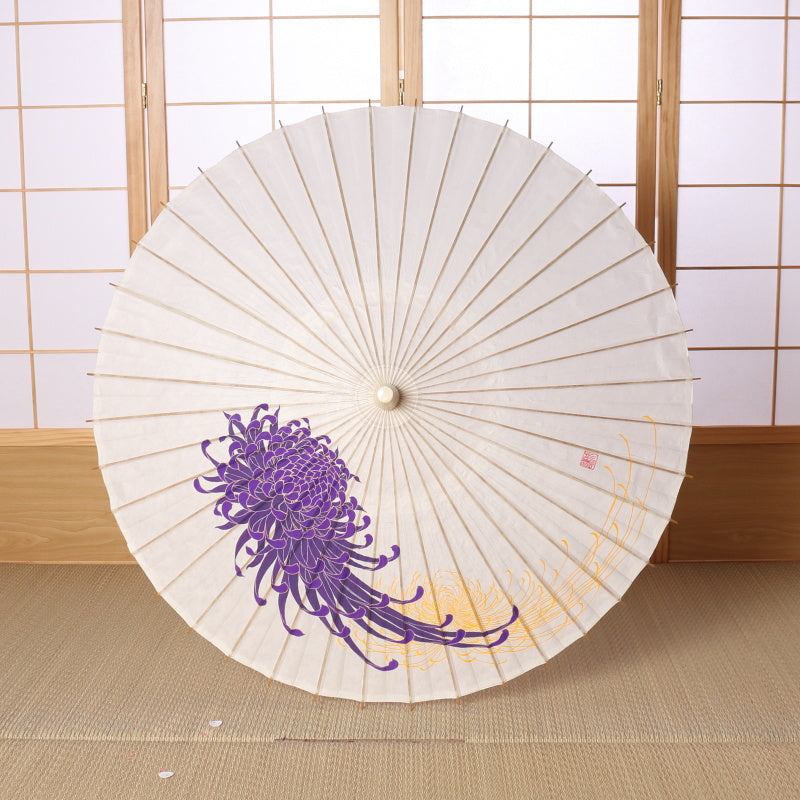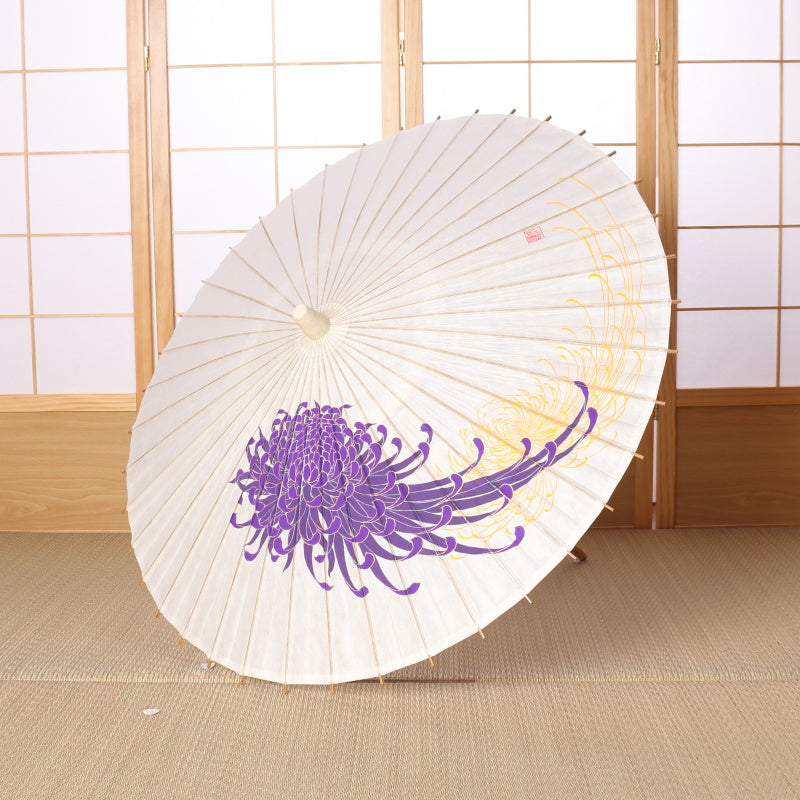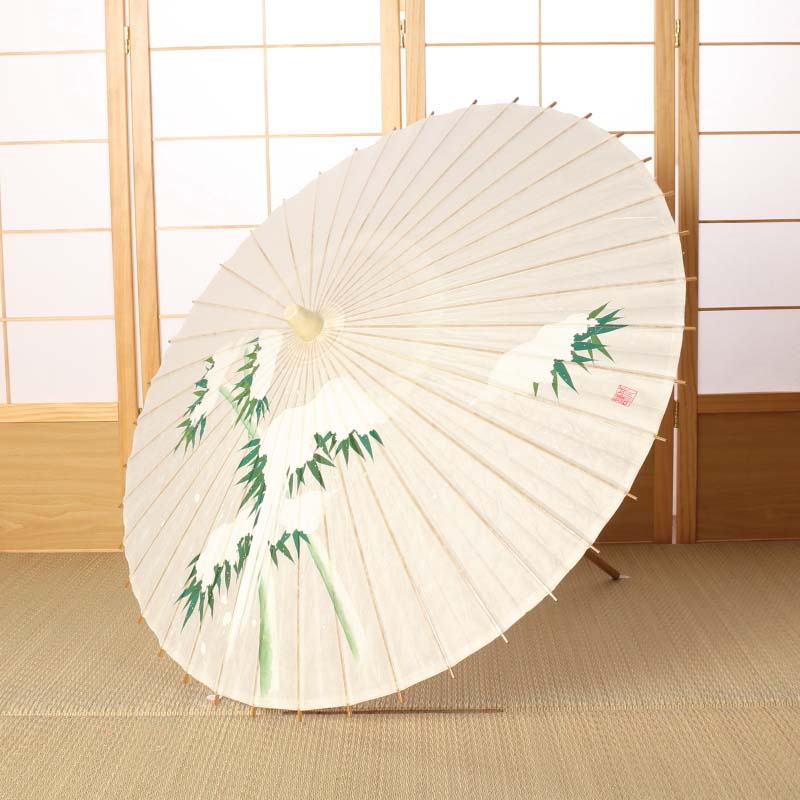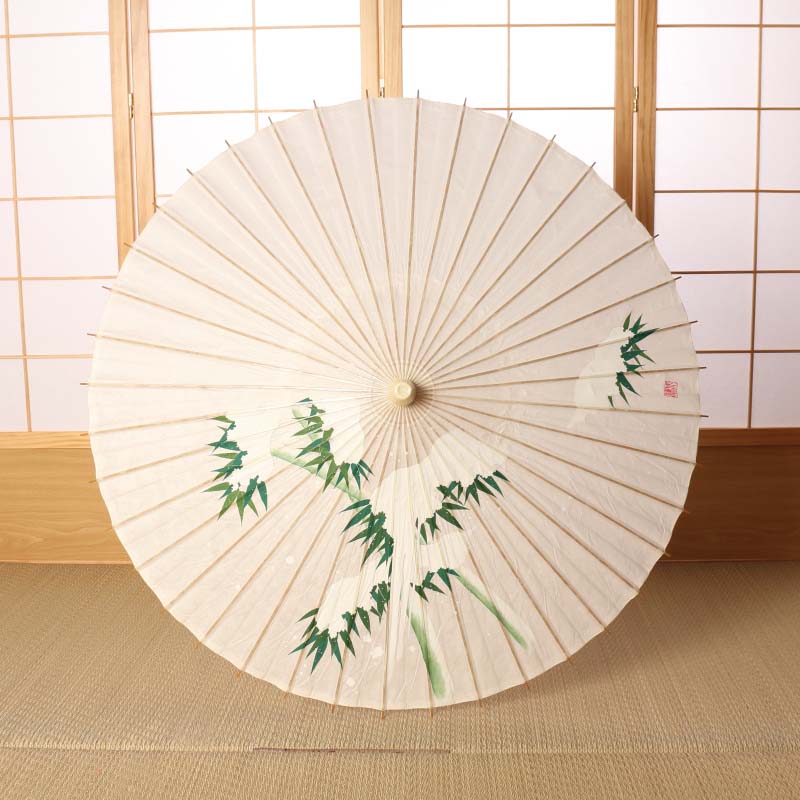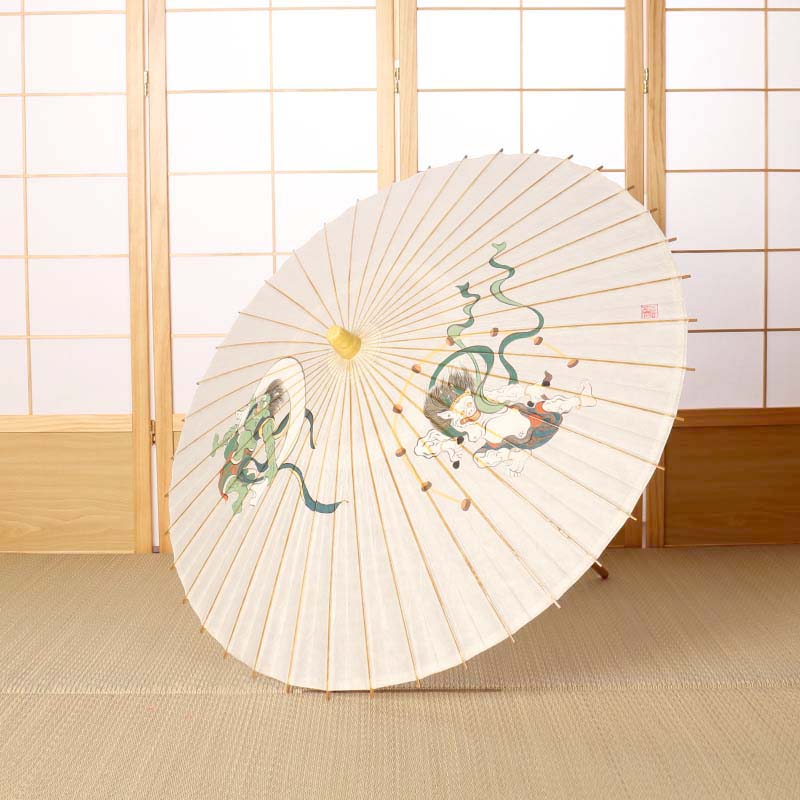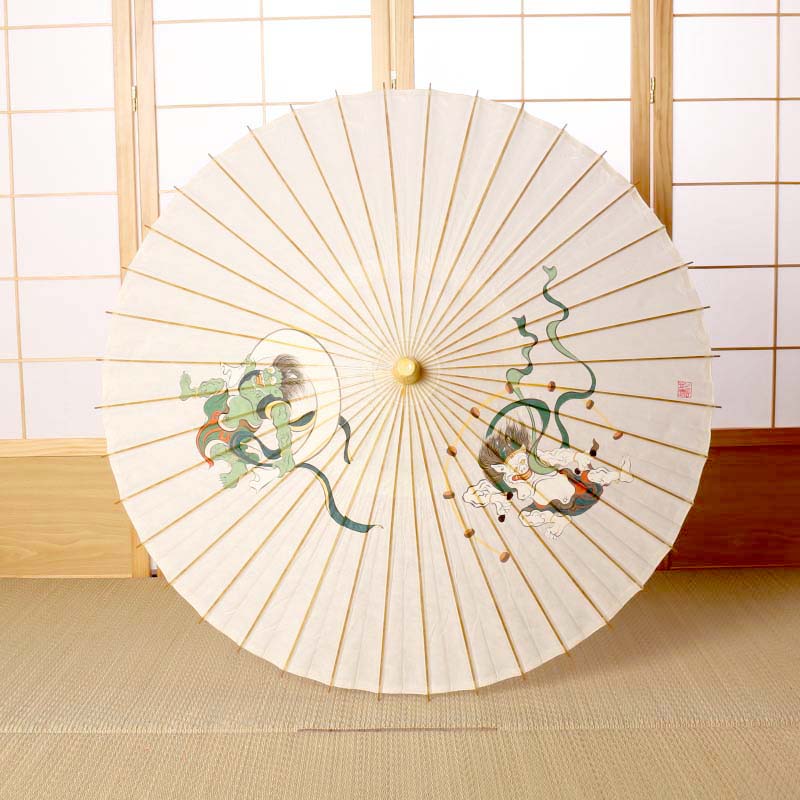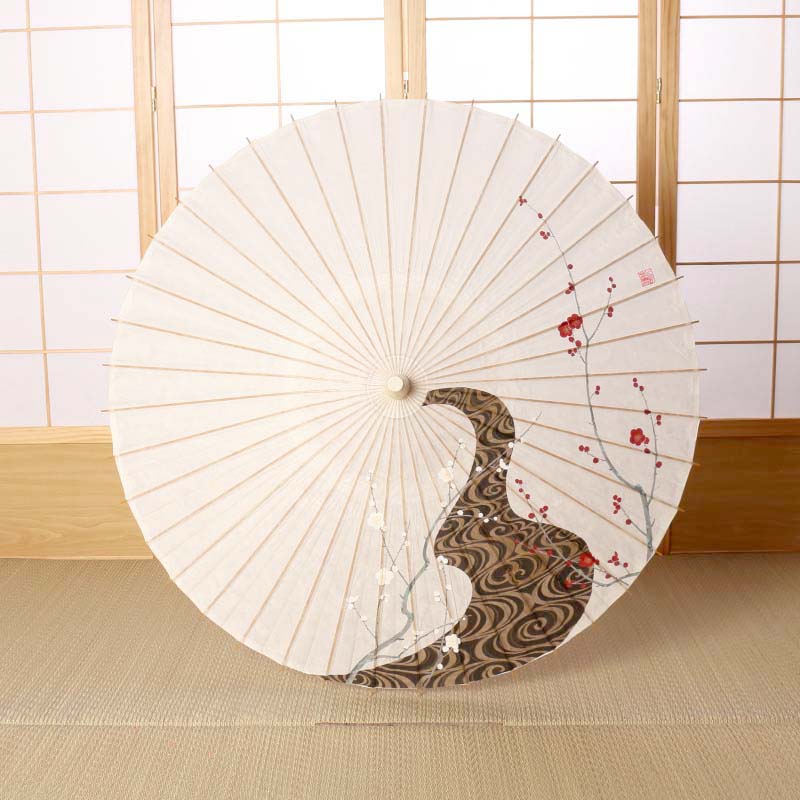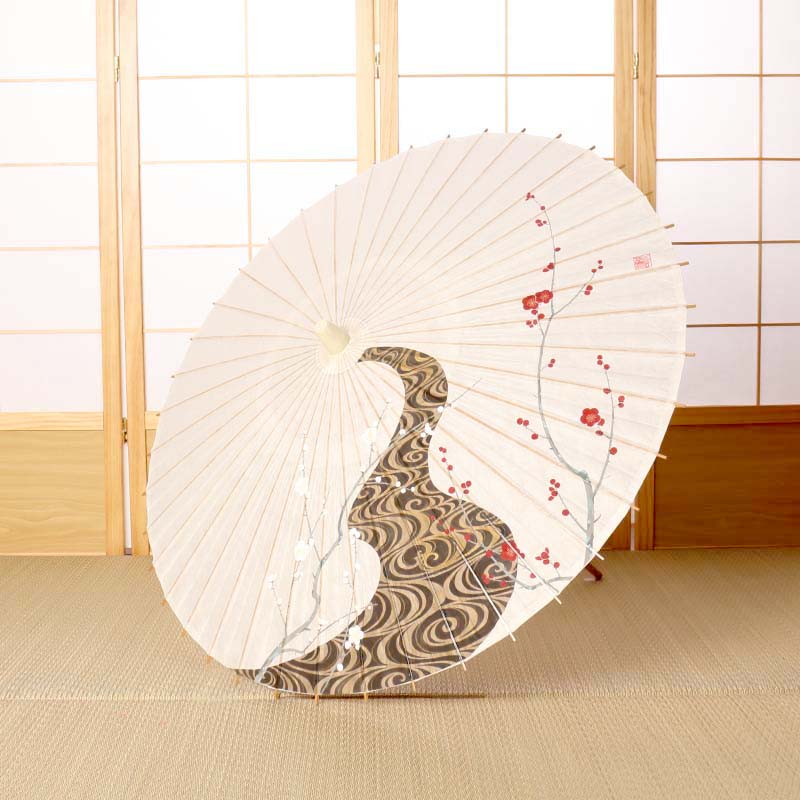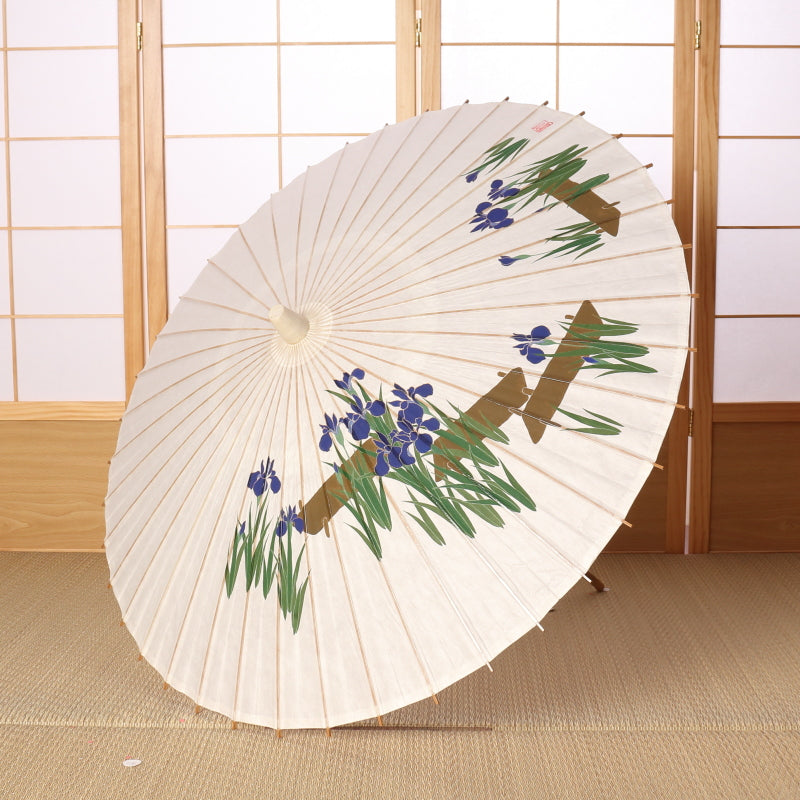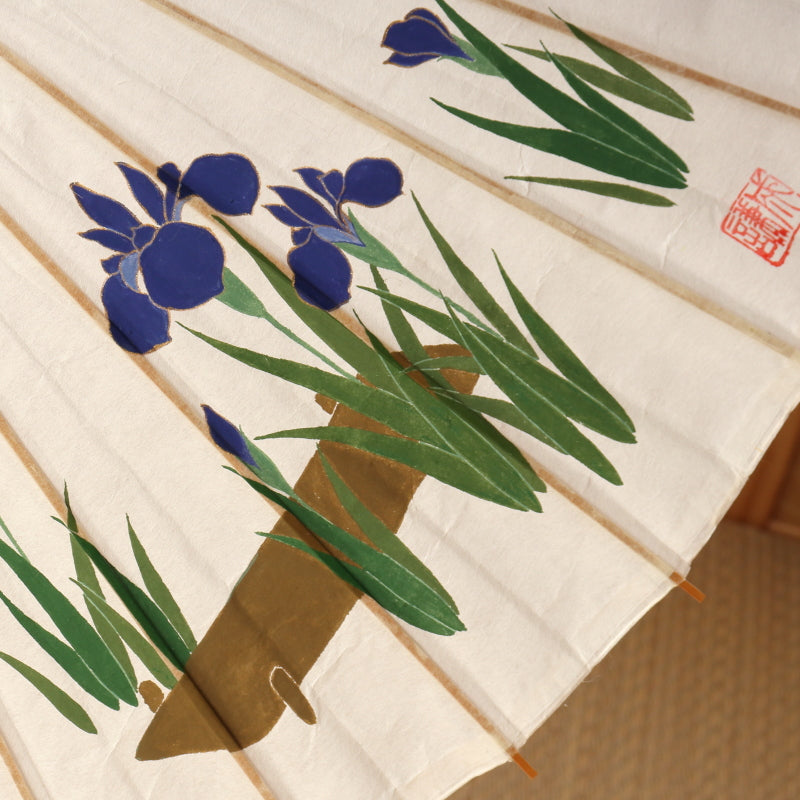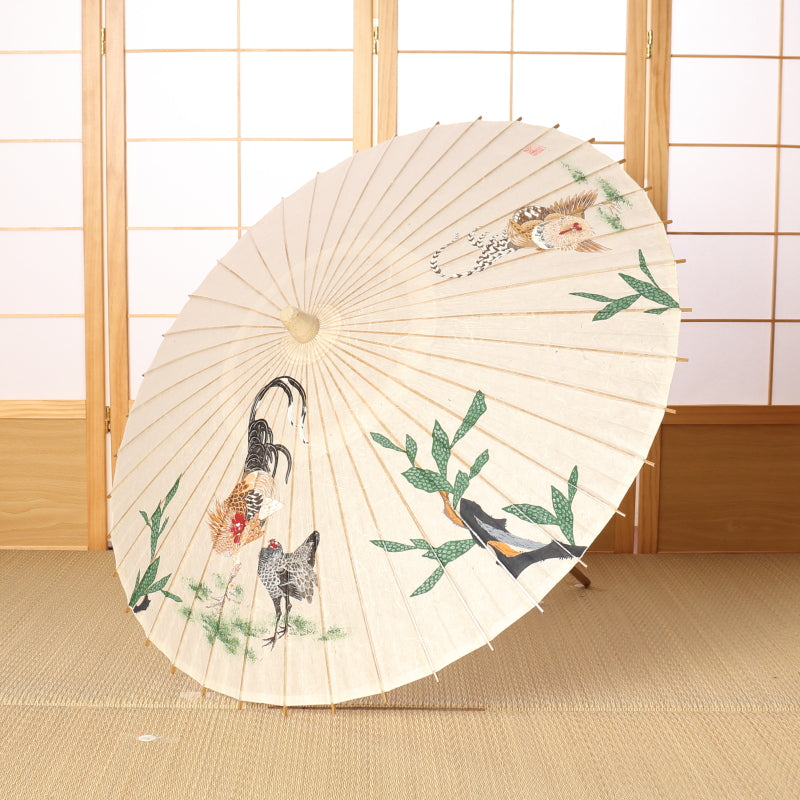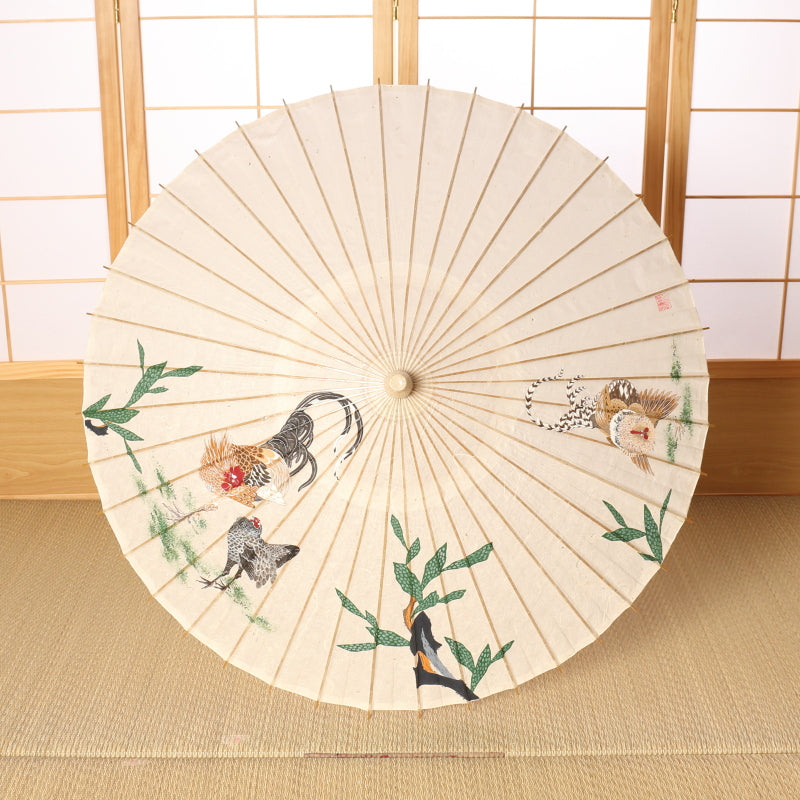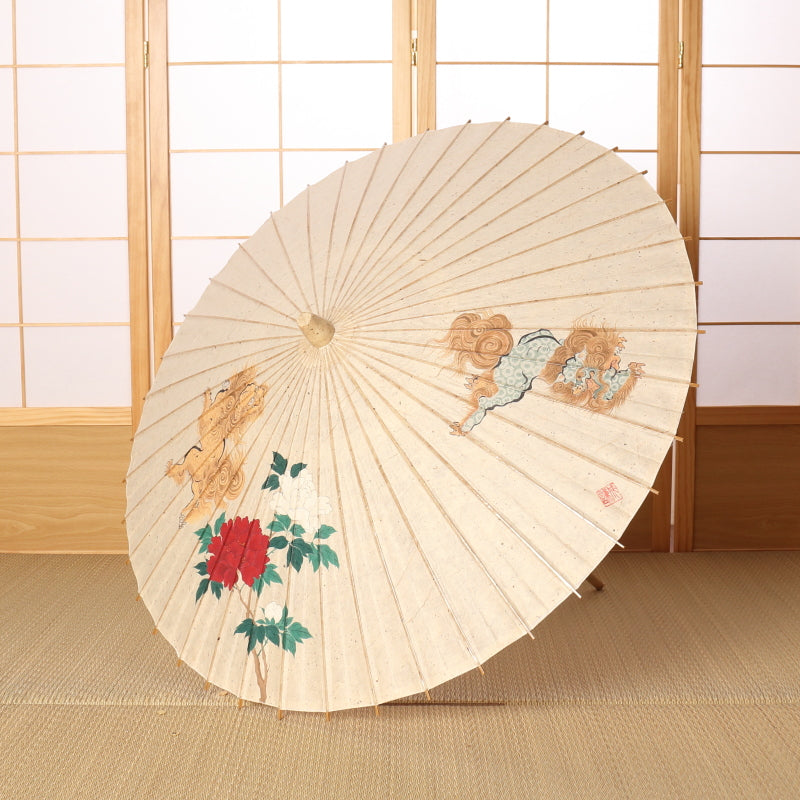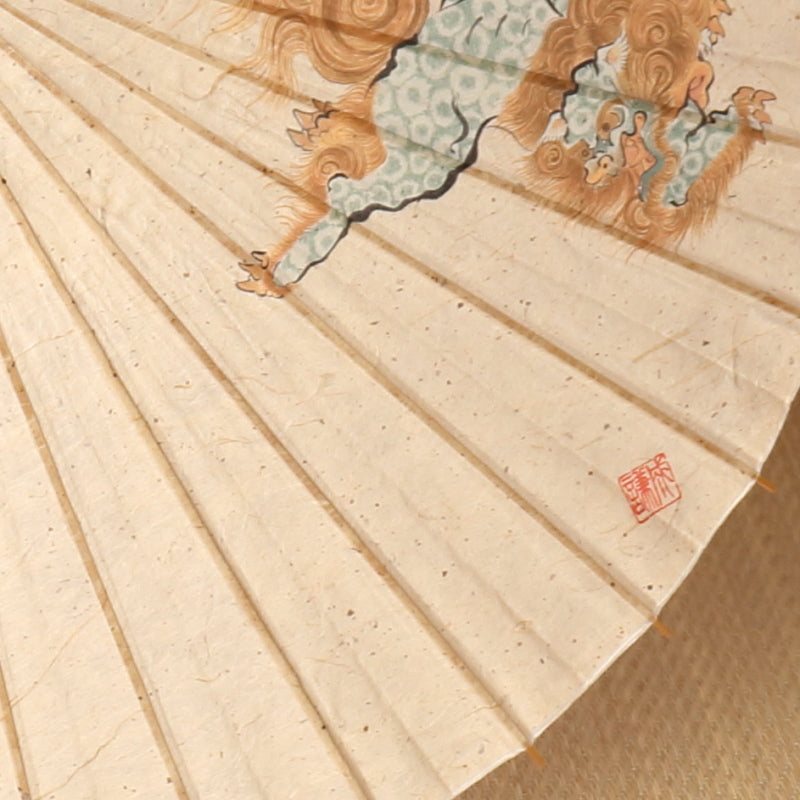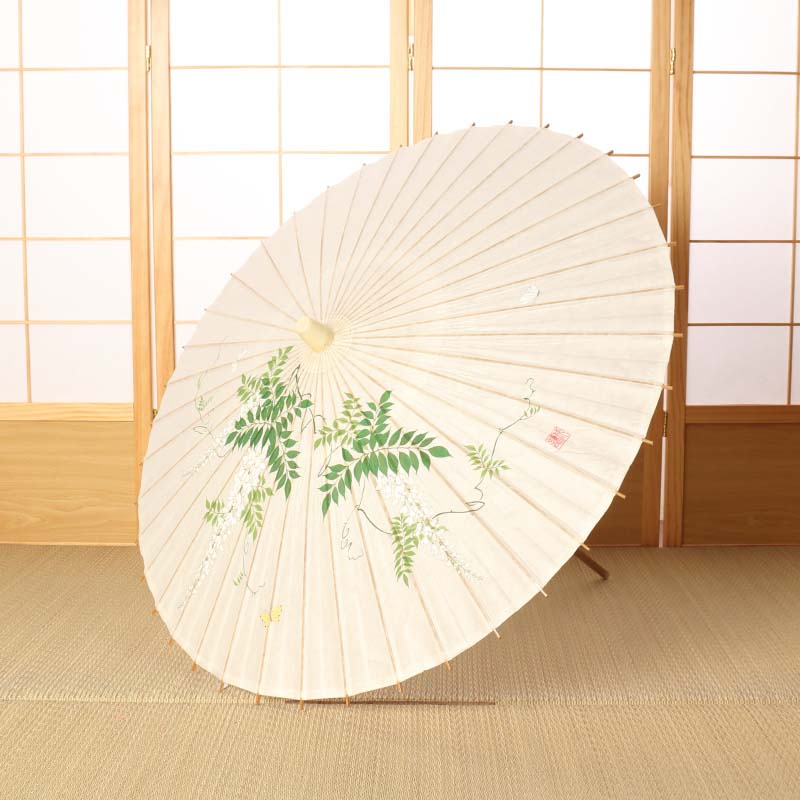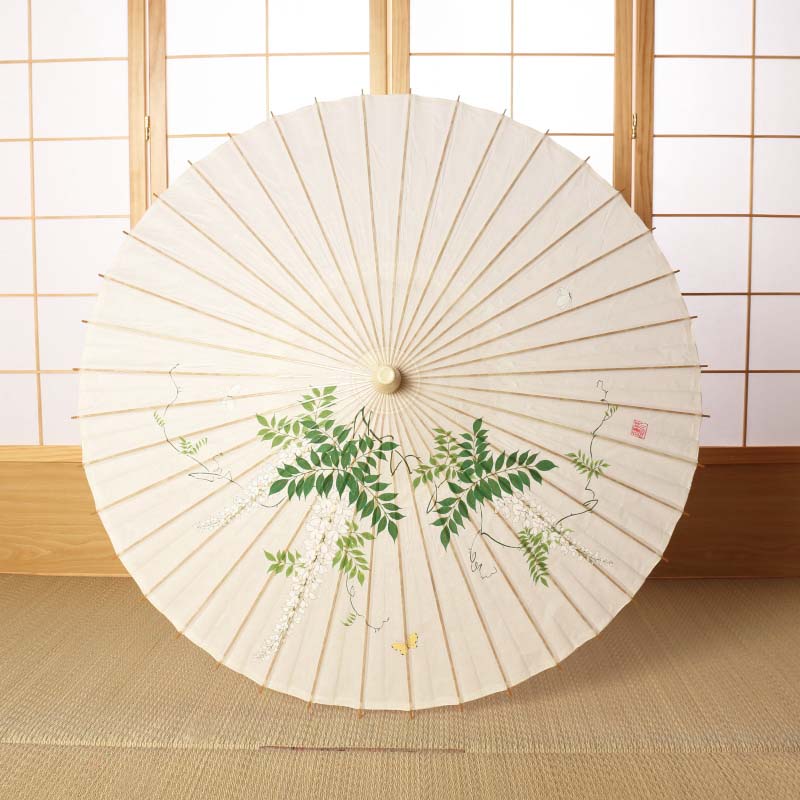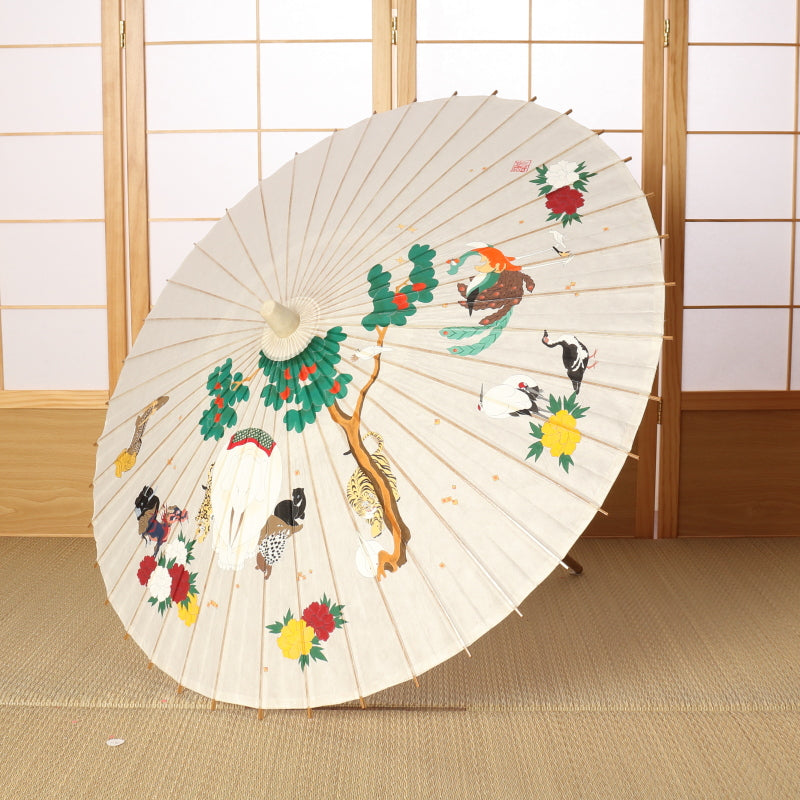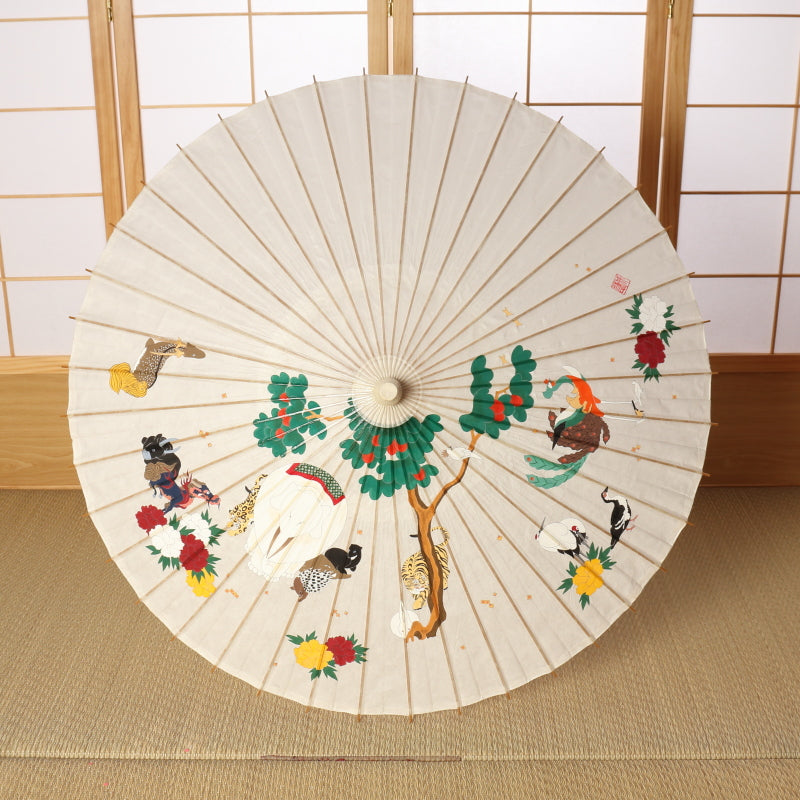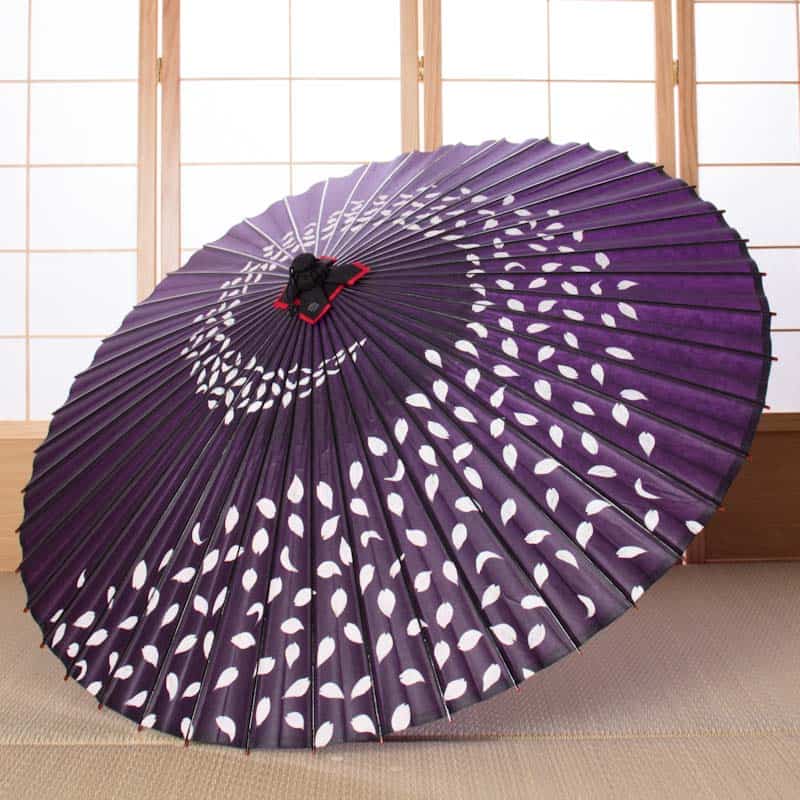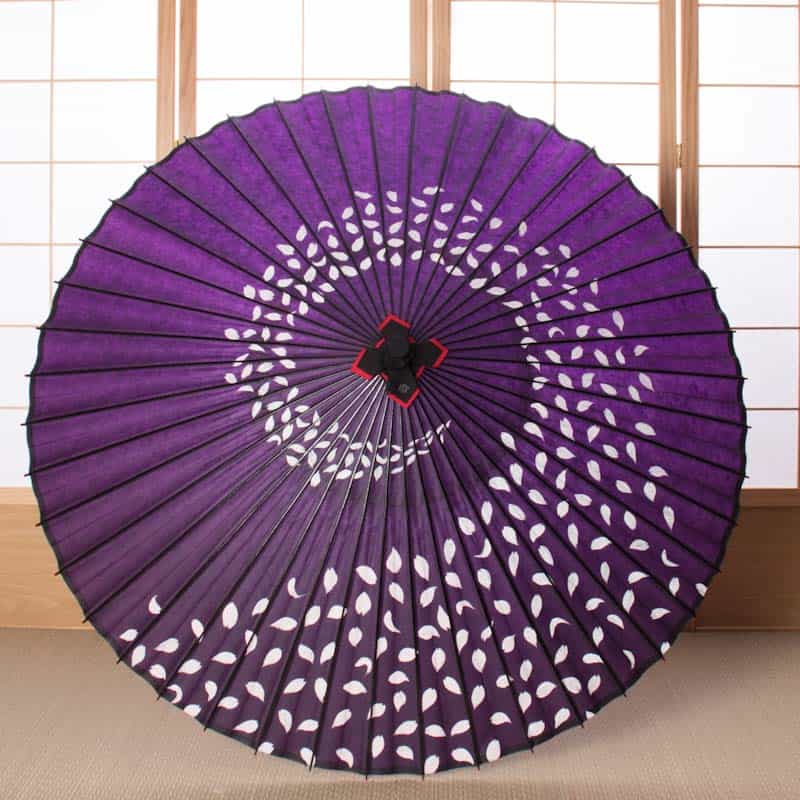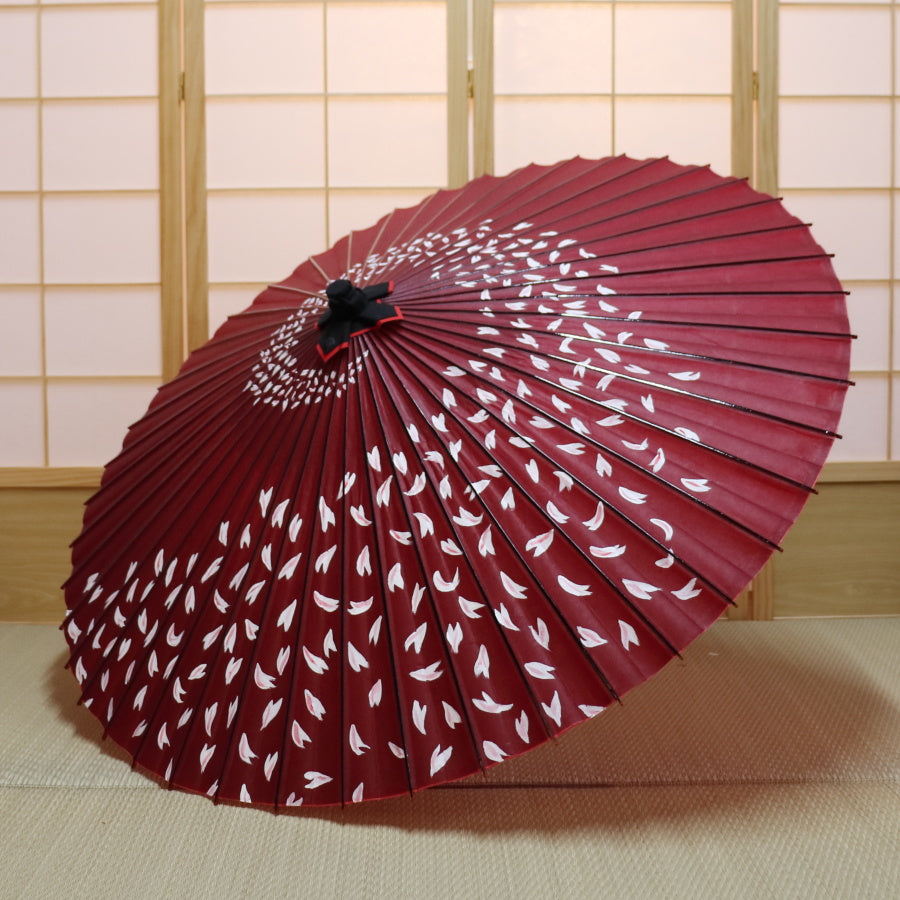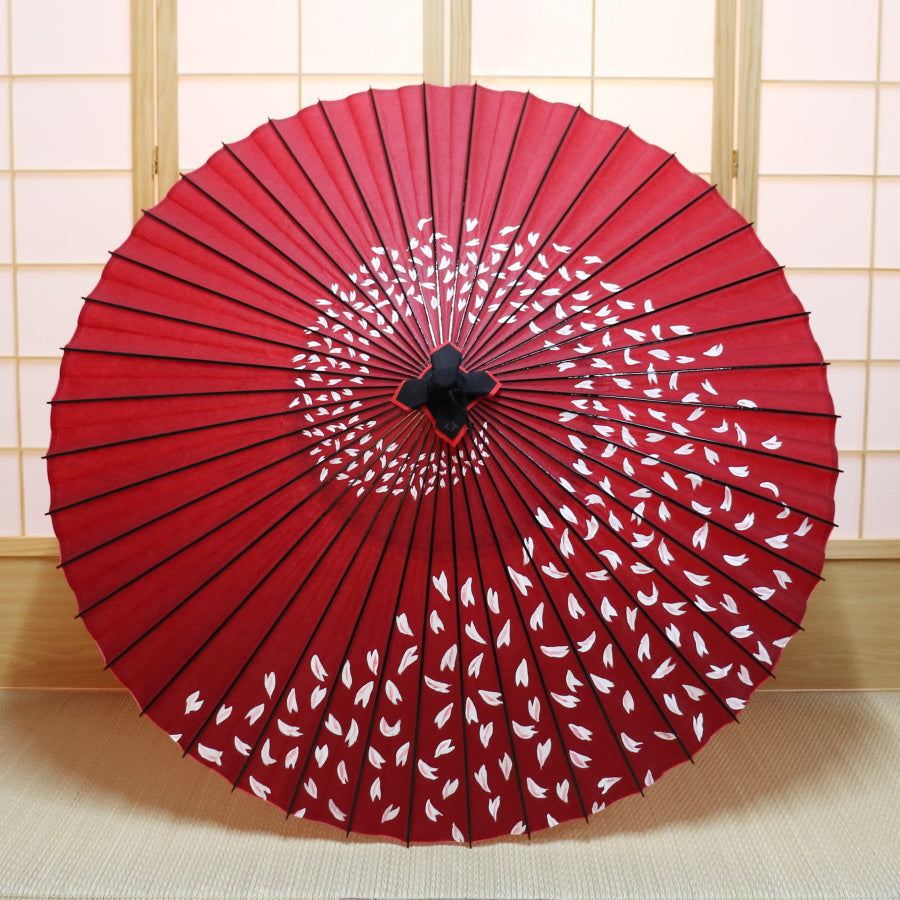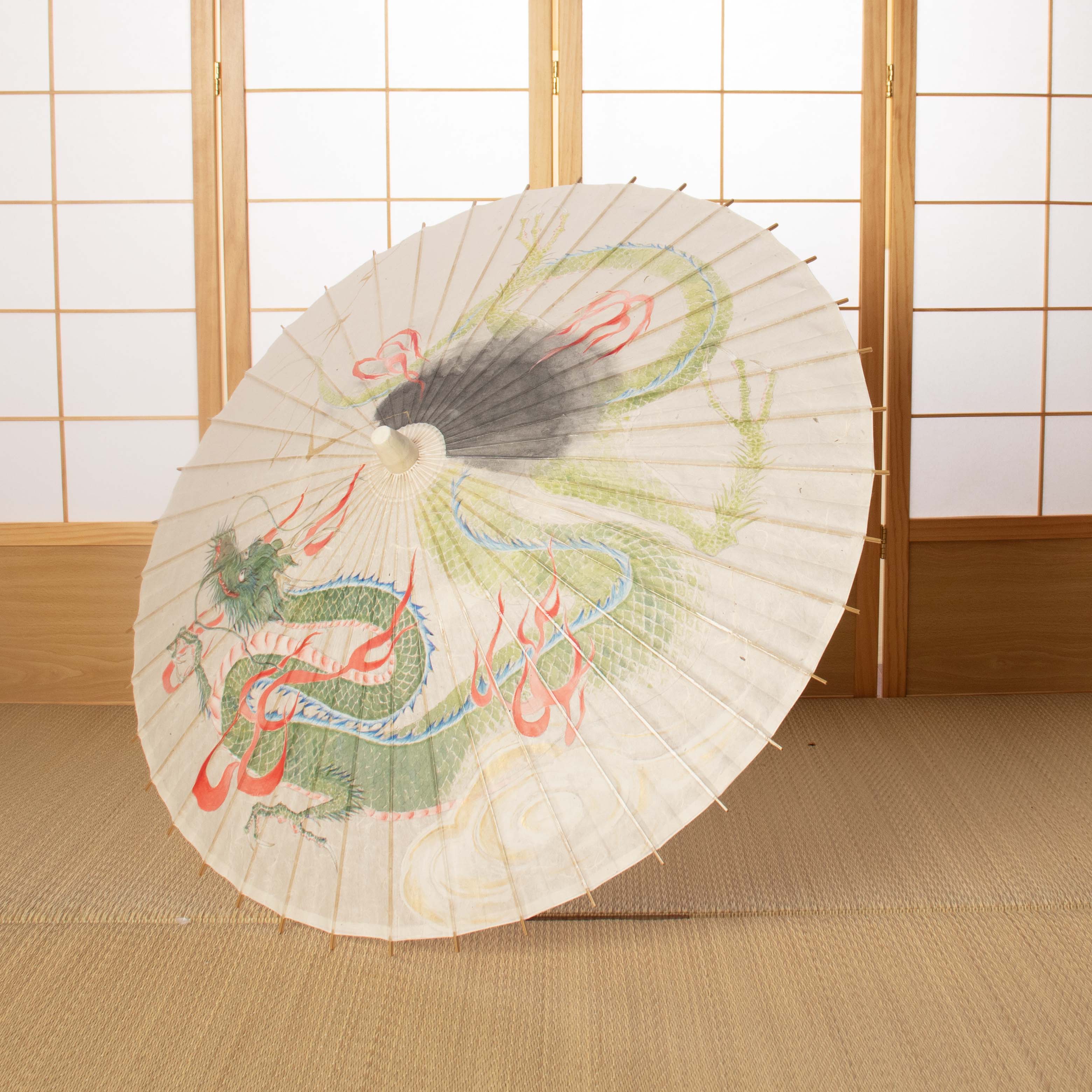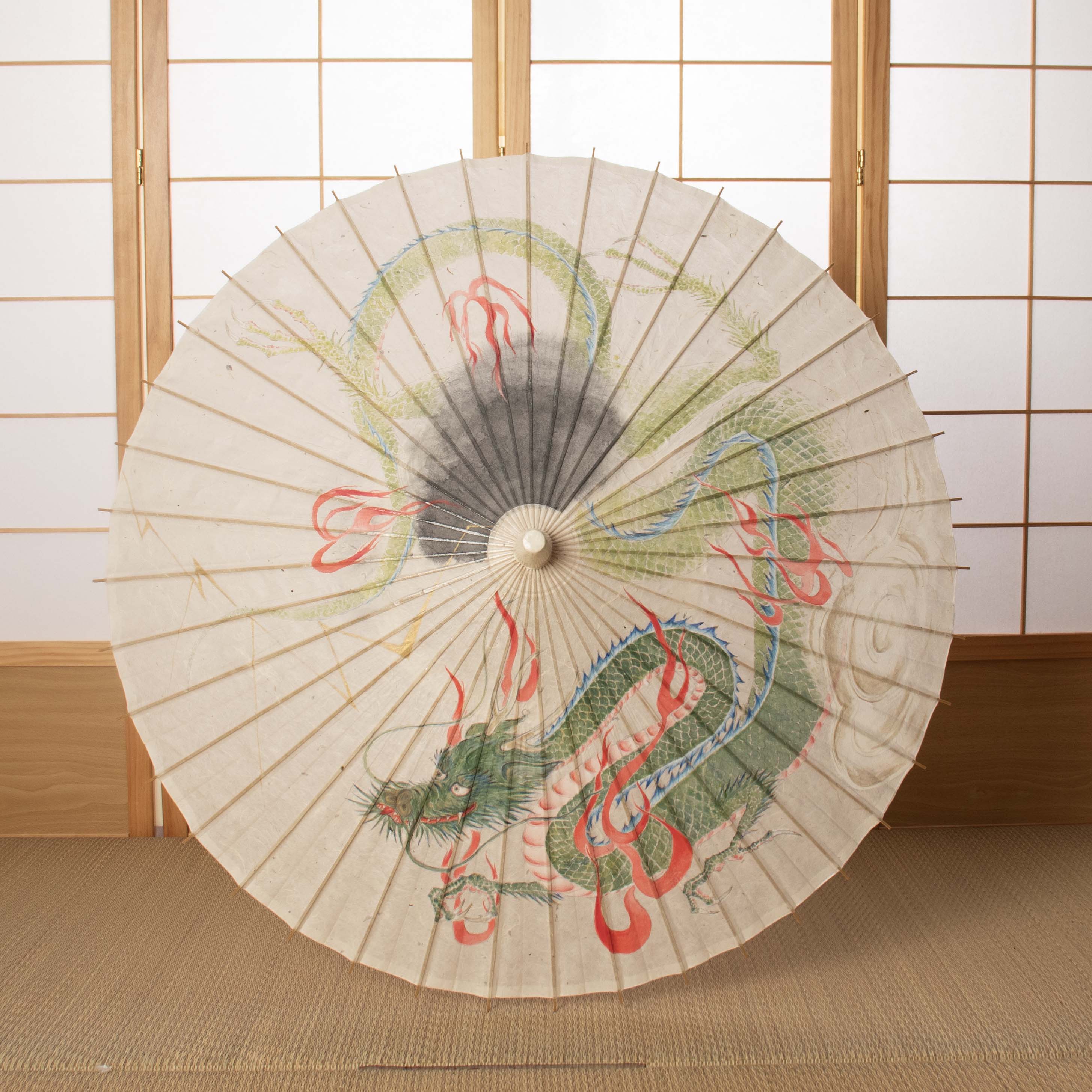Craft Dyeing Master Seiken × Kyoto Japanese Umbrella Shop Tsujikura
Seiken, a craftsman who produces authentic Kyoto Yuzen dyeing in modern times with a sincere attitude towards craftsmanship
A collaboration between Tsujikura and Kyoto Wagasa-ya Tsujikura Kyozome Kogei Dyeing Master "Seiken", who continues to make Japanese umbrellas with the desire to "pass on Japan's ancient traditions and culture to future generations", has been realized.
The most important part of making a kimono is the "sketch."
A sketch artist who has been drawing various designs at Seiken for 30 years has drawn classical patterns on the Japanese paper that will become the umbrellas.
All of Tsujikura's Japanese umbrellas are made using domestically produced materials. Our Japanese umbrella craftsmen protect traditional Japanese manufacturing methods and make it their mission to pass on Japanese umbrellas to the next generation.
We continue to make Japanese umbrellas that are made entirely in Japan.
A Kyoto yuzen artist and a Japanese umbrella craftsman.
Combining a sincere approach to craftsmanship with the skills of experienced artisans, the hand-painted Kyo-Yuzen Japanese parasol has been completed.
Craft Dyeing Master Seiken × Kyoto Japanese Umbrella Shop Tsujikura
Higasa (Japanese parasol)
Higasa (Japanese parasol)
Higasa (Japanese parasol)
"Chinese Lion and Peony"
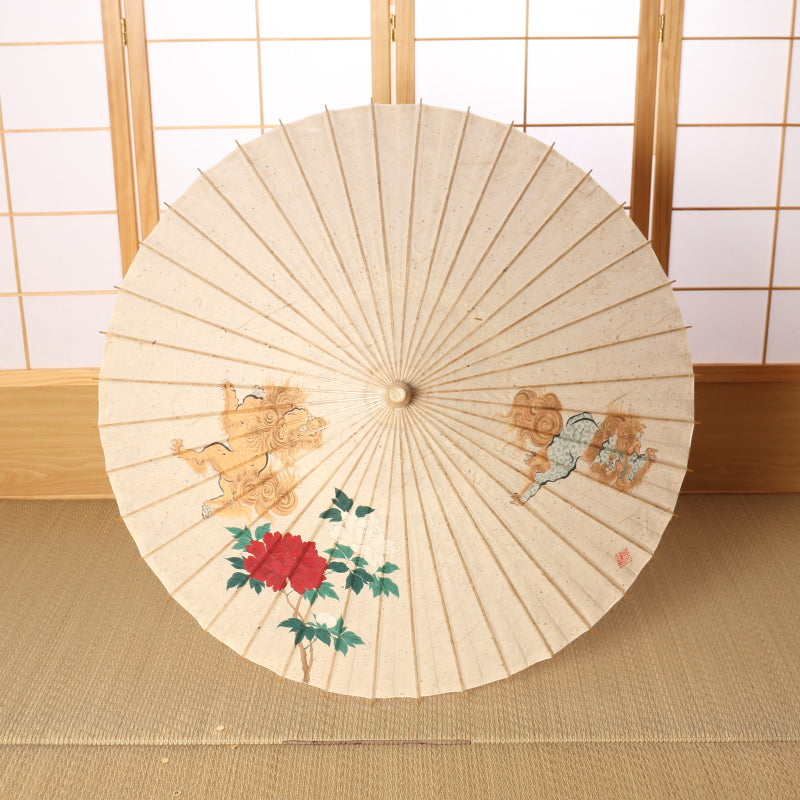
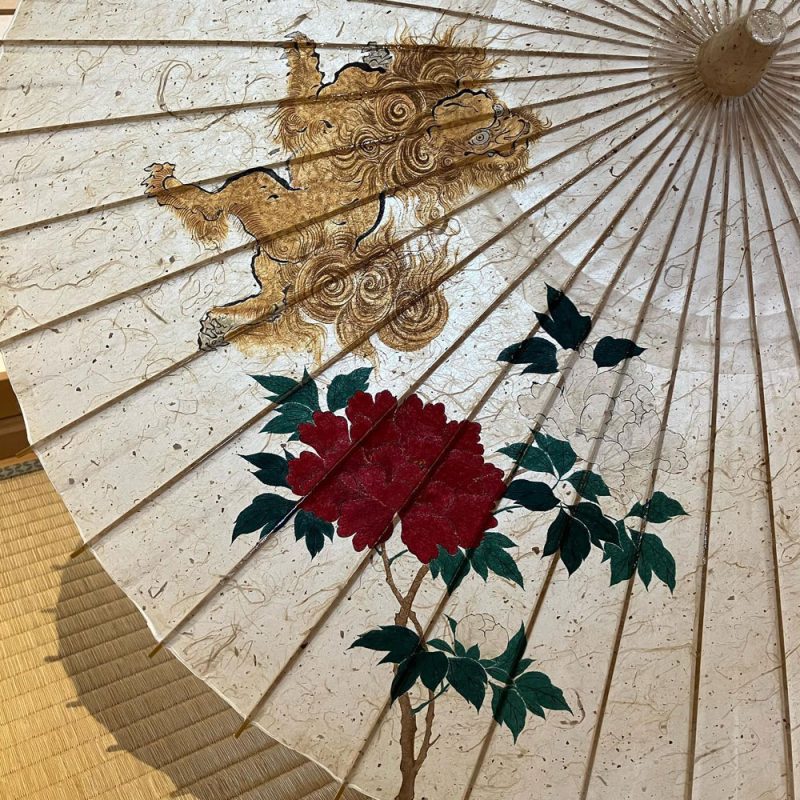
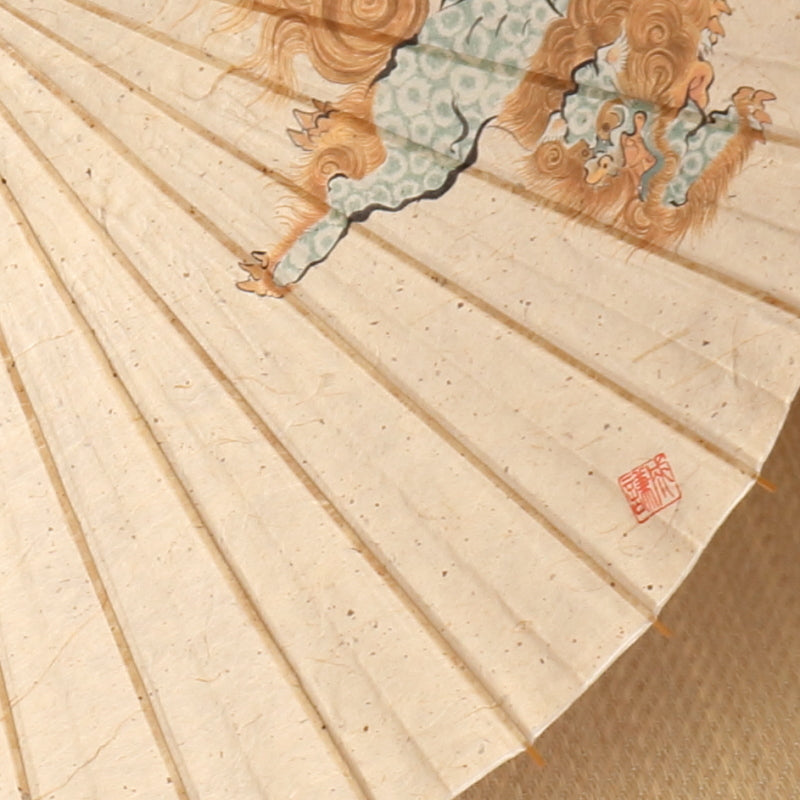
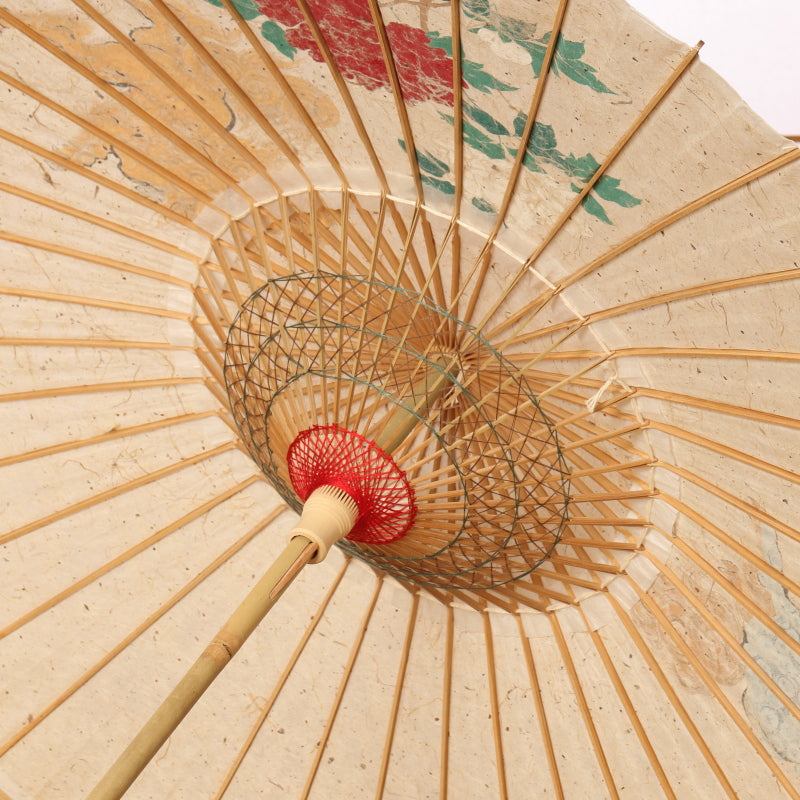
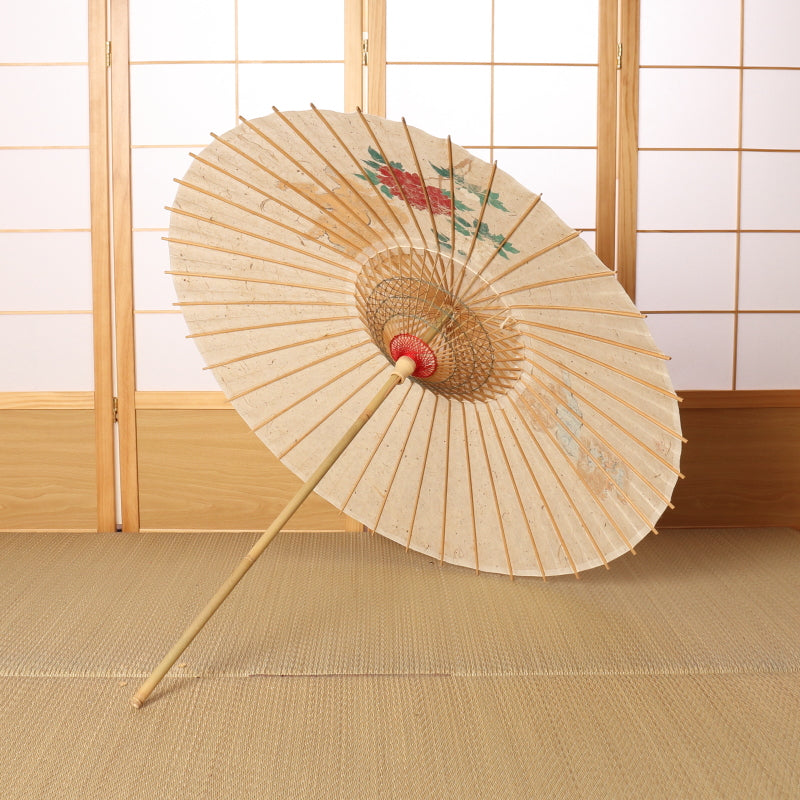
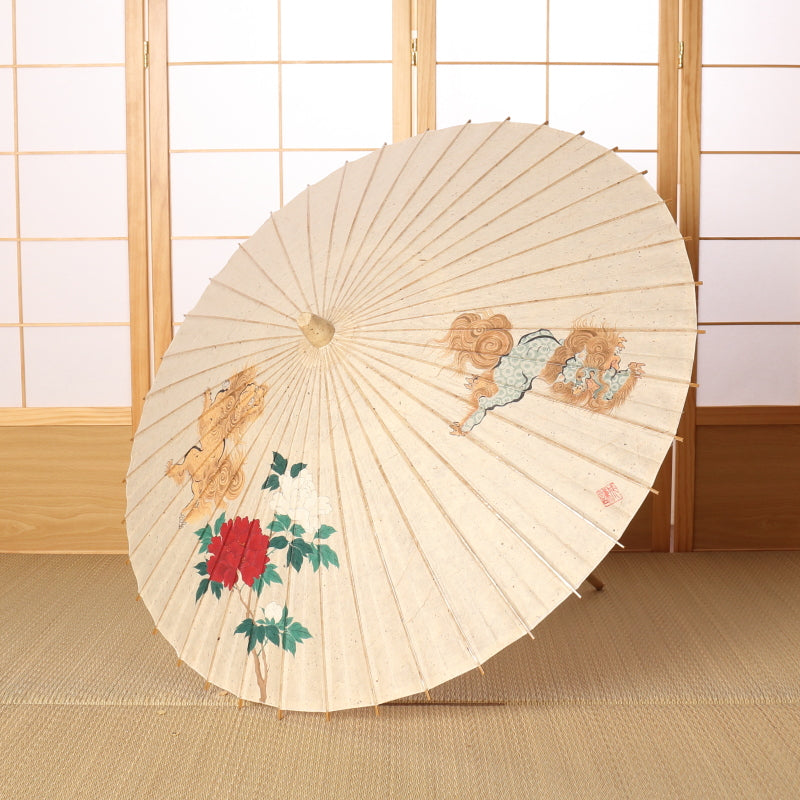
The combination of the lion, the king of beasts, and the peony, the king of flowers and a symbol of wealth, is called "Karajishibotan."
It has the auspicious meaning of protecting oneself, and is considered an auspicious motif that is a sign of good fortune.
The extremely elegant "Karajishi Peony" design was painted by a sketch artist at Kyo-Yuzen Kobo Seiken on Kurotani washi paper, an intangible cultural property of Kyoto Prefecture, and then made into a Japanese parasol by a craftsman at Tsujikura.
This is a unique item that you will want to give as a gift with prayers for good fortune.
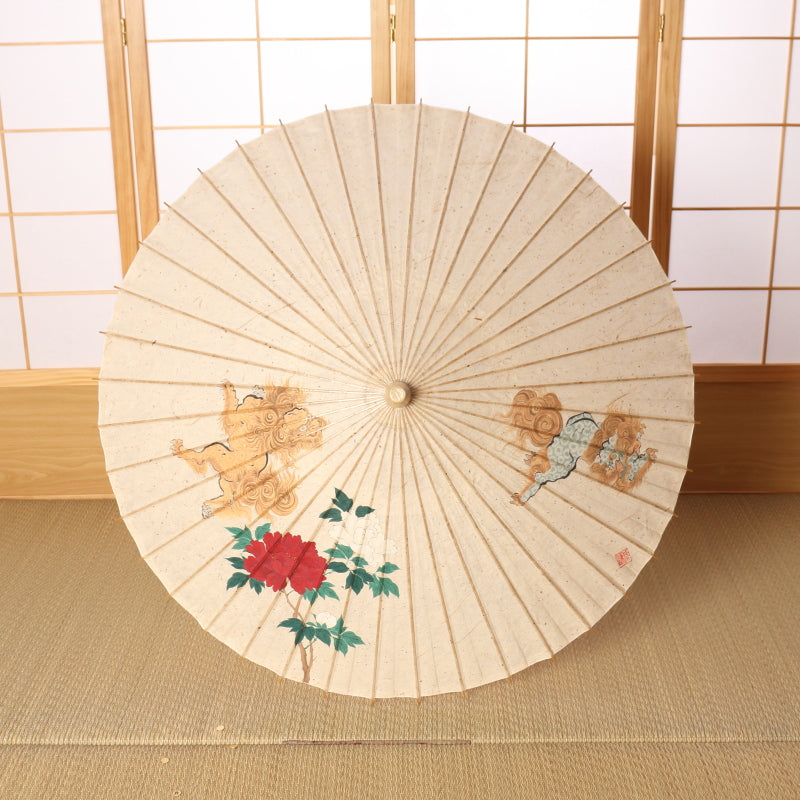
Hand-painted Kyoto Yuzen Japanese parasol [Karajishi Peony] ¥176,000 (tax included)
Specifications: Parasol, decorative Material: Handmade washi paper Color: White Decorative thread: Three colors Frame: 40 pieces of madake bamboo (translucent finish)
Handle: Bamboo Clasp: Wood Total length: Approx. 80.5cm
Diameter: Approx. 82cm
Weight: 260g
"Wind God and Thunder God/Fubuki Kurotani"
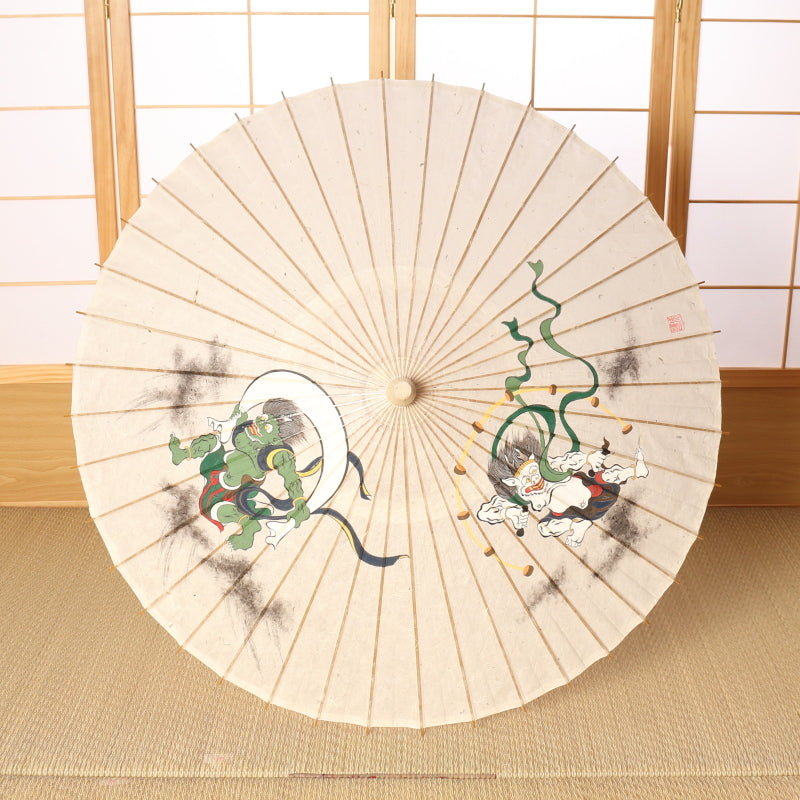
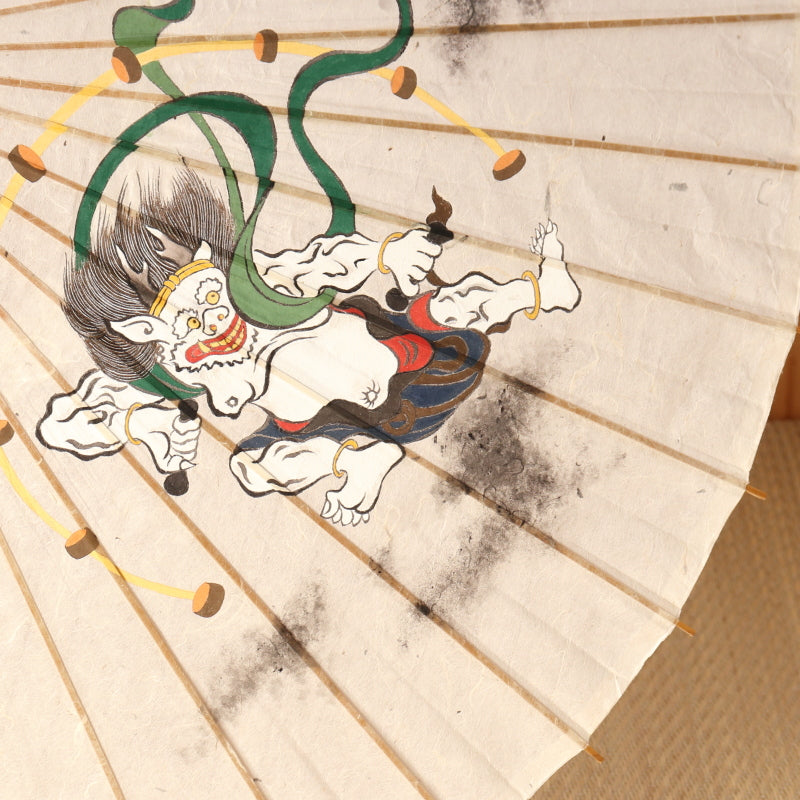
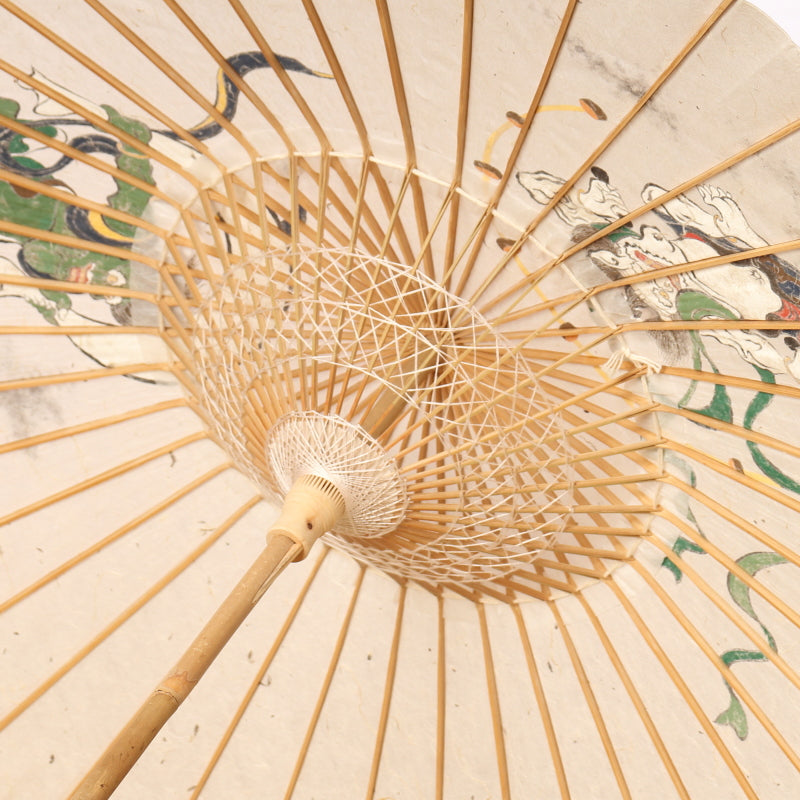
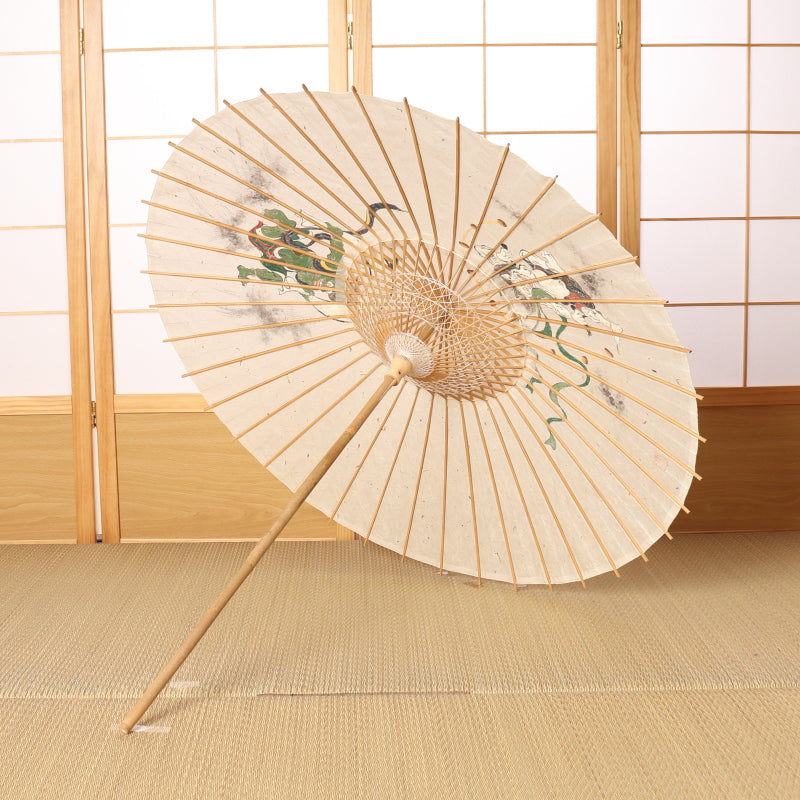
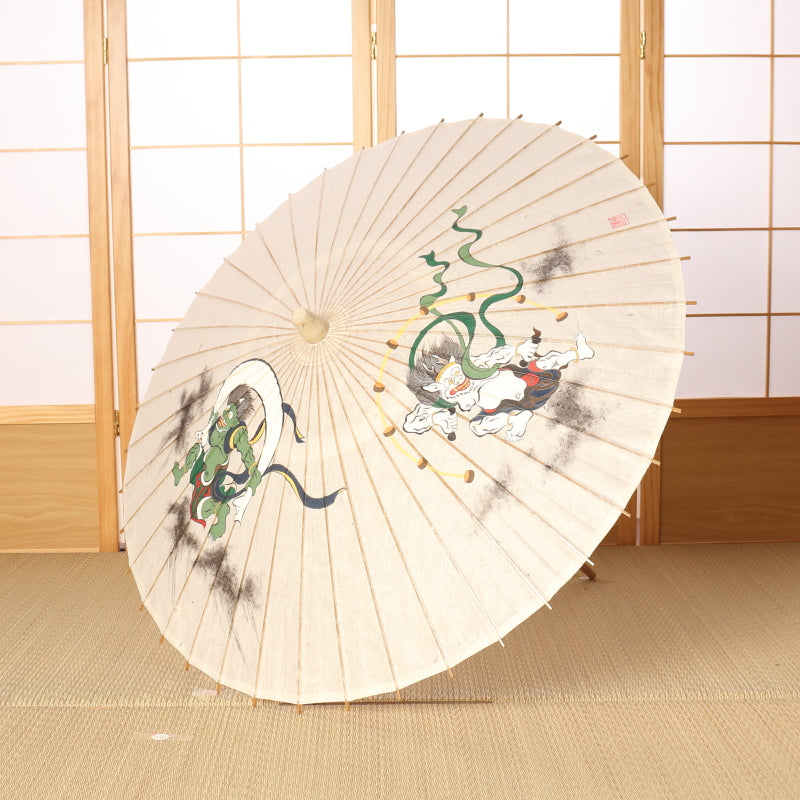
Each strand of hair is carefully drawn in detail, and the eyes are dynamic and powerful, as if they could jump out at any moment.
The brushwork of a skilled craftsman shines through.
This one-of-a-kind masterpiece was created through a collaboration between craftsman Seiken, Kurotani Washi paper, an intangible cultural property of Kyoto Prefecture, and the skilled craftsmen of Kyoto Wagasa-ya Tsujikura.
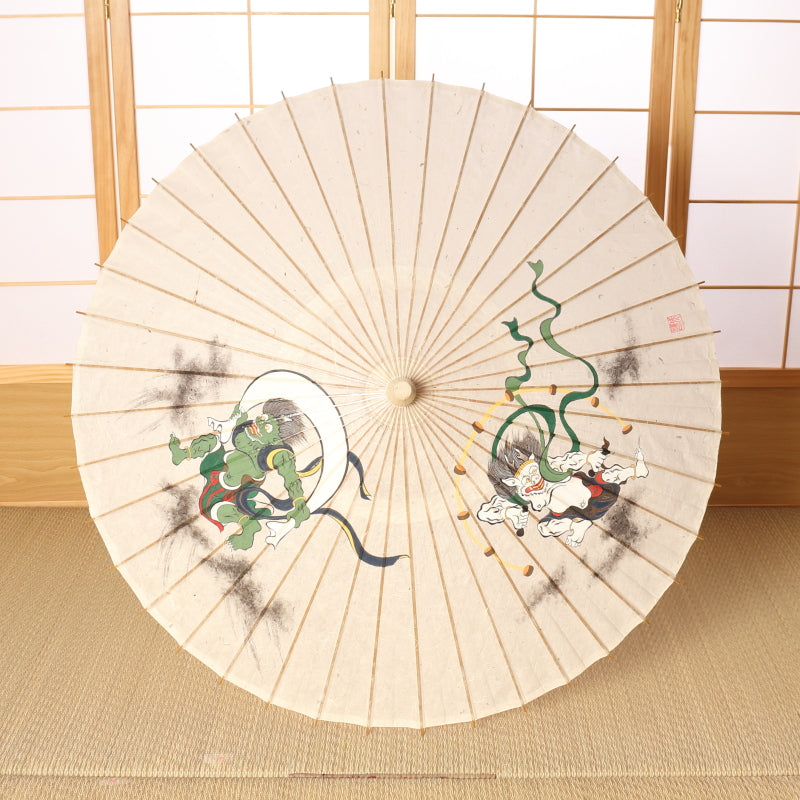
Hand-painted Kyoto Yuzen Japanese parasol [Wind God and Thunder God design/Kurotani washi paper] ¥176,000 (tax included)
Specifications: Parasol, decorative Material: Handmade Kurotani washi paper Color: White Decorative thread: Three colors Frame: 40 pieces of madake bamboo (translucent finish)
Handle: Bamboo Clasp: Wood Total length: Approx. 80.5cm
Diameter: Approx. 82cm
Weight: 260g
"Ito Jakuchu/Cactus/Flock of Chickens/Fubuki Kurodani"
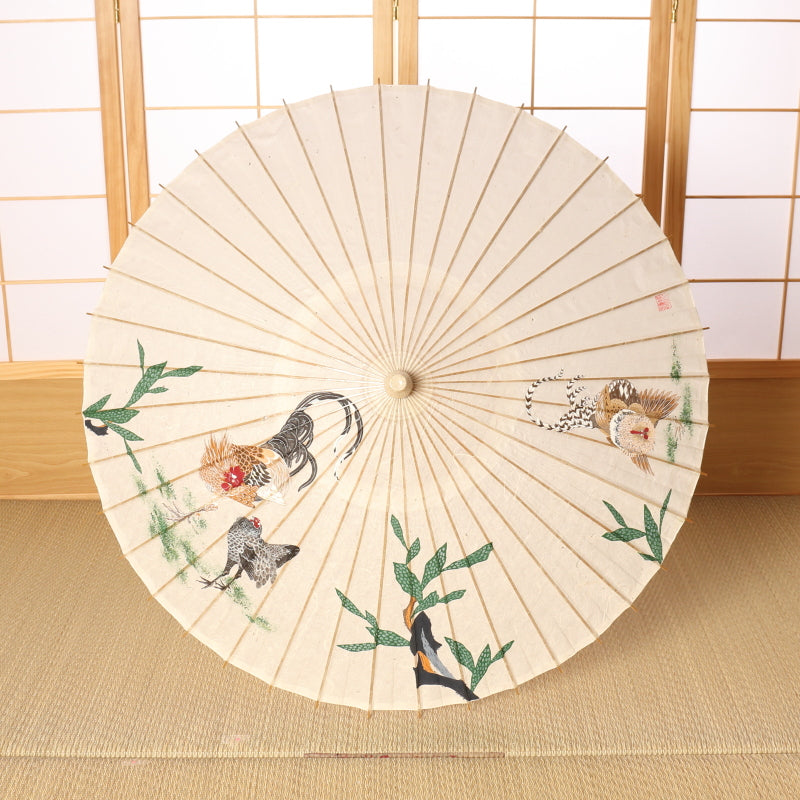
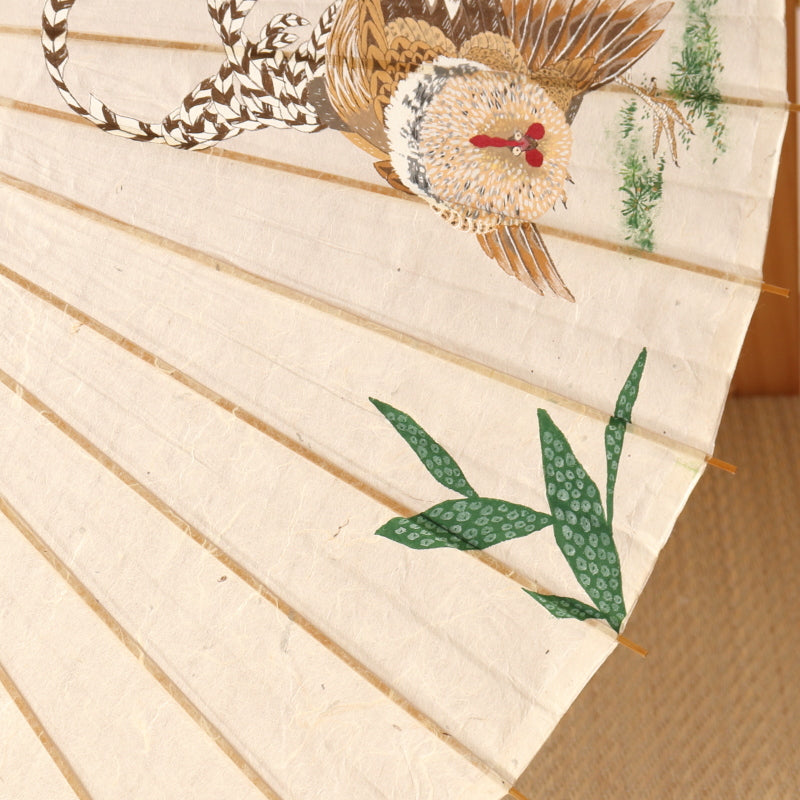
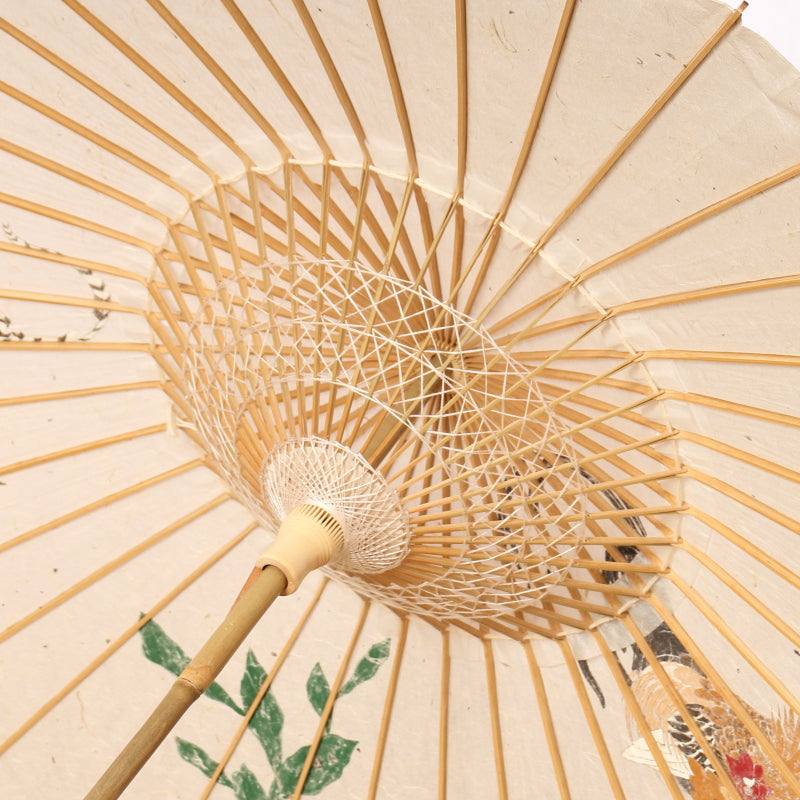
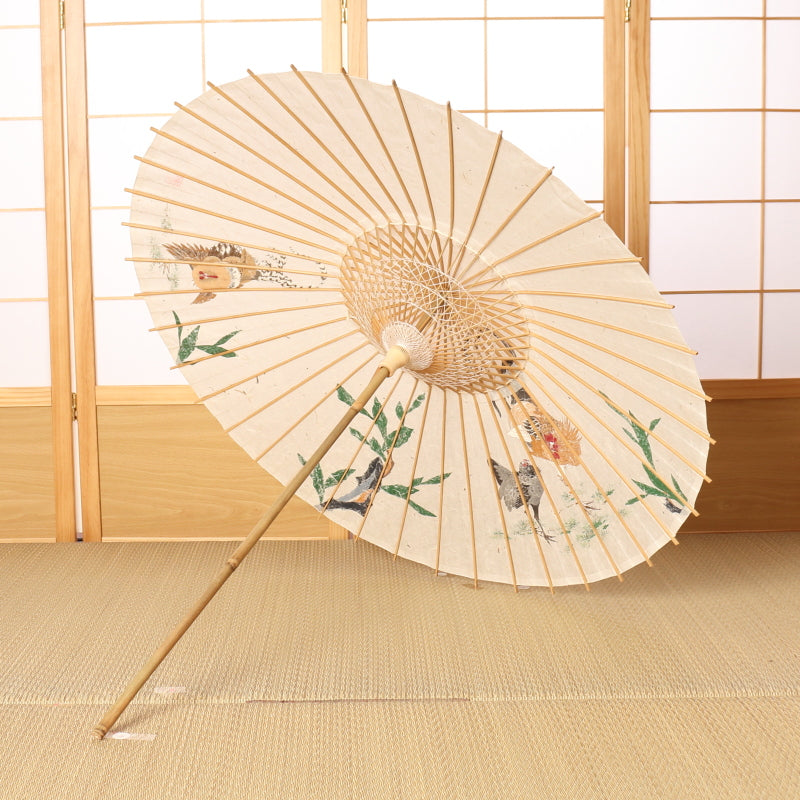
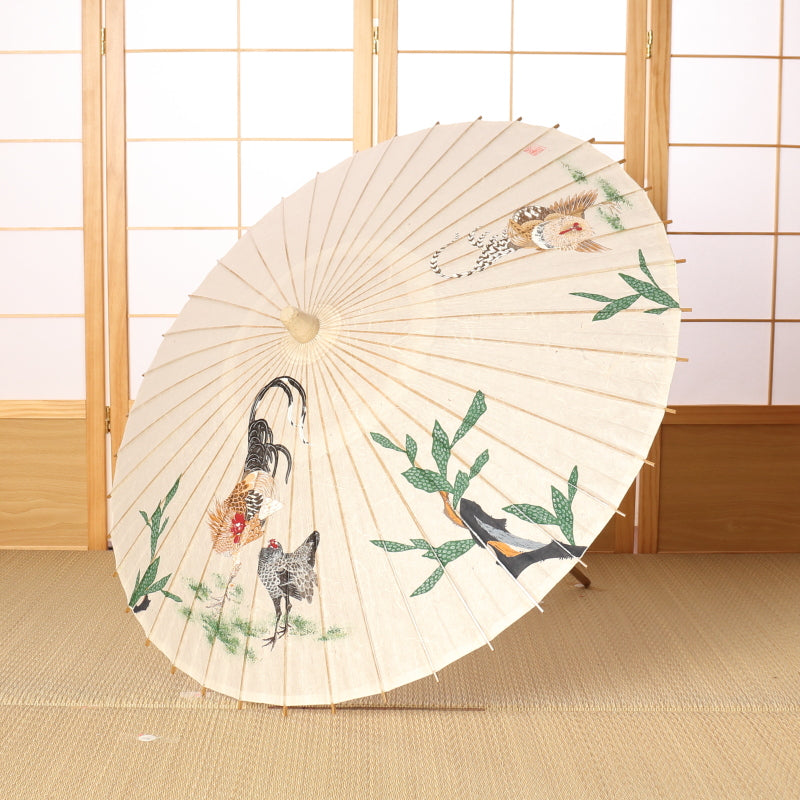
After thoroughly observing chickens for a year, Jakuchu continued sketching chickens for over two years, which enabled him to freely draw all kinds of living creatures.
It was drawn with incredible concentration and has a great sense of design.
This is a masterpiece that allows you to enjoy the world of Jakuchu through a Japanese umbrella.
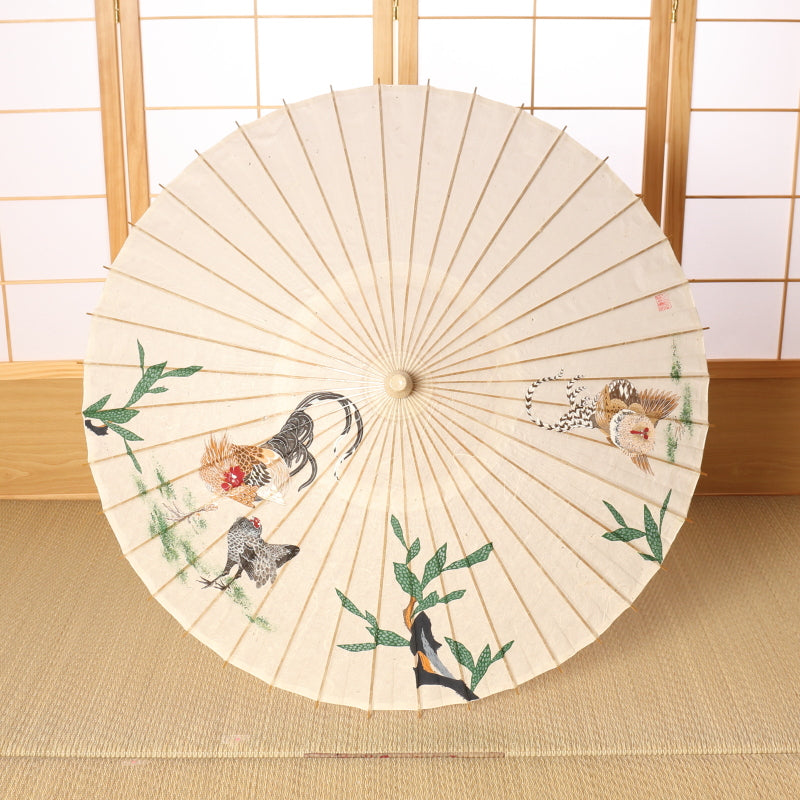
Hand-painted Kyoto Yuzen Japanese parasol "Ito Jakuchu/Cactus/Flock of chickens/Fubuki Kurotani"
¥176,000 (tax included)
Specifications: Parasol, decorative Material: Handmade Kurotani washi paper Color: White Decorative thread: Three colors Frame: 40 pieces of madake bamboo (translucent finish)
Handle: Bamboo Clasp: Wood Total length: Approx. 80.5cm
Diameter: Approx. 82cm
Weight: 260g
"Plovers in the Aboshi landscape"
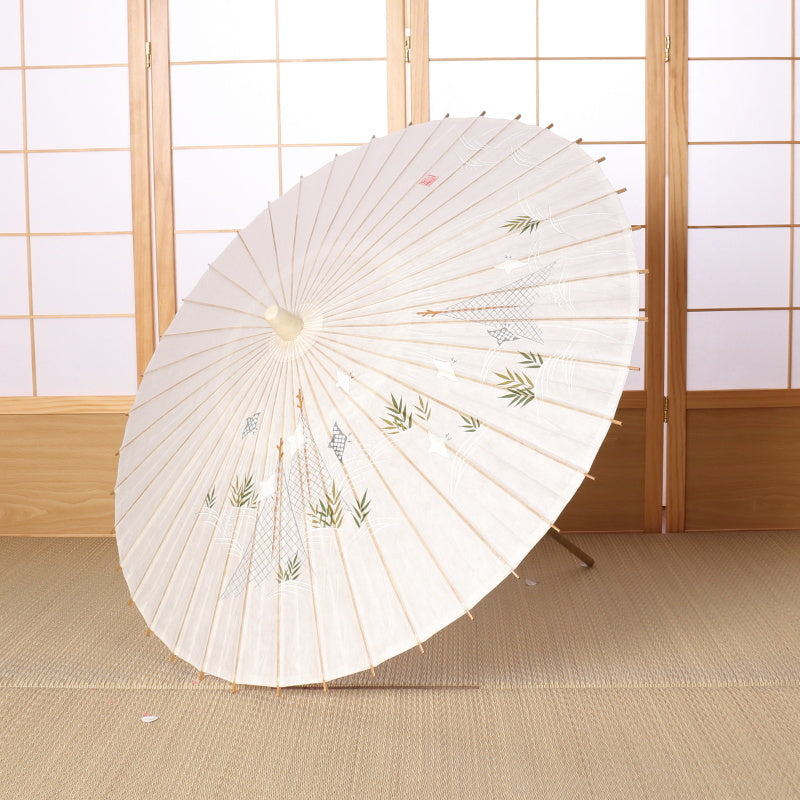
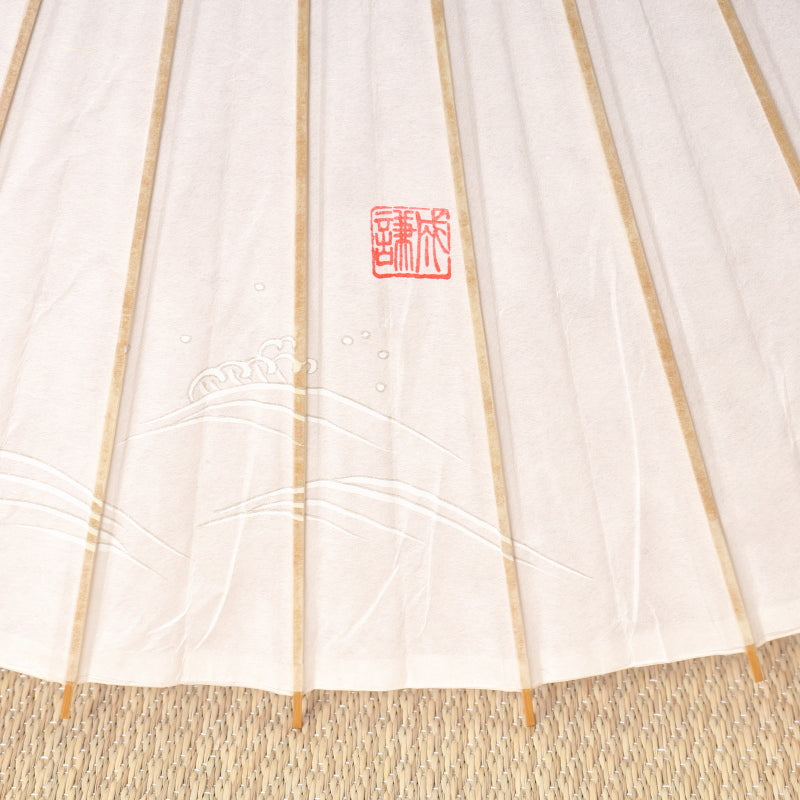
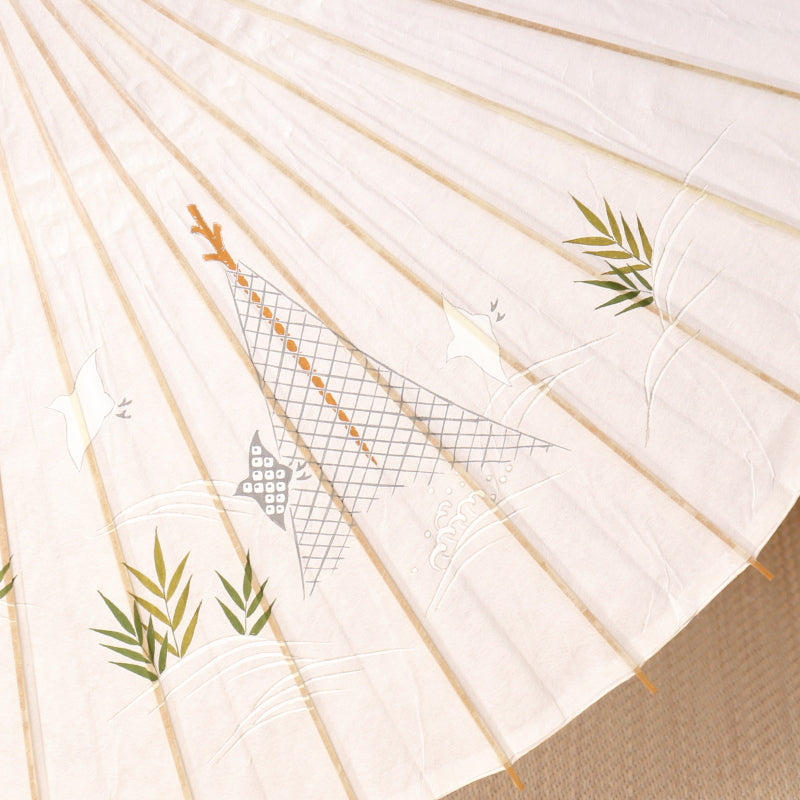
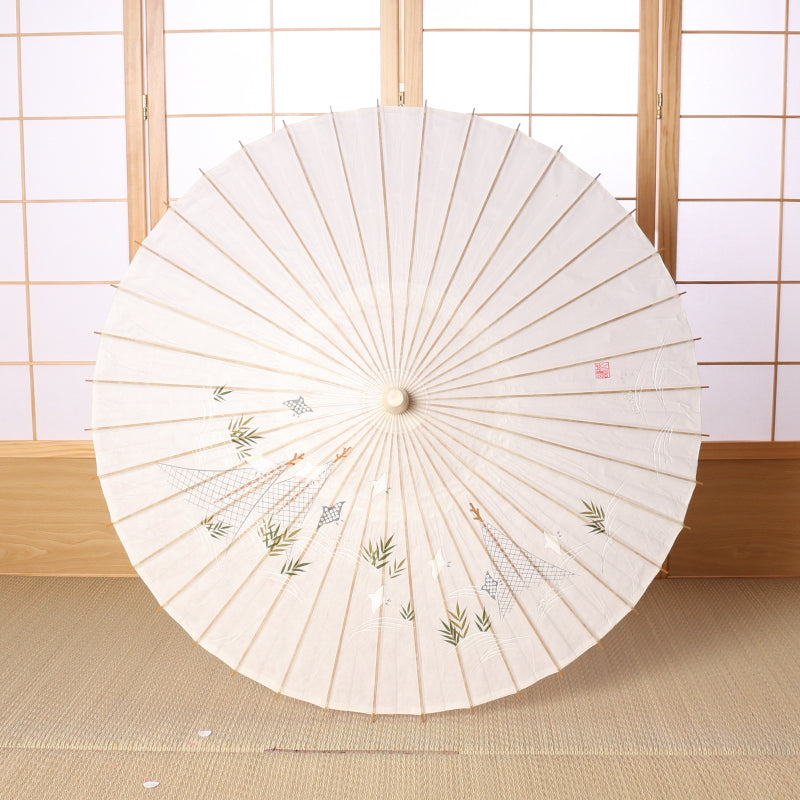
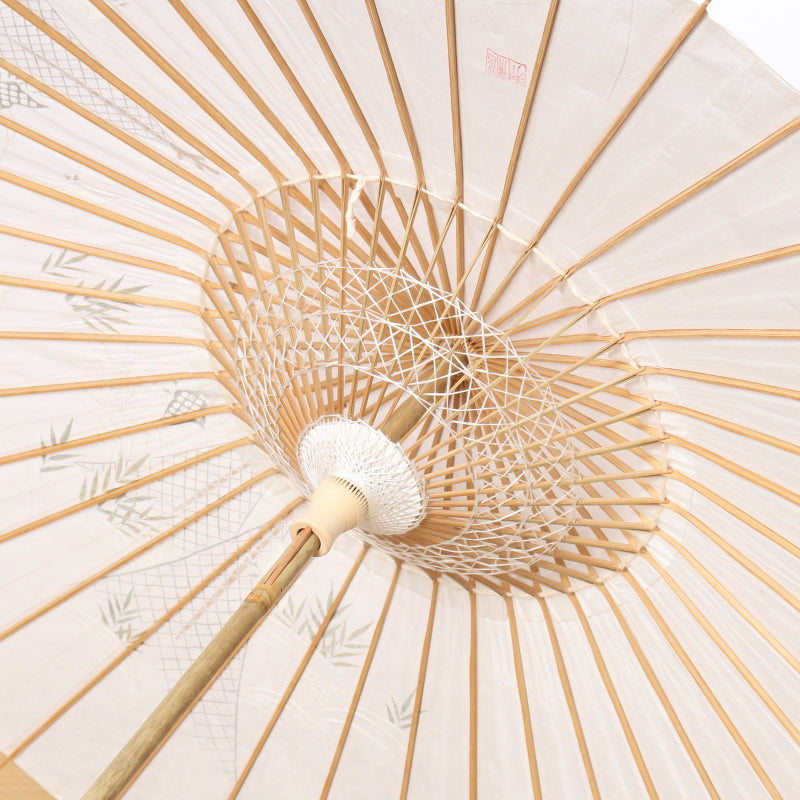
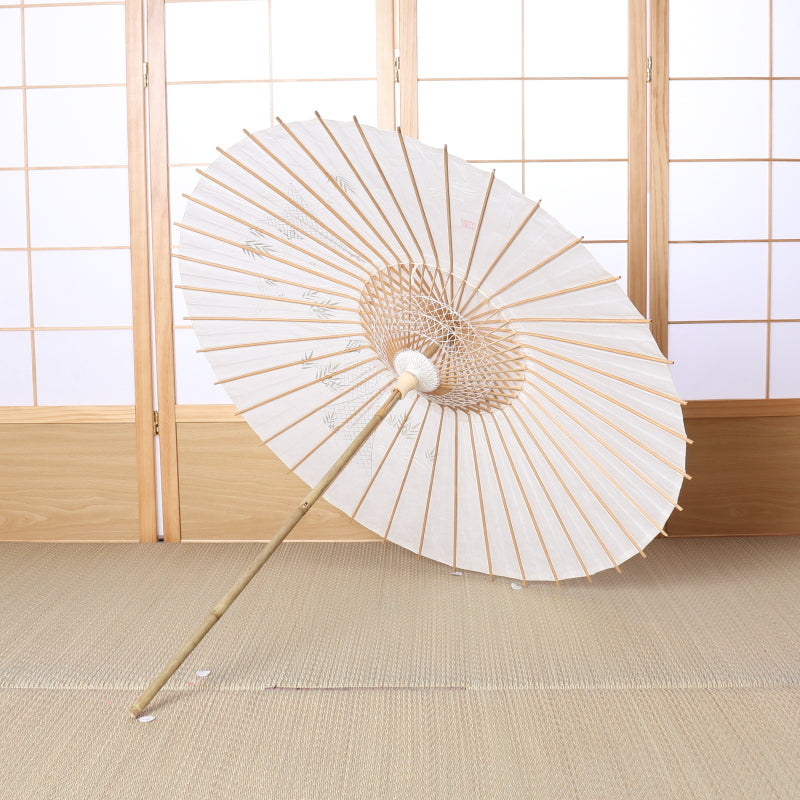
The plover pattern is known as an auspicious pattern and is used on auspicious occasions.
Aboshi Chidori is a pattern of dried fishing nets and plovers. The "chidori" in this pattern does not refer to a specific type of bird, but is a general term for birds of the plover family that live near water and fly in flocks. They are called "chidori" because they always fly in large numbers in flocks. Chidori are characterized by their three-toed feet that allow them to walk quickly on sandy areas such as beaches. The small and cute chidori began to be used as a pattern from the Heian period onwards, and were used on clothing, furnishings, and other items.
A flock of plovers flying along the shore has been delicately painted by Seiken's sketch artist.
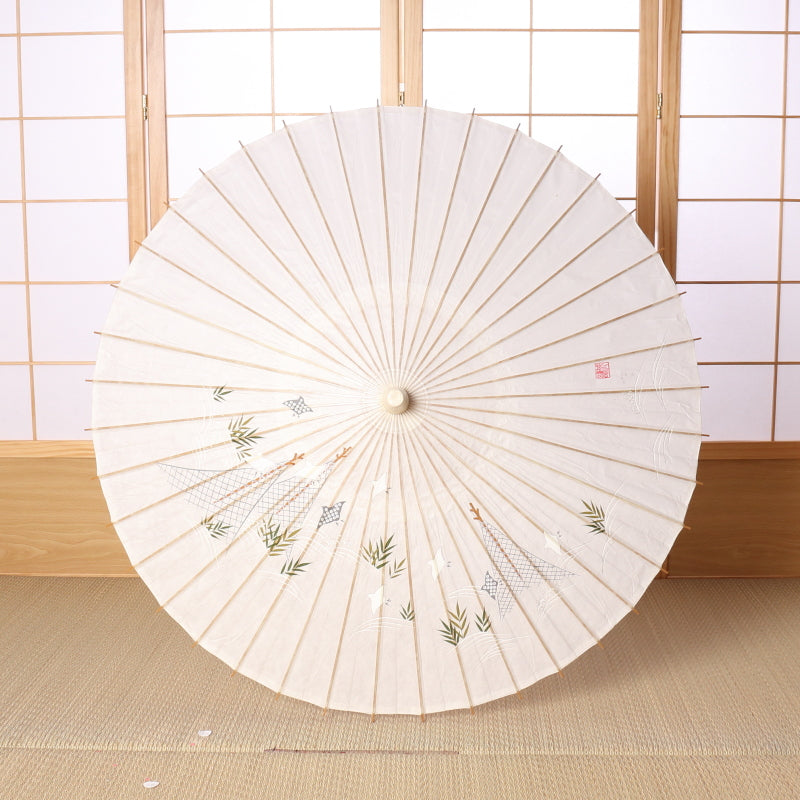
Hand-painted Kyoto Yuzen Japanese parasol "Chidori"
¥132,000(tax included)
Specifications: Parasol, decorative Material: Handmade washi paper Color: White Decorative thread: White Frame: 40 pieces of madake bamboo (translucent finish)
Handle: Bamboo Clasp: Wood Total length: Approx. 80.5cm
Diameter: Approx. 82cm
Weight: 260g
"Iris Yatsuhashi"
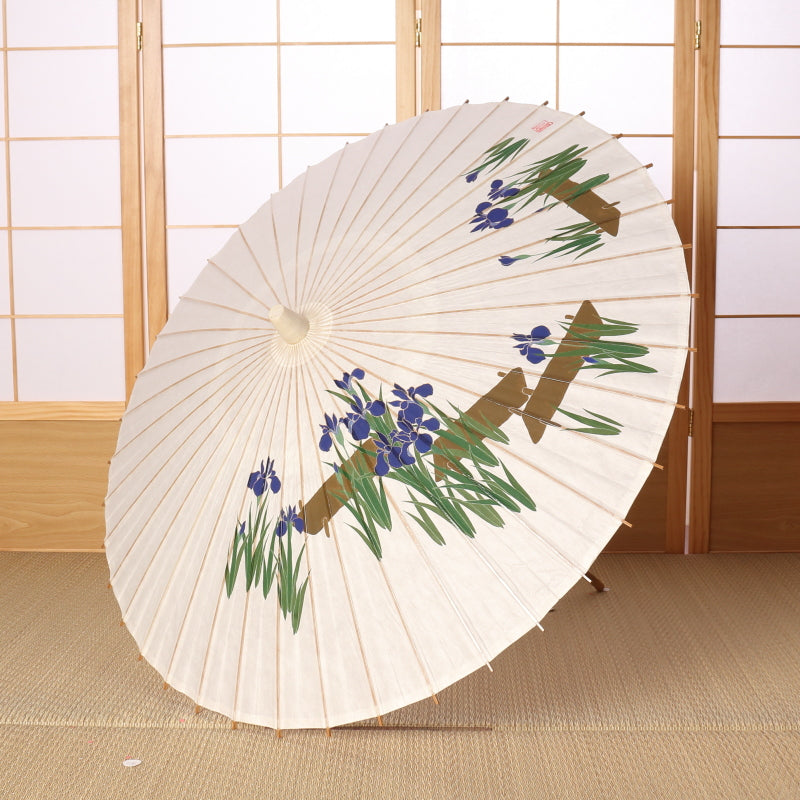
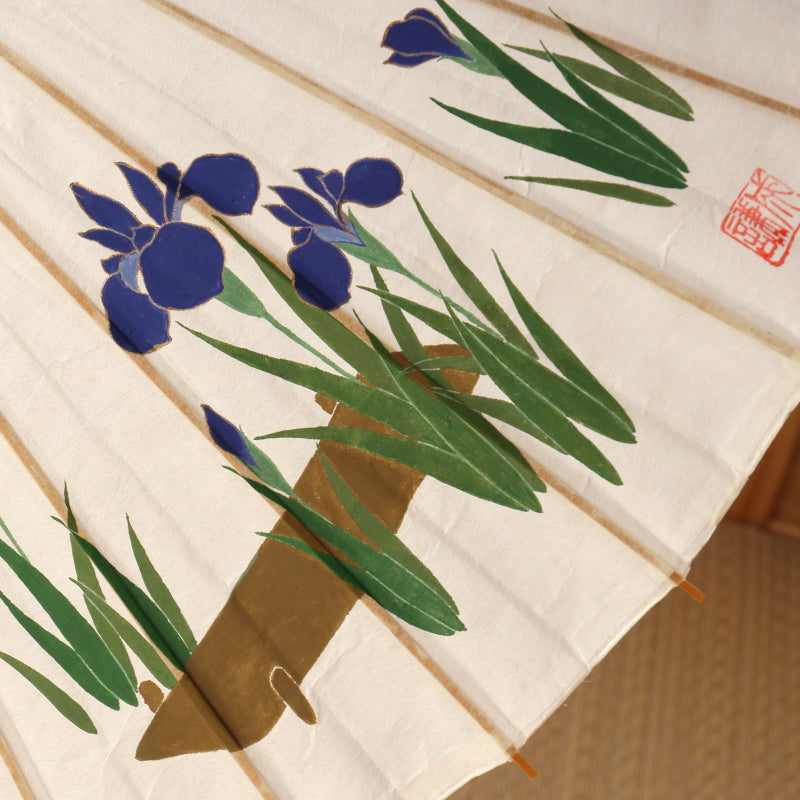
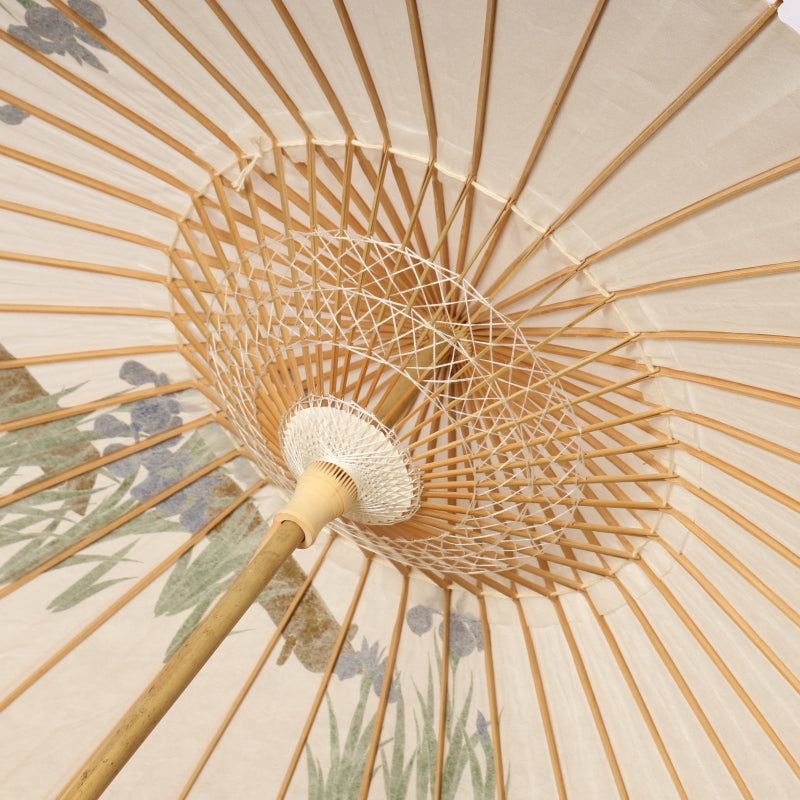
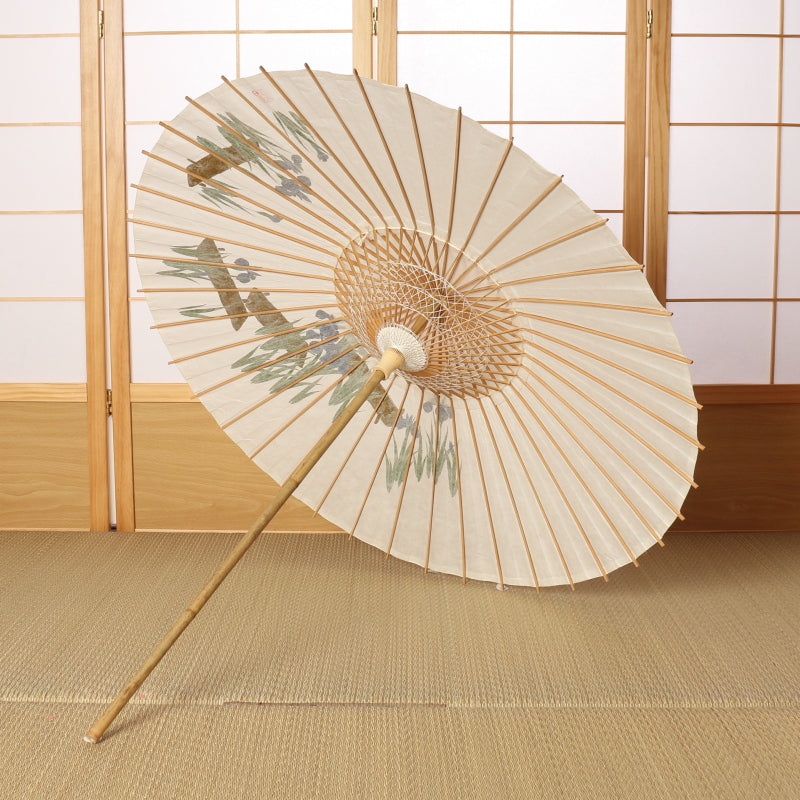
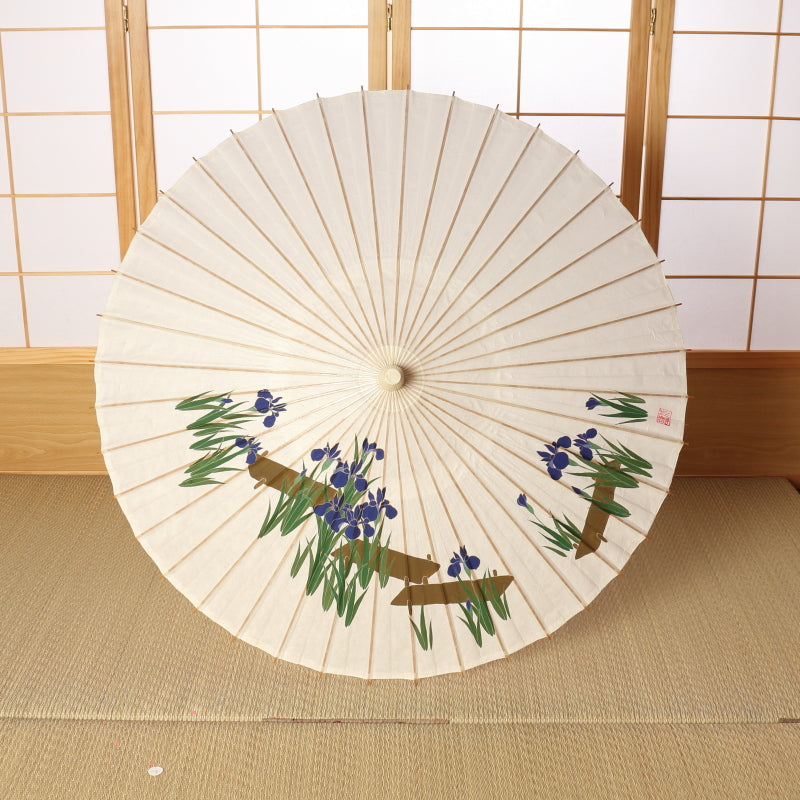
A bridge made of short planks that are folded and connected. This is the "Yatsuhashi." It is a bridge for strolling so that you can take your time admiring the flowers.
This design features eight bridges and irises by Ogata Korin (1658-1716), a central artist of the Rinpa school.
The design was painted on Japanese paper by a sketch artist from Seiken, a craft dyeing artisan renowned for its expression based on the Rinpa school, with realistic elements and the sophistication of Kyoto Yuzen.
Each carefully painted iris stalk and each petal of the iris is adorned with gold leaf.
This is a piece that exudes subtle luxury and elegance.
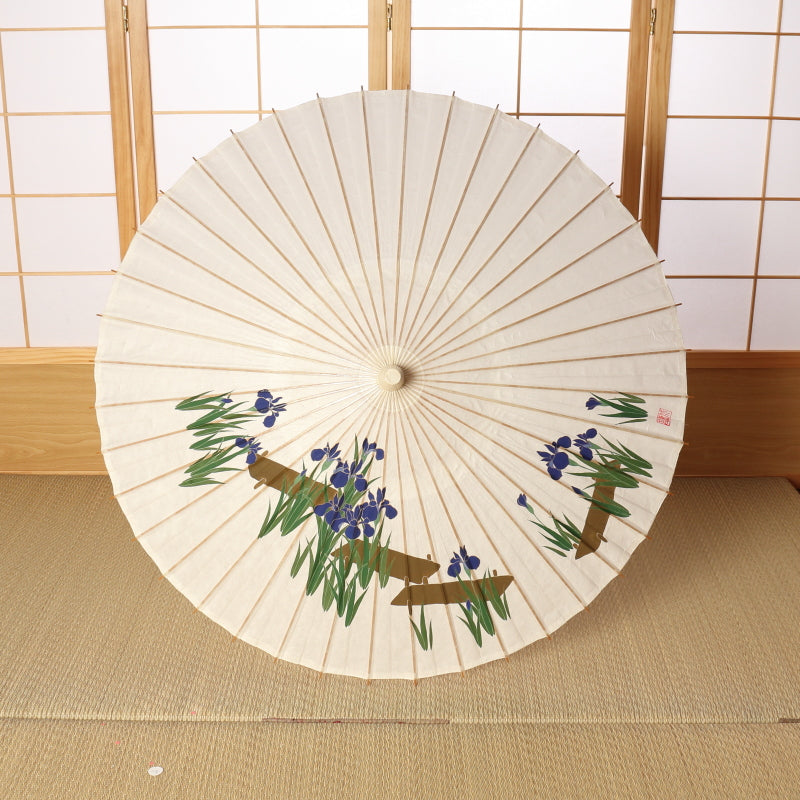
Hand-painted Kyoto Yuzen Japanese parasol "Iris Yatsuhashi"
¥132,000(tax included)
Specifications: Parasol, decorative Material: Handmade washi paper Color: White Decorative thread: White Frame: 40 pieces of madake bamboo (translucent finish)
Handle: Bamboo Clasp (fastener): Wood Total length: Approx. 80.5cm
Diameter: Approx. 82cm
Weight: 260g
"Ito Jakuchu: Birds, Animals, Flowers and Trees"
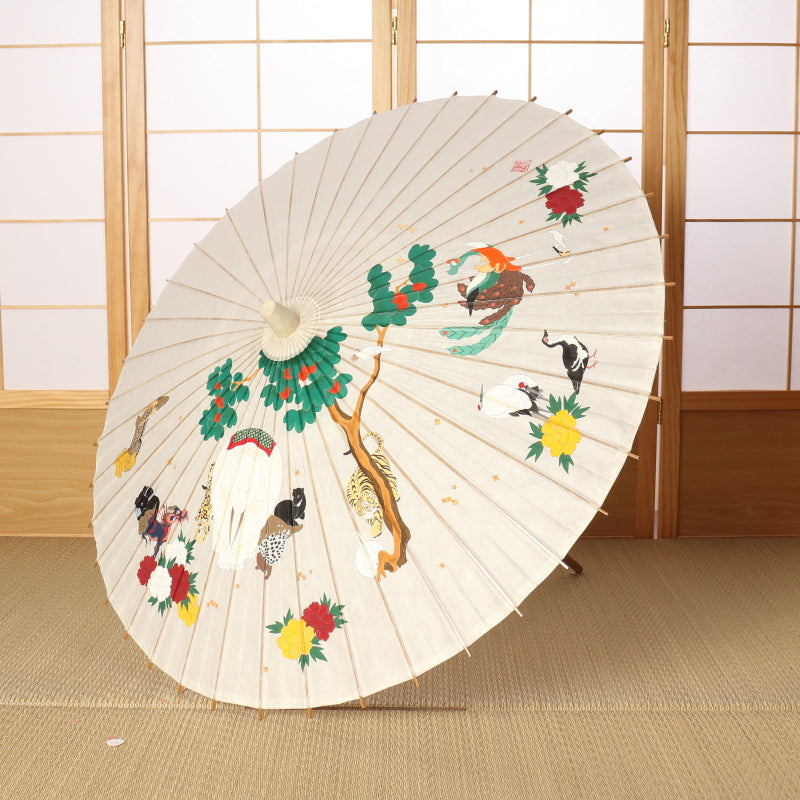
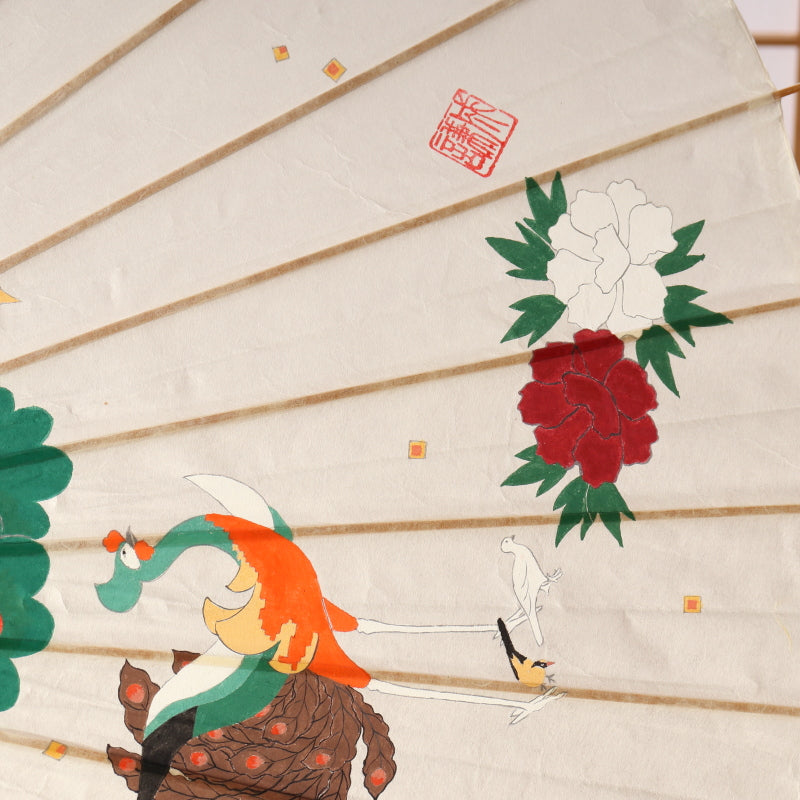
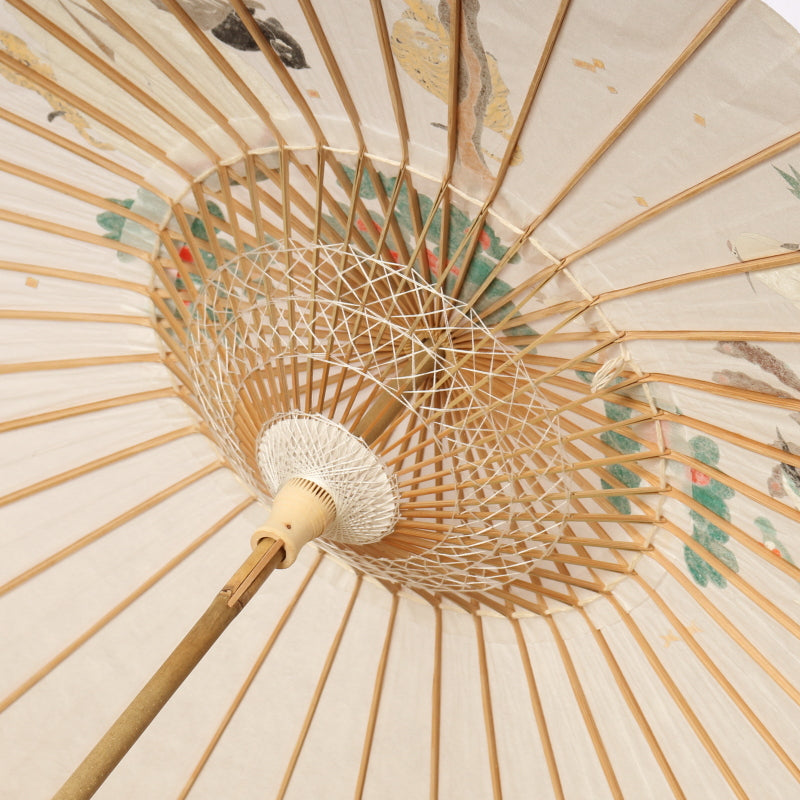
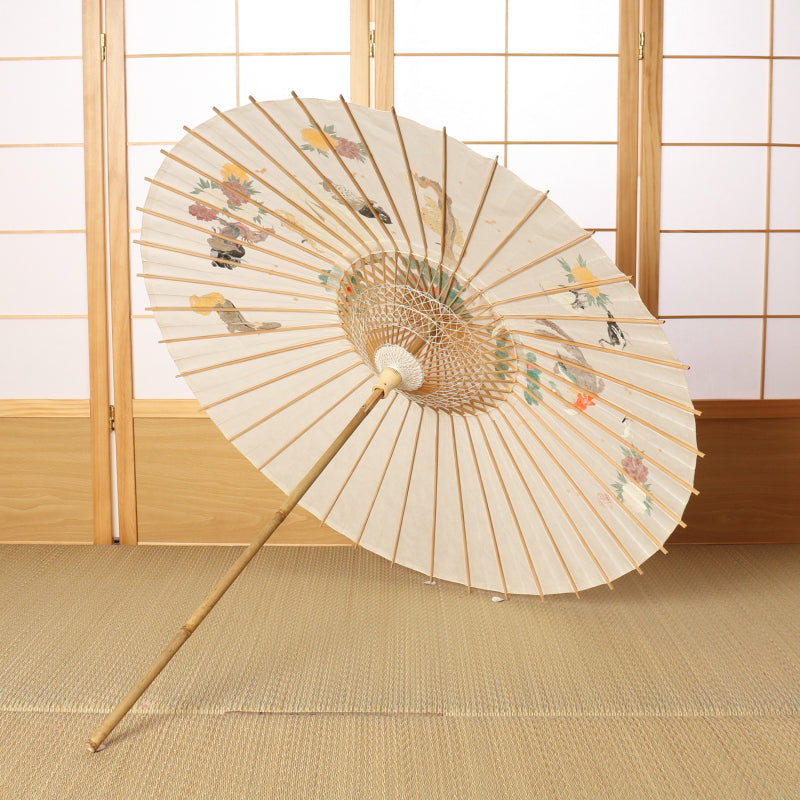
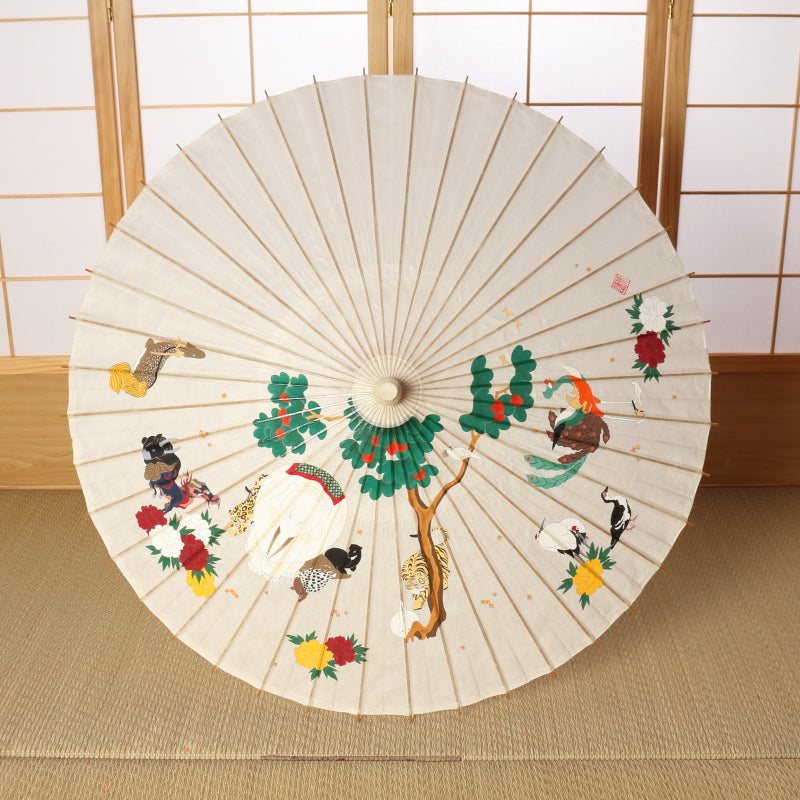
Ito Jakuchu 1716-1800 Age: 84 years old He was born as the eldest son of a vegetable wholesaler in Nishiki-koji, Kyoto. Having grown up surrounded by the bounty of the sea and mountains, Jakuchu was able to paint the objects in front of him and express their true nature.
The chickens, insects, seafood, and flowers are painted in eye-catching, vivid colors with incredible concentration, giving the piece a superior design.
This painting of Birds, Animals, Flowers and Trees by Jakuchu was painted on Japanese paper by a sketch artist at the craft dyeing artisan "Seike", and then made into a Japanese parasol by the Japanese umbrella craftsmen of Tsujikura.
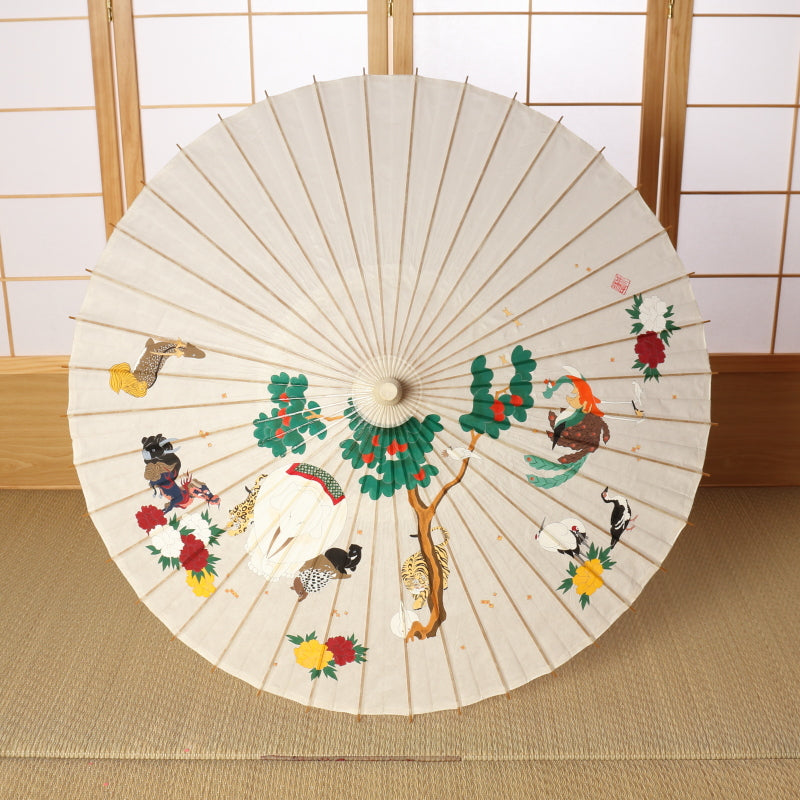
Hand-painted Kyoto Yuzen Japanese parasol "Ito Jakuchu: Birds, Animals, Flowers and Trees"
¥154,000(tax included)
Specifications: Parasol, decorative Material: Handmade washi paper Color: White Decorative thread: White Frame: 40 pieces of madake bamboo (translucent finish)
Handle: Bamboo Clasp: Wood Total length: Approx. 80.5cm
Diameter: Approx. 82cm
Weight: 260g
"Rangiku"

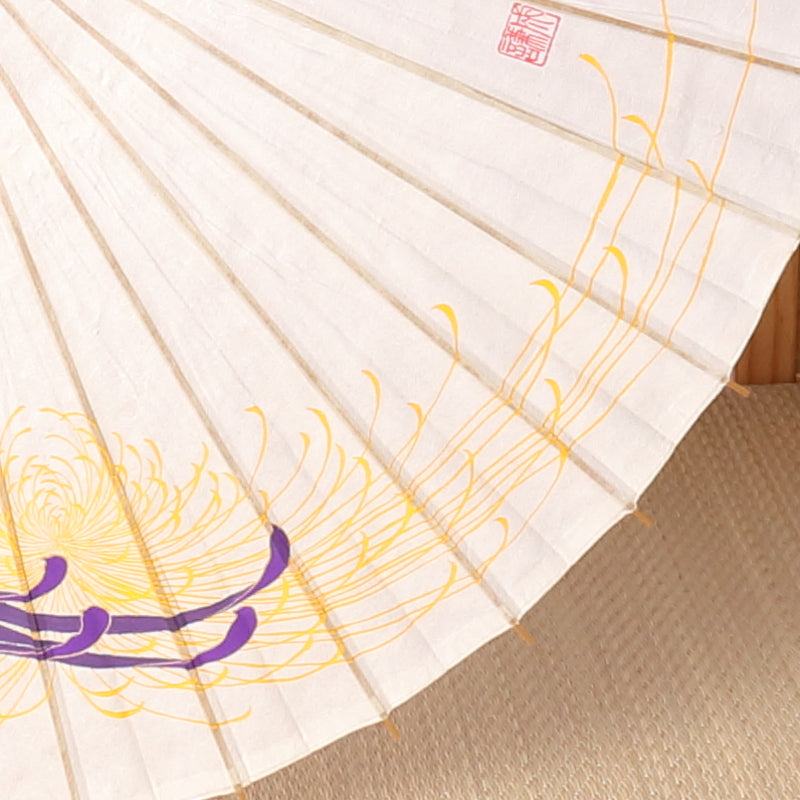
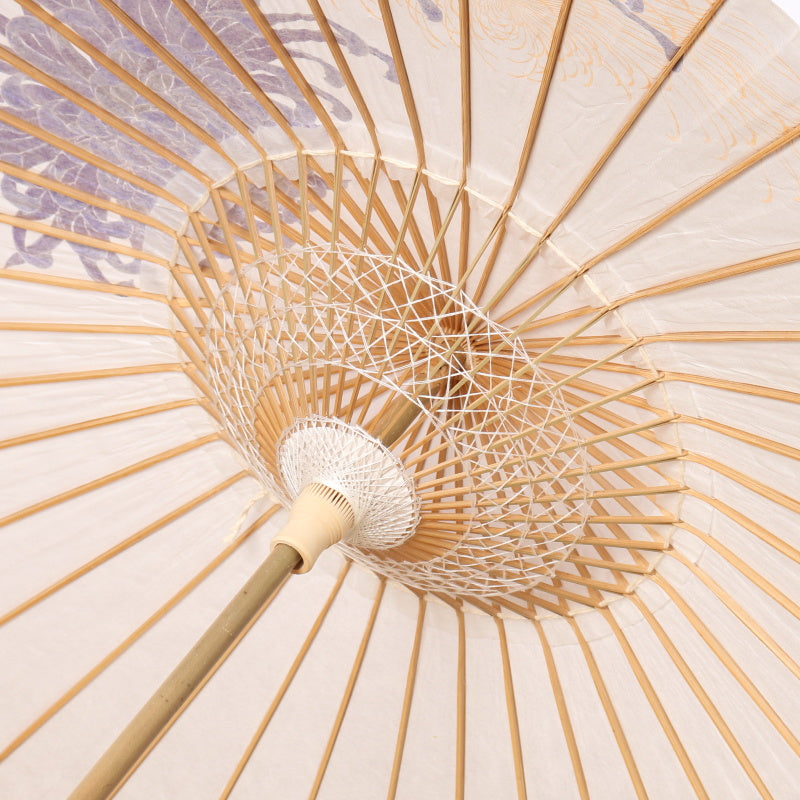
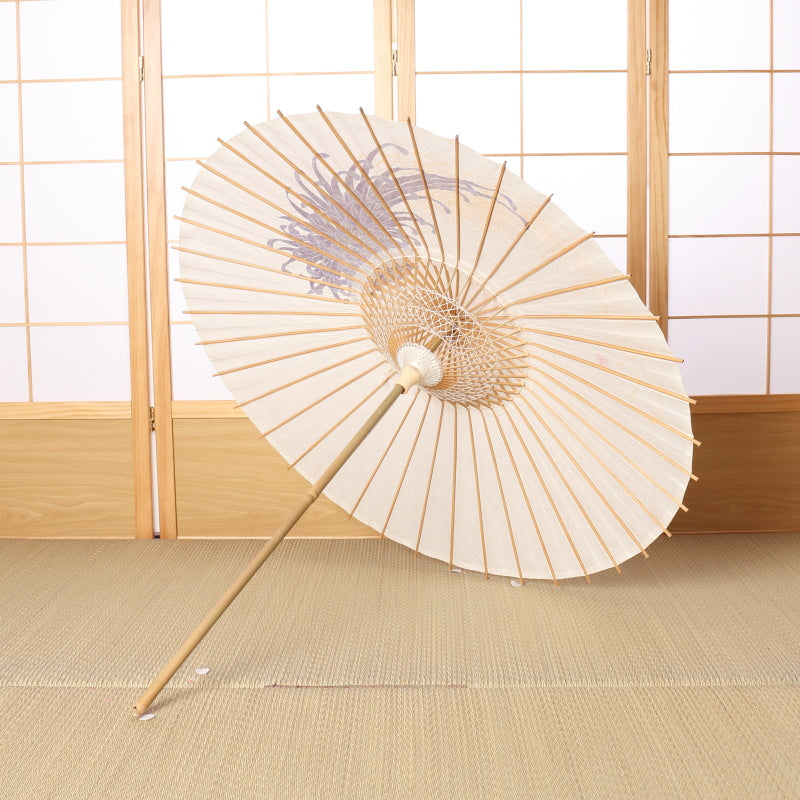
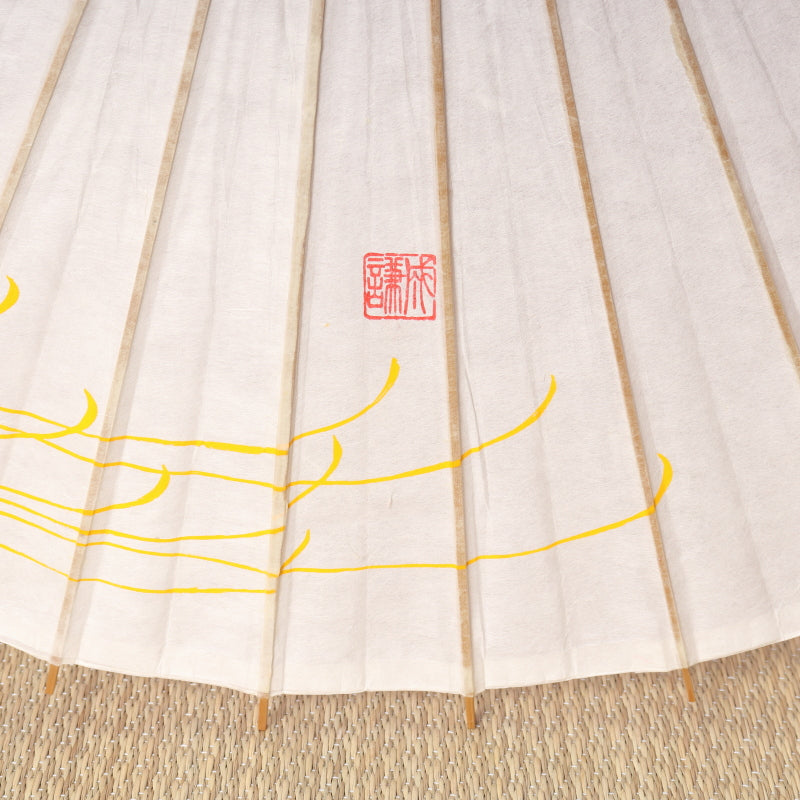
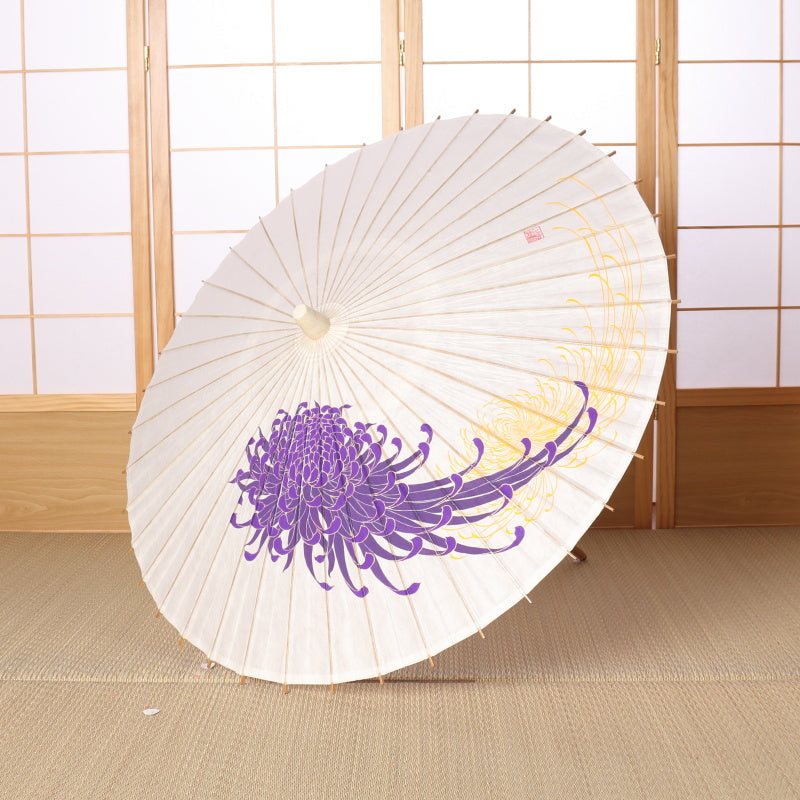
Each and every petal of the chrysanthemum is carefully painted.
The shades of each petal and the glossy gold edges are all beautiful.
This is a piece that exudes elegance and subtle luxury.
Chrysanthemums are also popular as medicinal herbs in China and are believed to promote eternal youth and longevity.
This masterpiece was created through a collaboration between craft dyer Seiken and Kyoto Japanese umbrella maker Tsujikura.
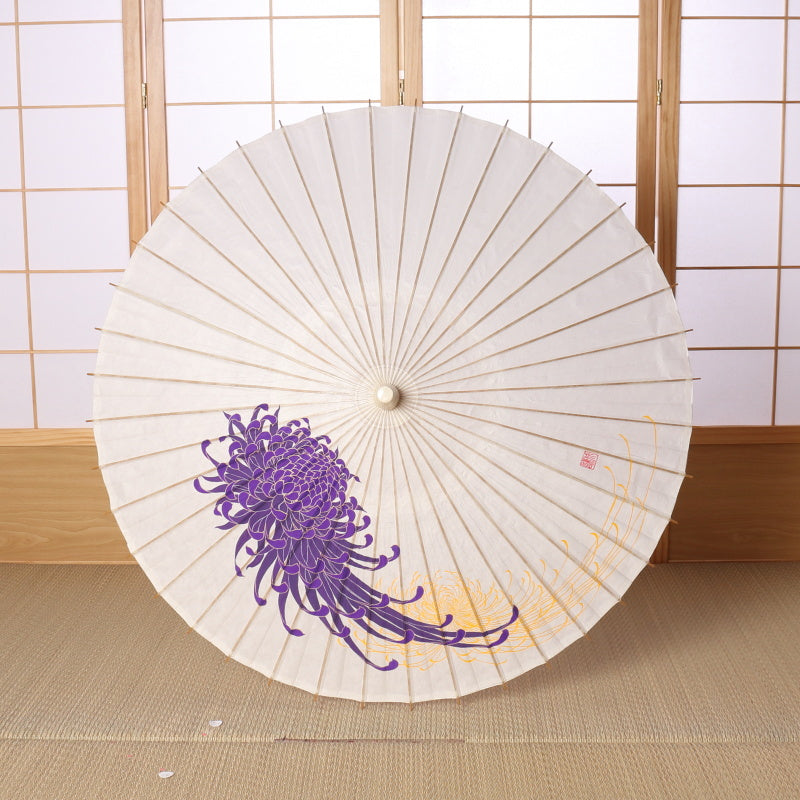
Hand-painted Kyoto Yuzen Japanese parasol "Chrysanthemum"
¥132,000(tax included)
Specifications: Parasol, decorative Material: Handmade washi paper Color: White Decorative thread: White Frame: 40 pieces of madake bamboo (translucent finish)
Handle: Bamboo Clasp: Wood Total length: Approx. 80.5cm
Diameter: Approx. 82cm
Weight: 260g
"Red and White Plum Blossoms Kanze Stream"
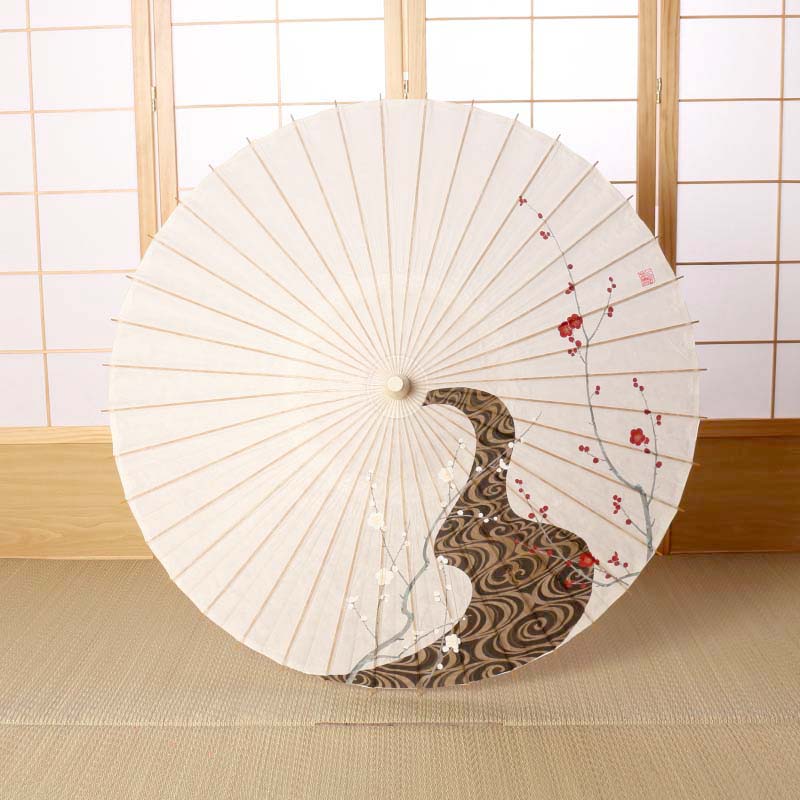
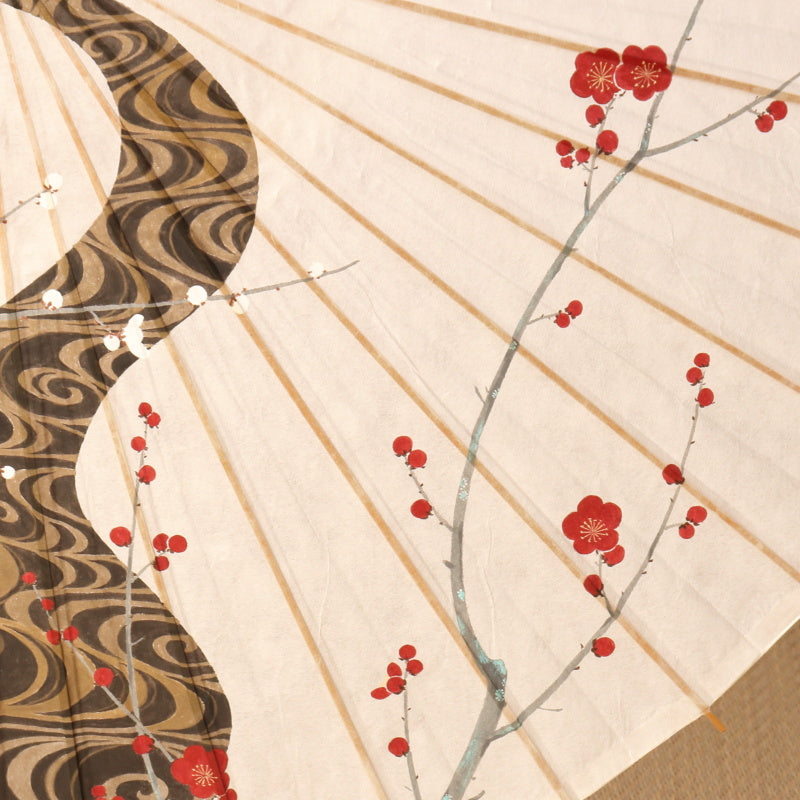
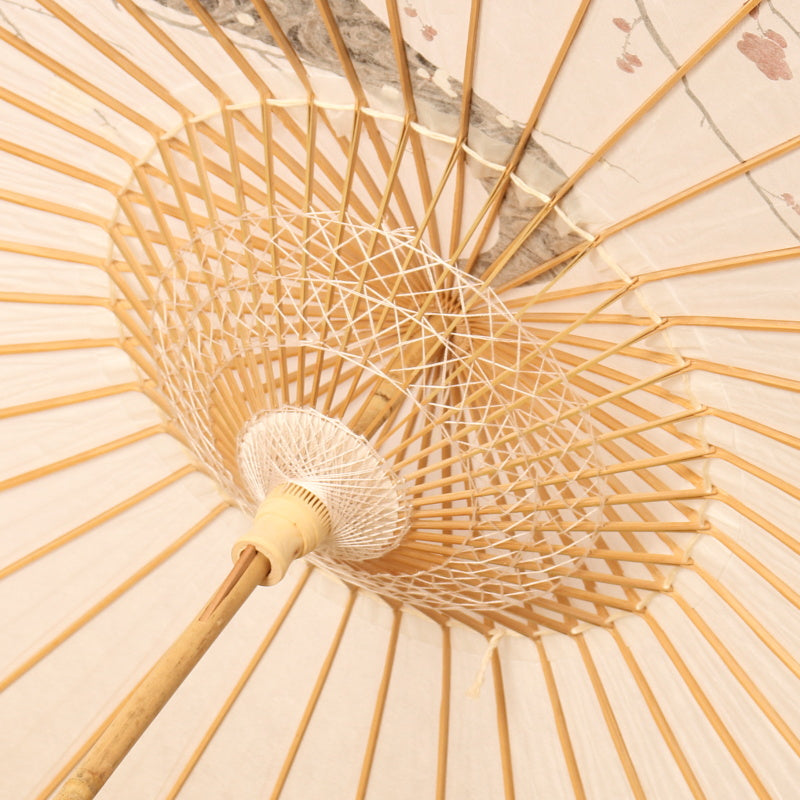
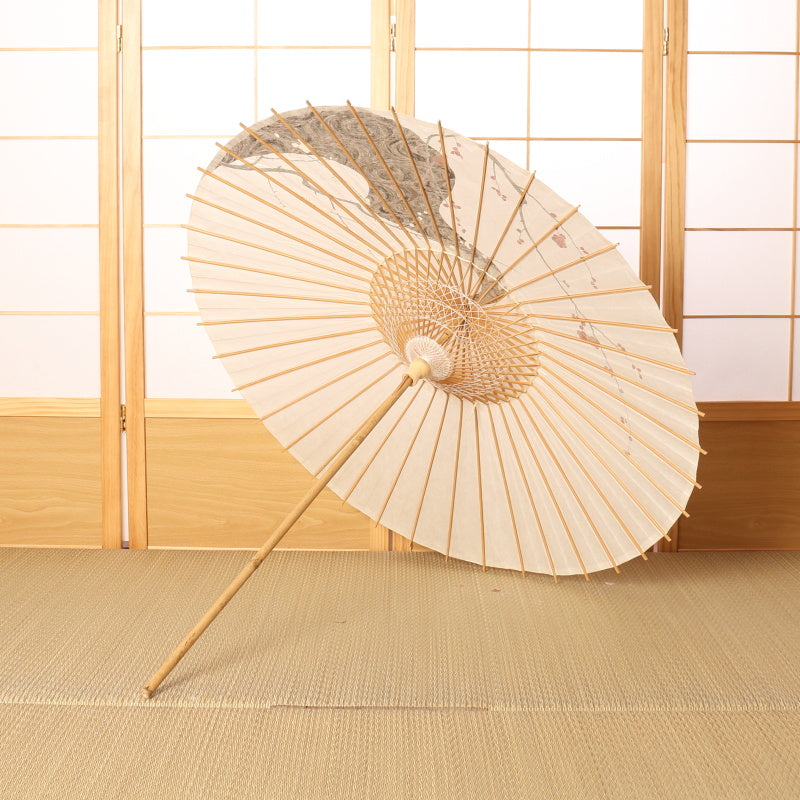
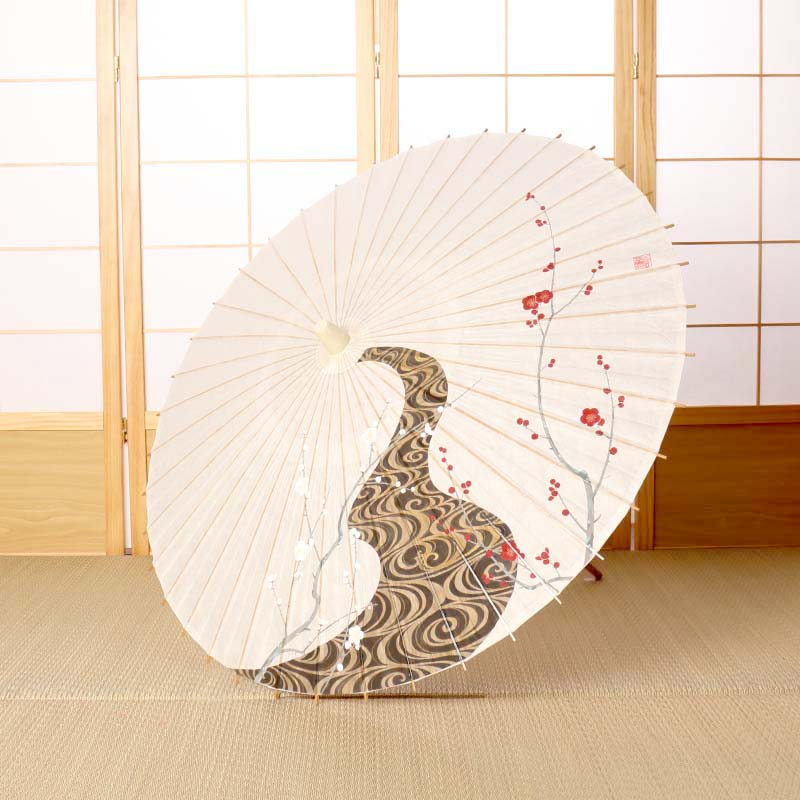
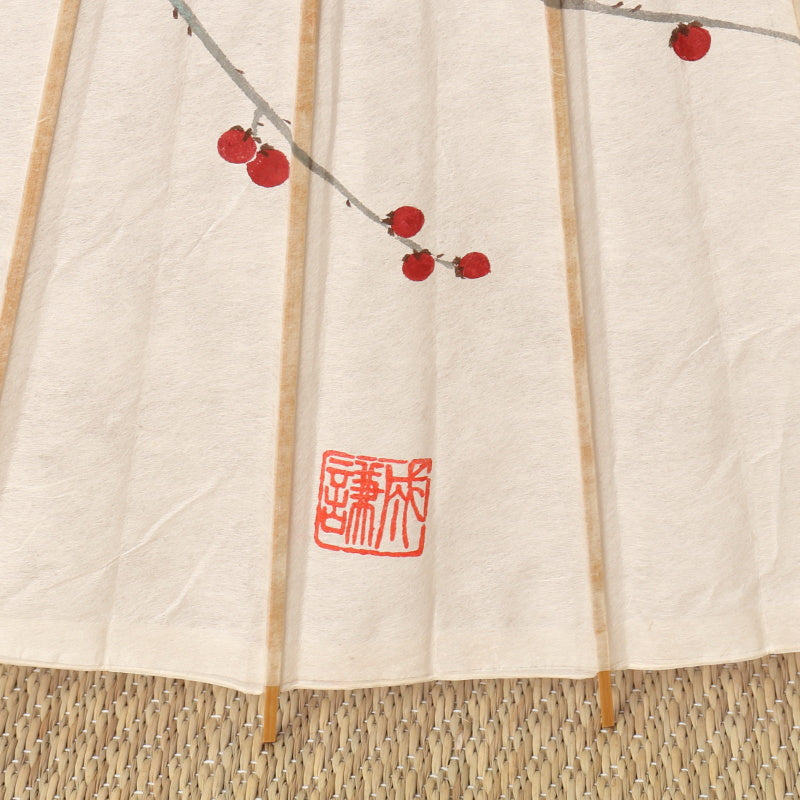
Although it is a classic Kyoto Yuzen pattern, the flowing water motif also gives it a modern feel.
Each and every red and white plum blossom is carefully painted.
Detailed depiction of a plum branch.
This is a masterpiece that highlights the artisan's sense and brushwork.
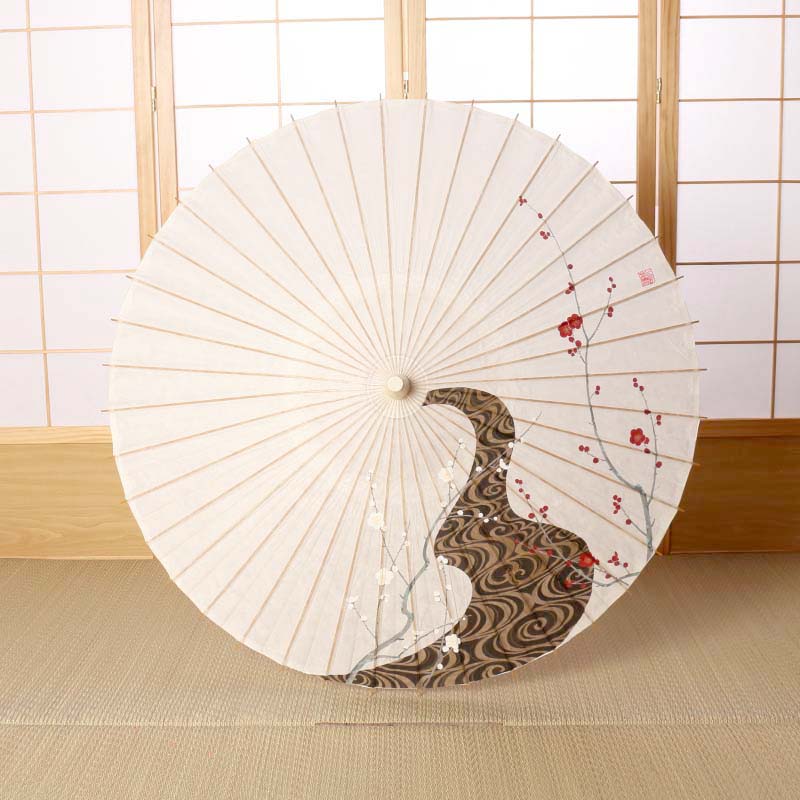
Hand-painted Kyoto Yuzen "Red and white plum blossoms on flowing water"
¥132,000 (tax included)
Specifications: Parasol, decorative Material: Handmade washi paper Color: White Decorative thread: White Frame: 40 pieces of madake bamboo (translucent finish)
Handle: Bamboo Clasp (fastener): Wood Total length: approx. 80.5cm
Diameter: Approx. 82cm
Weight: 260g
"Wisteria"
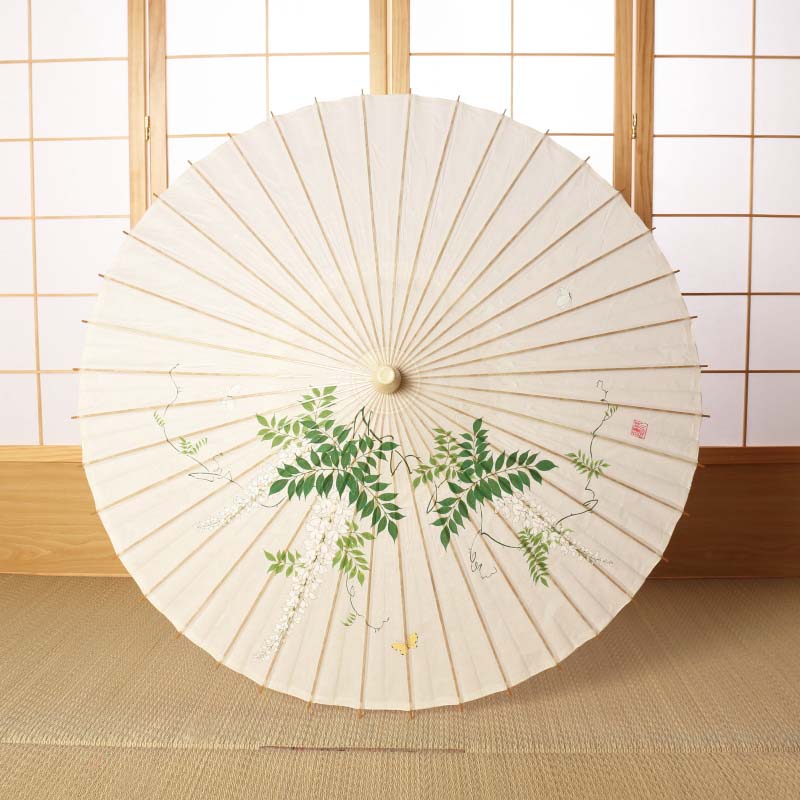
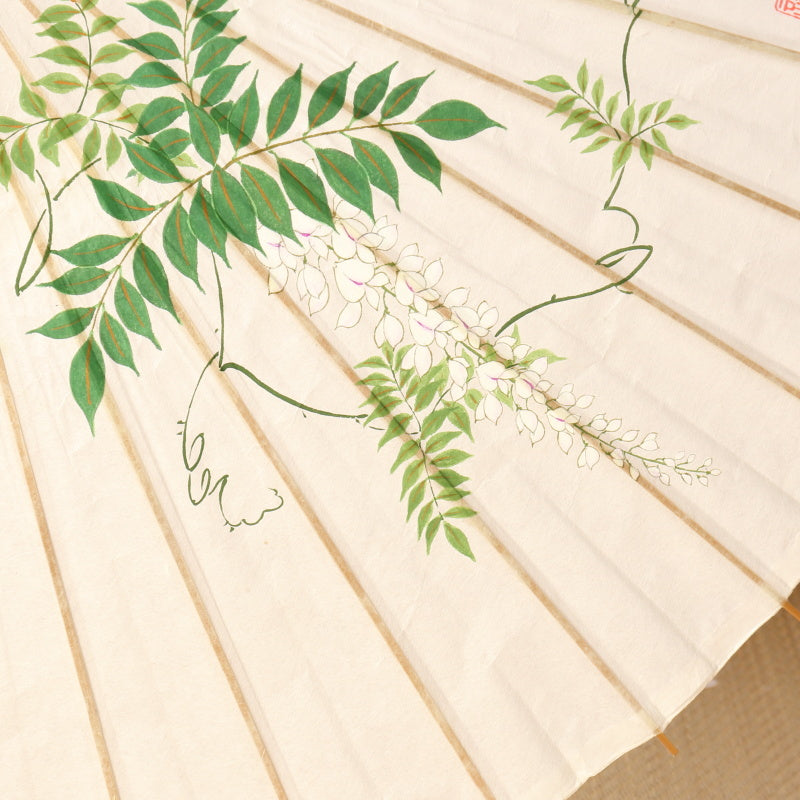
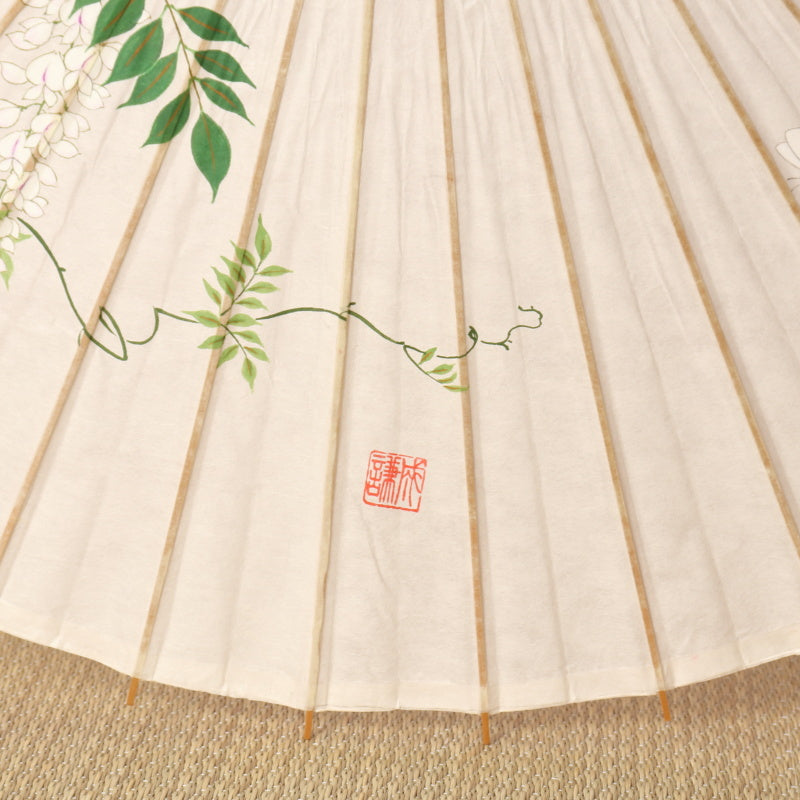
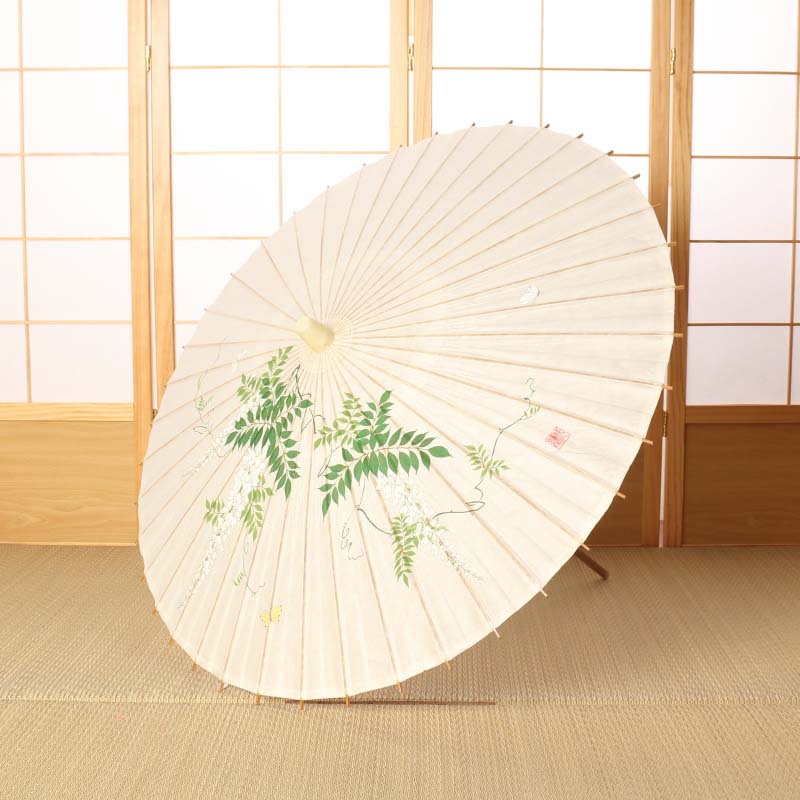
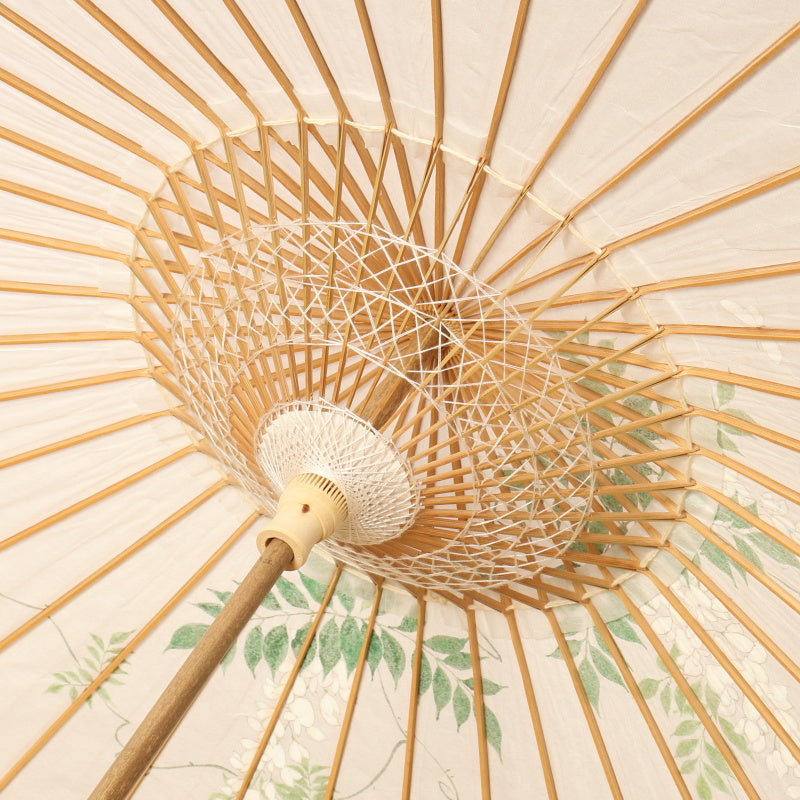
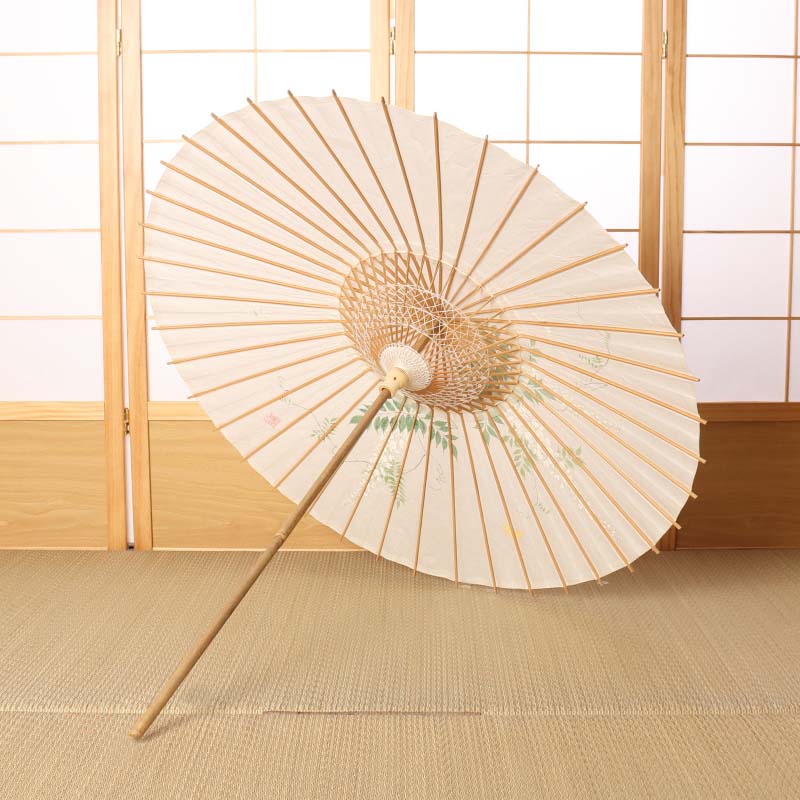
Each wisteria petal is carefully painted, the delicate flow of wisteria vines, and butterflies fluttering among them.
This is a masterpiece that highlights the brushwork of a skilled craftsman.
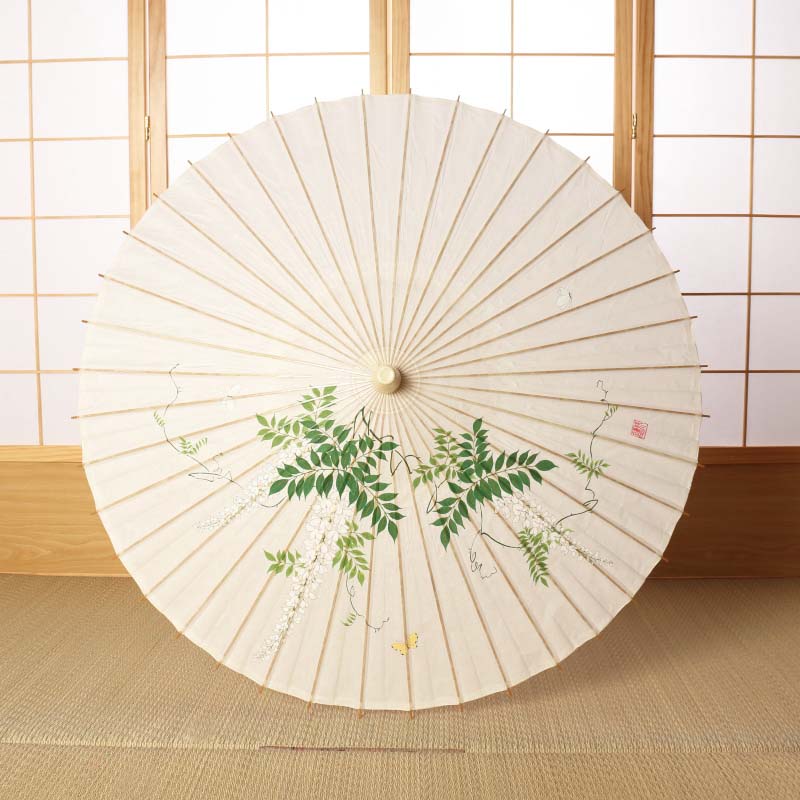
Hand-painted Kyoto Yuzen Japanese parasol "Wisteria"
¥132,000 (tax included)
Specifications: Parasol, decorative Material: Handmade washi paper Color: White Decorative thread: White Frame: 40 pieces of madake bamboo (translucent finish)
Handle: Bamboo Clasp (fastener): Wood Total length: approx. 80.5cm
Diameter: Approx. 82cm
Weight: 260g
"Snow on Bamboo"
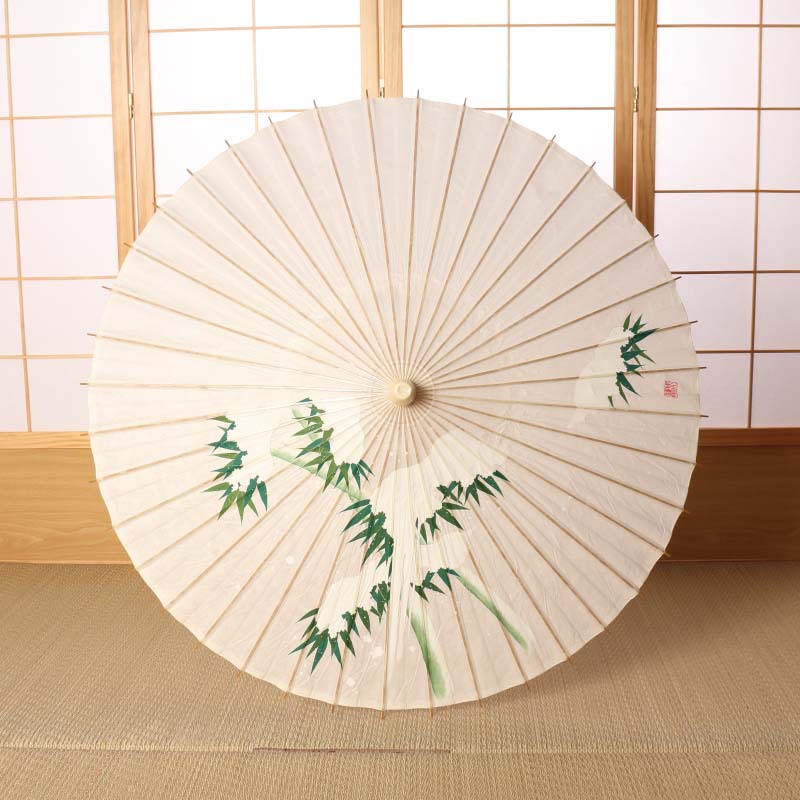
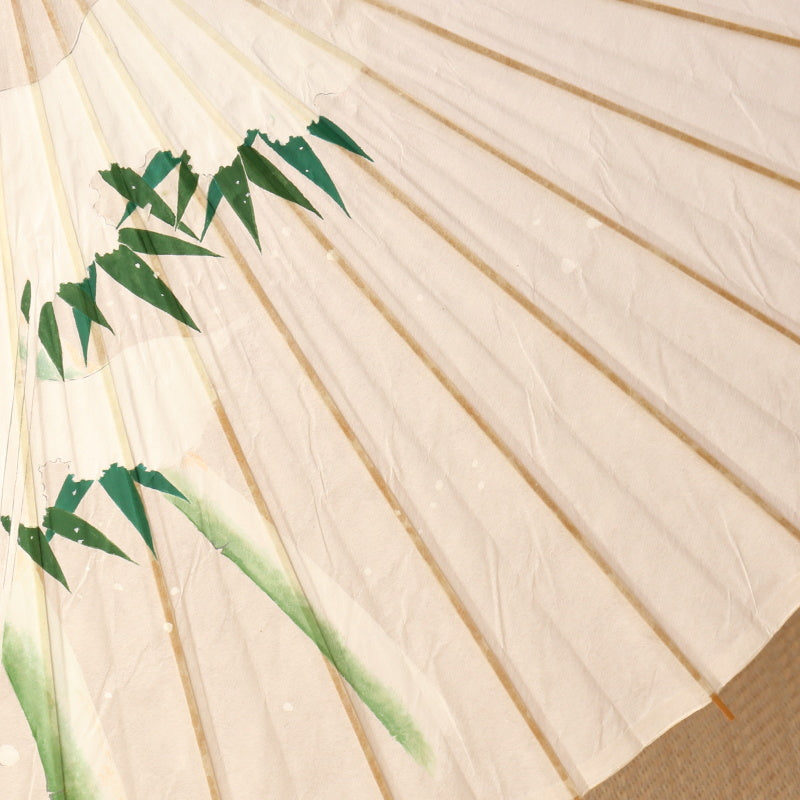
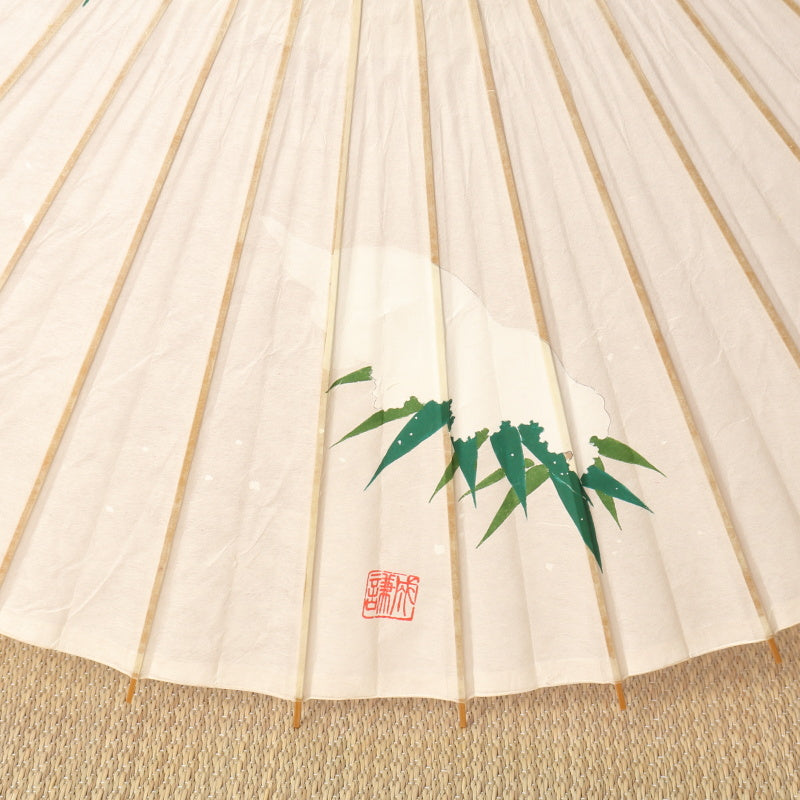
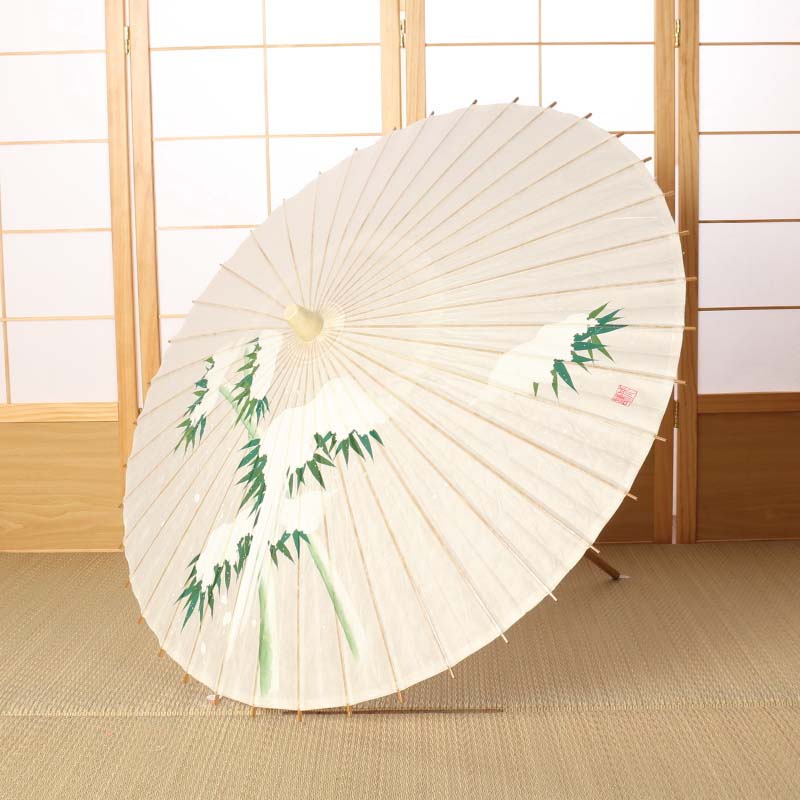
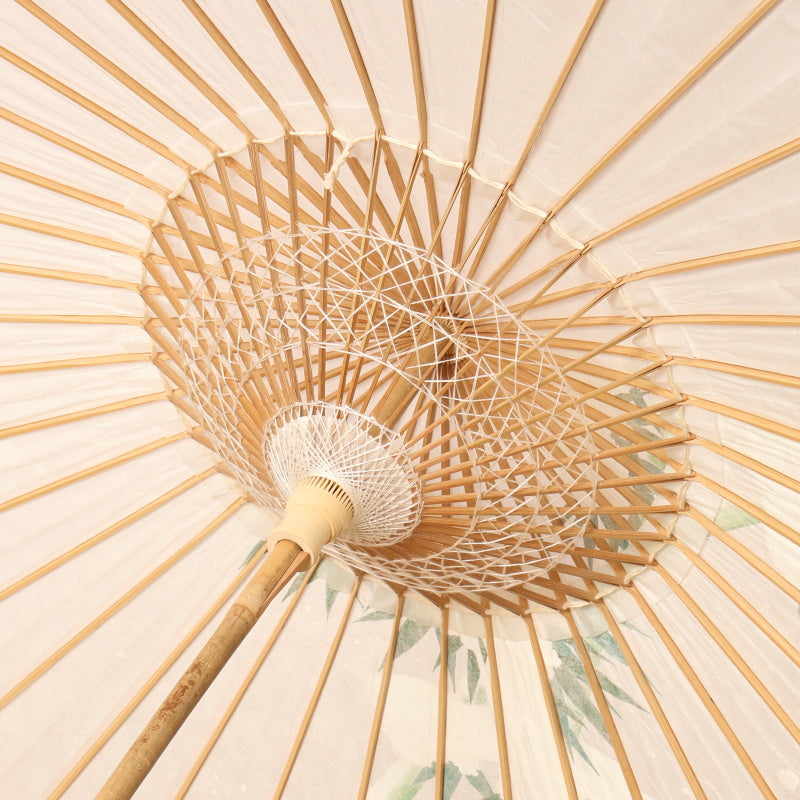
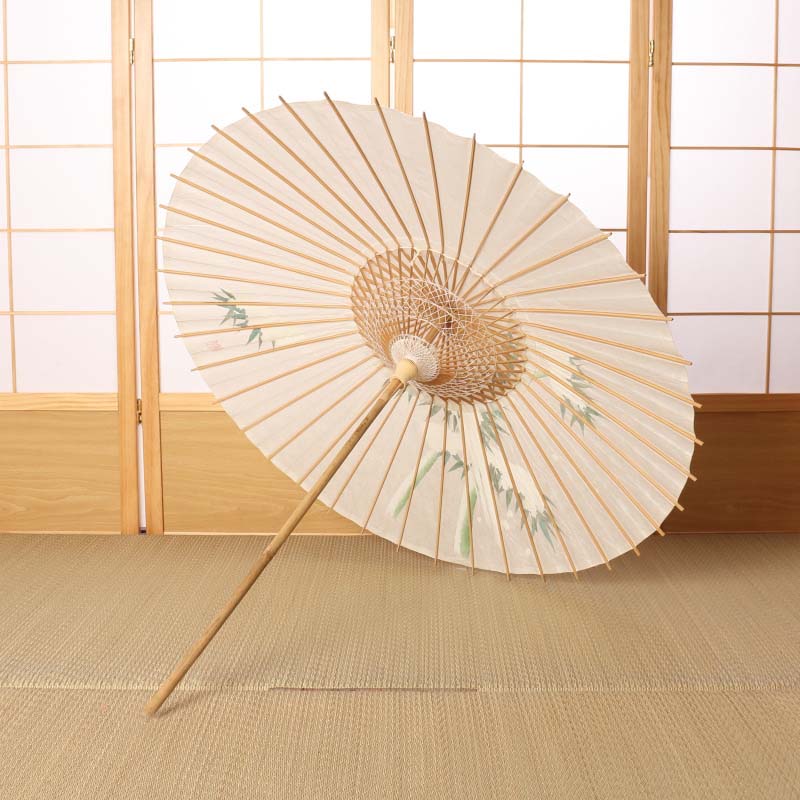
Each bamboo leaf is carefully drawn. Fine snow falls softly and accumulates on the bamboo.
The brushwork of a skilled craftsman shines through.
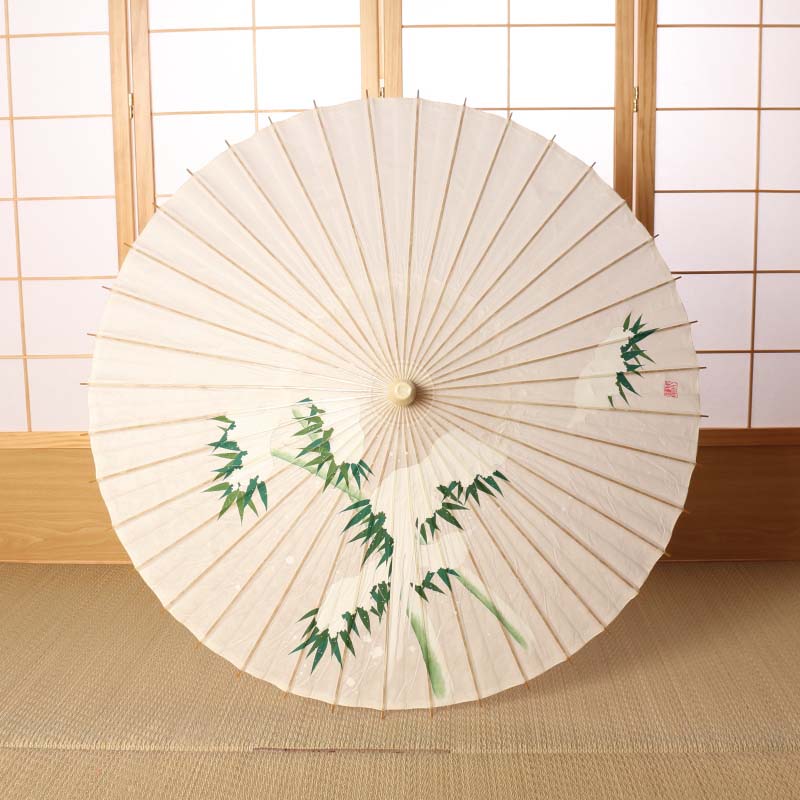
Hand-painted Kyoto Yuzen Japanese parasol "Snow on bamboo"
¥132,000 (tax included)
Specifications: Parasol, decorative Material: Handmade washi paper Color: White Decorative thread: White Frame: 40 pieces of madake bamboo (translucent finish)
Handle: Bamboo Clasp (fastener): Wood Total length: approx. 80.5cm
Diameter: Approx. 82cm
Weight: 260g
"Wind God and Thunder God"
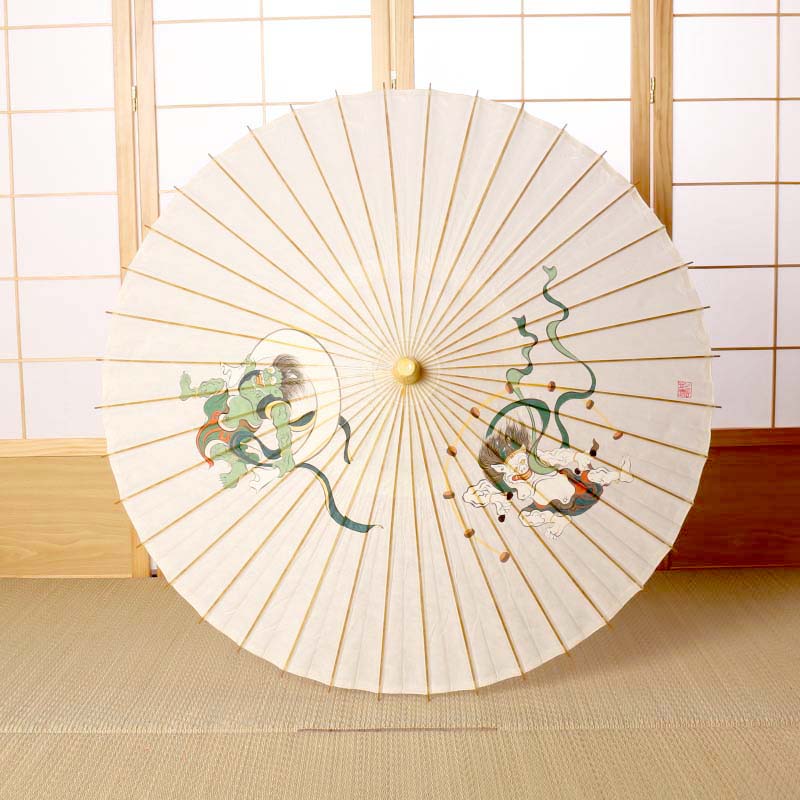
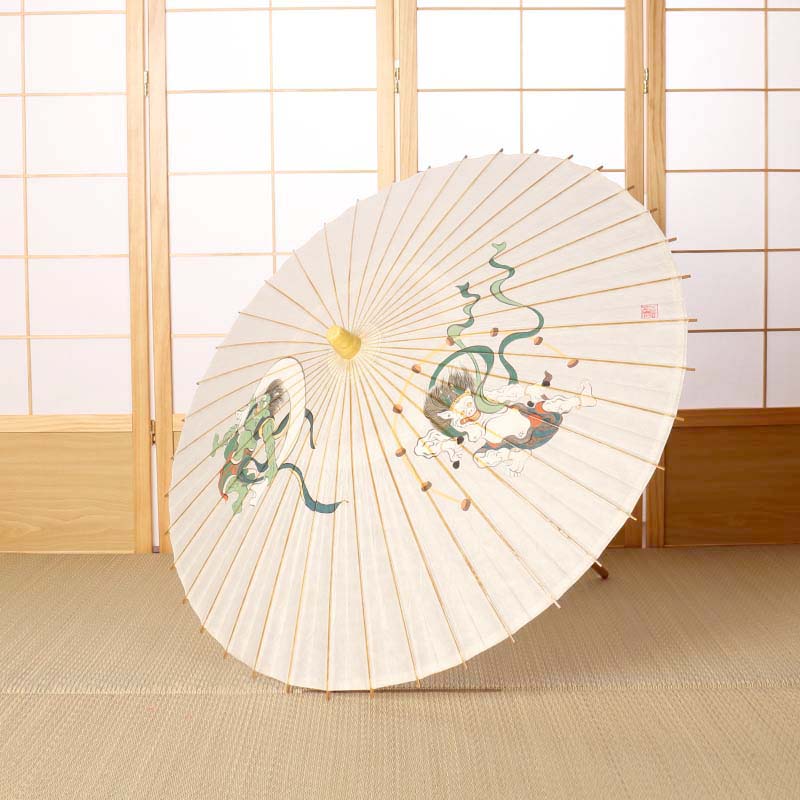
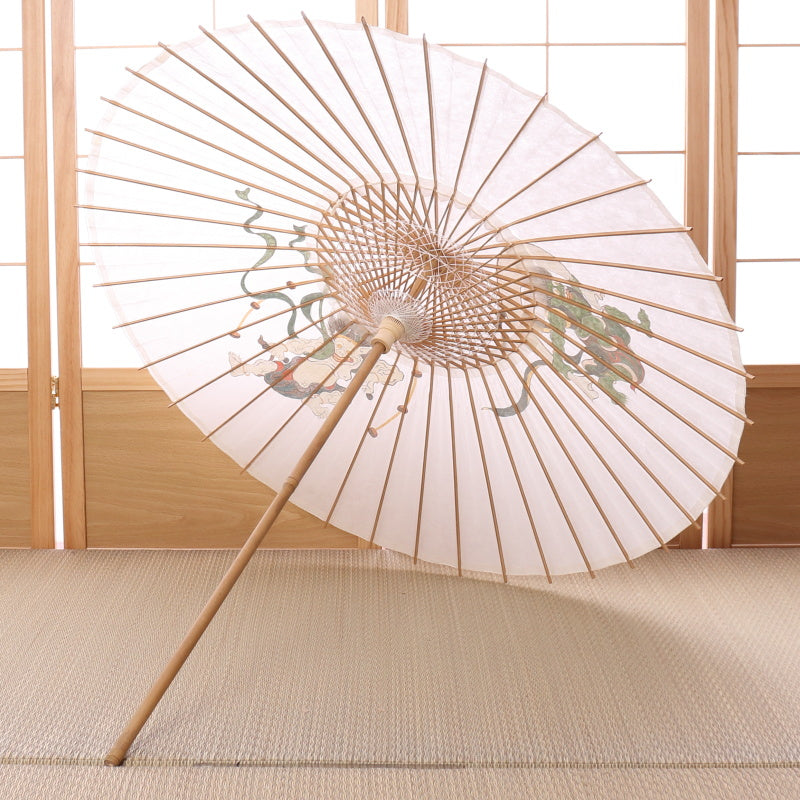
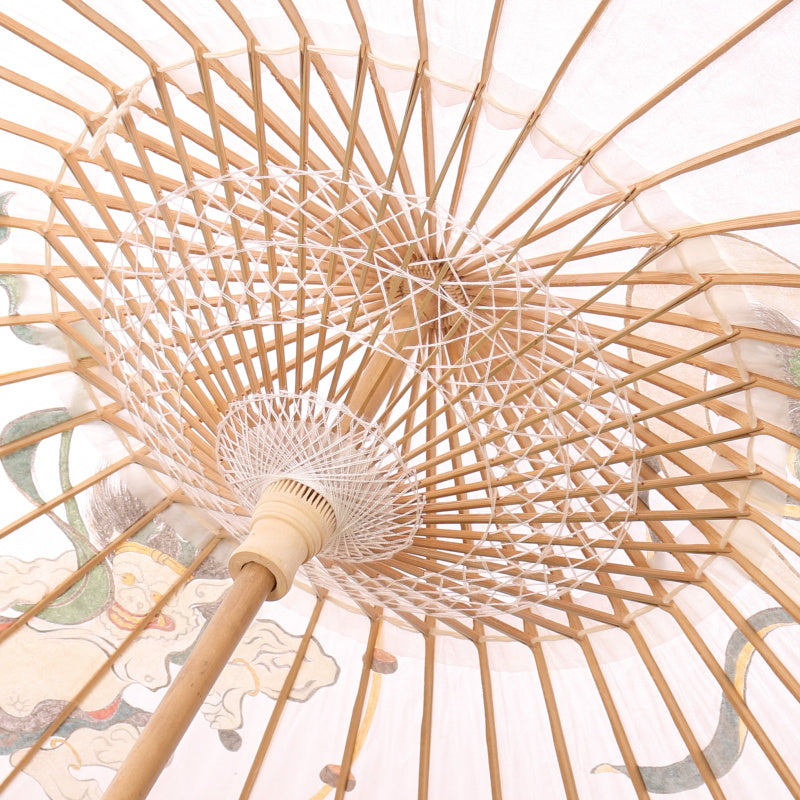
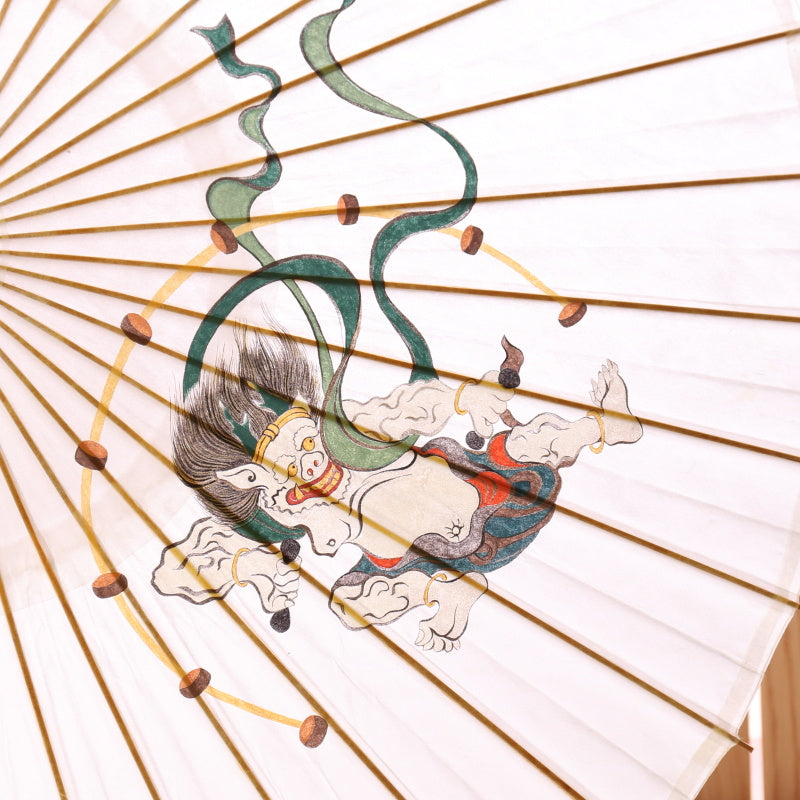
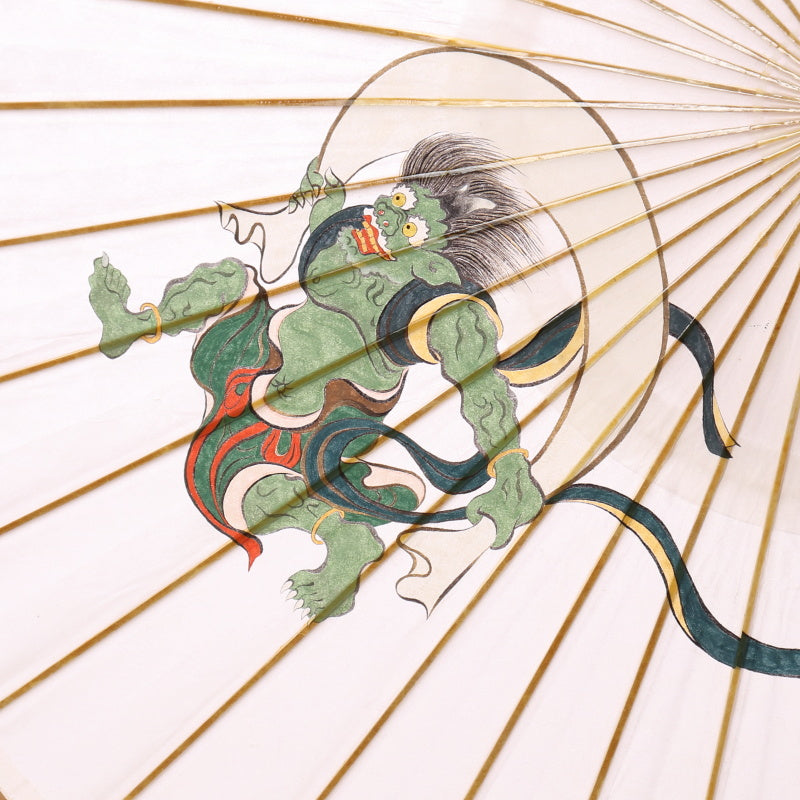
Each strand of hair is drawn in meticulous detail, the dynamism seems like it could jump out at any moment, and the powerful eyes.
The brushwork of a skilled craftsman shines through.
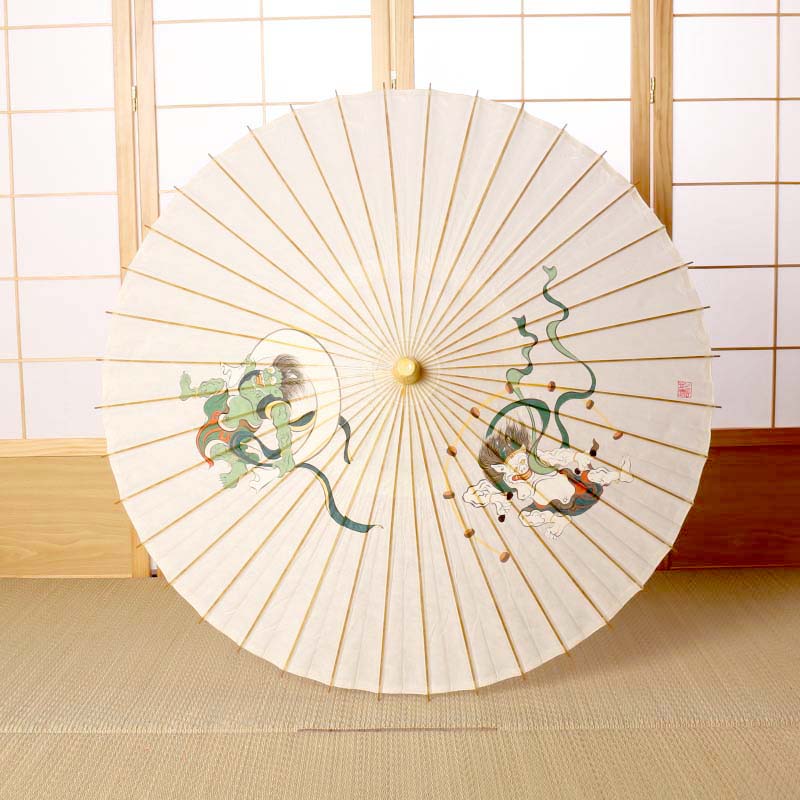
Hand-painted Kyoto Yuzen Japanese parasol "Wind God and Thunder God"
¥154,000 (tax included)
Specifications: Parasol, decorative Material: Handmade washi paper Color: White Decorative thread: White Frame: 40 pieces of madake bamboo (translucent finish)
Handle: Bamboo Clasp (fastener): Wood Total length: approx. 80.5cm
Diameter: Approx. 82cm
Weight: 260g
"Craftsman Seiken"
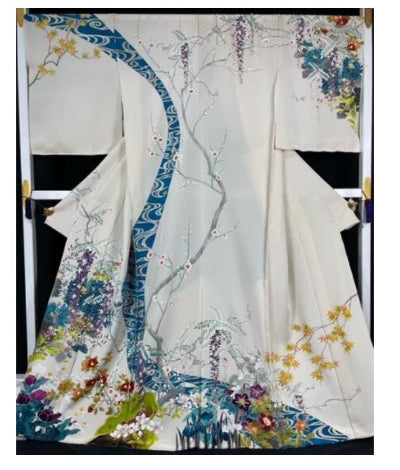
Kanze Stream with Chrysanthemum Wisteria and Flowers of the Grass
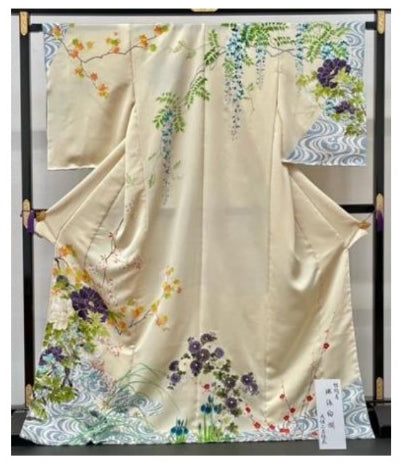
Rinpa Peony and Seasonal Flowers Kanze Stream
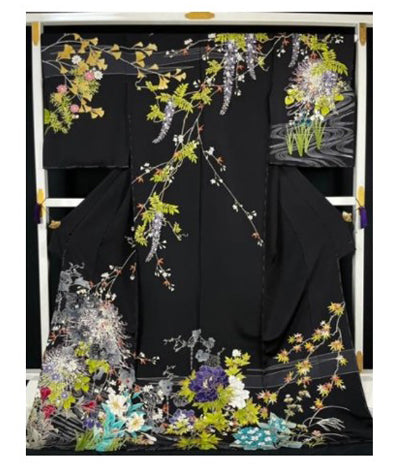
Flowing water in a riot of colours
Founded in 1965 near Nijo Castle in Kyoto's Rakuchu area, the company is completely original in the creation of Kyo-Yuzen, dyeing and processing, from designs (sketches) to threads, Yuzen and finishing.
We create items that fit a modern sensibility, ranging from Rinpa and other classical patterns to modern styles.
All products made by "Seike" are authentic hand-painted Kyoto yuzen textiles made by experienced craftsmen.
The kimono patterns vary from traditional designs such as the Rinpa and Kosode patterns to pictorial designs based on sketches of nature and landscapes, with a focus on classical motifs, but all of them exude the dignity that is characteristic of Kyo-Yuzen.
Our uncompromising manufacturing is evident from the many prestigious awards we have received to date.
The beautiful kimonos from Seiken Kobo have won numerous awards and are a well-regarded workshop favored by celebrities and famous people.
Craftsmanship dyer “Nariken” workshop
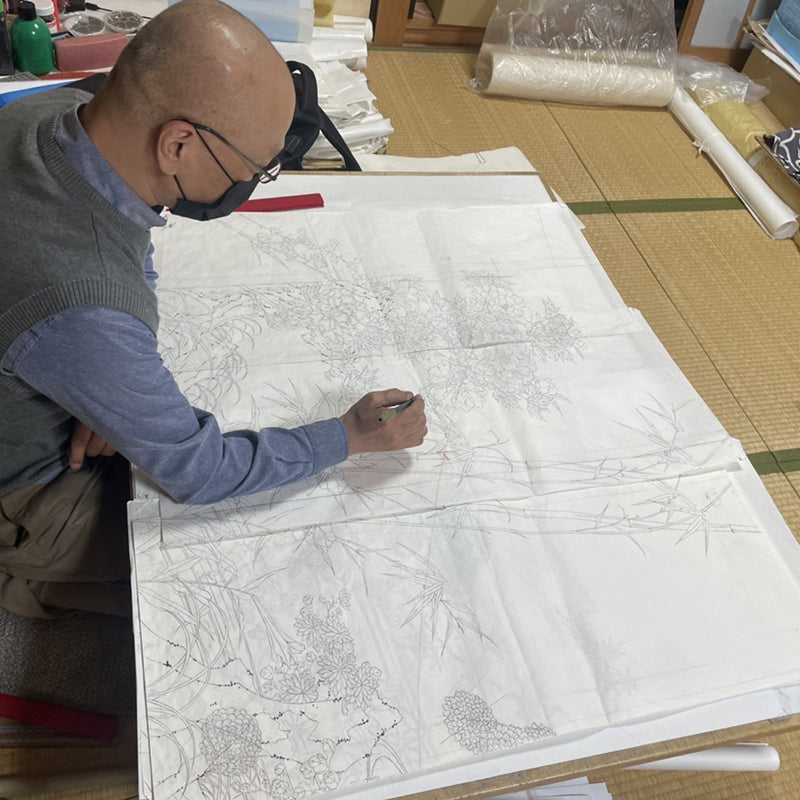
Sketch
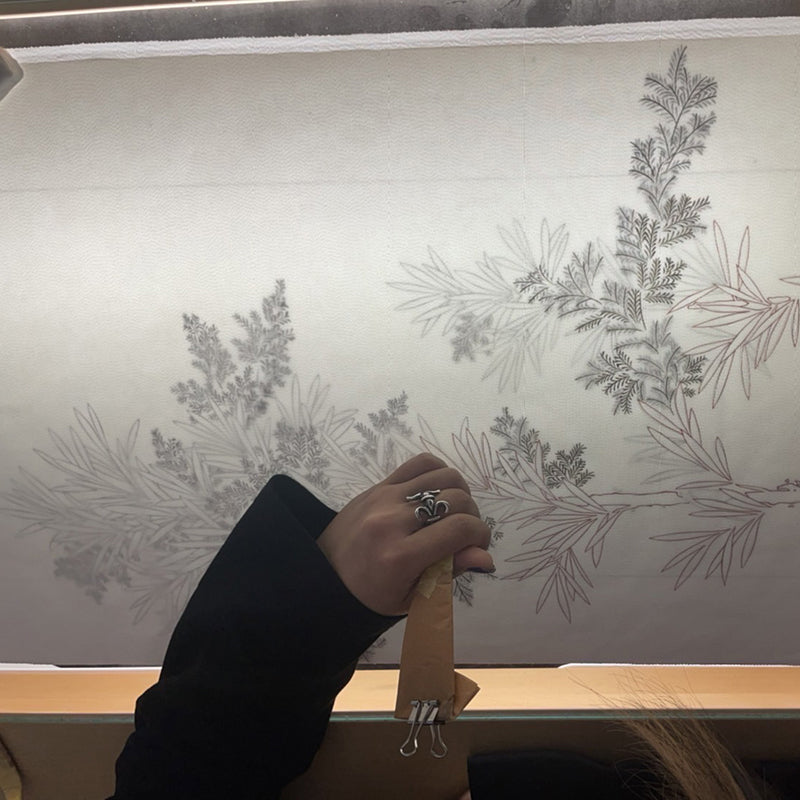
Glue on thread
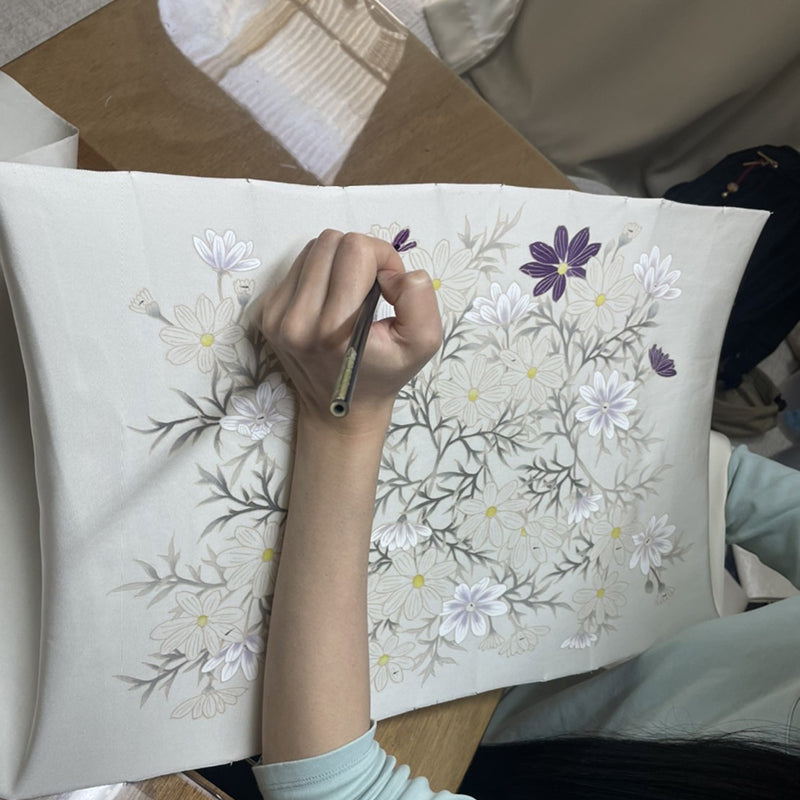
Yuzen coloring
Awards received: Kimono Art Exhibition Competition sponsored by the Kyoto Craft Dyeing Cooperative Association Main awards received: 2009 Minister of Economy, Trade and Industry Award 2010 Minister of Economy, Trade and Industry Award 2010 Kyoto Mayor's Award 2012 Minister of Economy, Trade and Industry Award Kinki Bureau of Economy, Trade and Industry Director's Award 2014 Minister of Economy, Trade and Industry Award and many more Member of the Kyoto Dyeing and Weaving Art Association Kyoto Craft Dyeing Cooperative Association
Kyoto Japanese Umbrella Shop Tsujikura
The artisans at Tsujikura will create a Japanese parasol based on the design by a sketch artist from the craft dyeing artisan Seiken.
As most of the work involved in making a Japanese umbrella is done by hand, it takes a long time to complete.
Among the many processes, the "stretching" process, in which the Japanese paper is stretched over the frame, is a very important step in creating the shape of the Japanese umbrella.
Different pieces of paper are pasted onto the framework of the Japanese umbrella. Although this process cannot be seen from the outside, it is extremely important for the umbrella to open and close properly.
We work hard every day creating our products with the desire to "protect the traditions and culture that have been handed down since ancient times in Japan and pass them on to future generations."
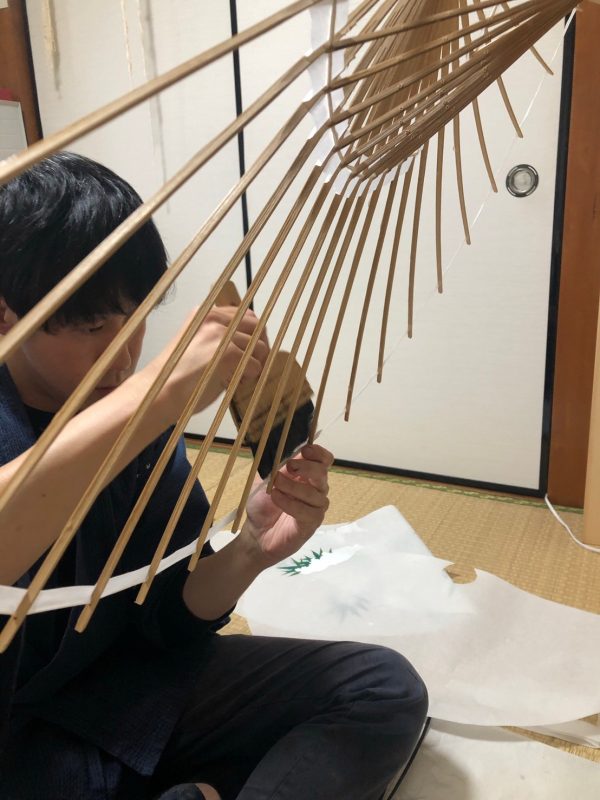
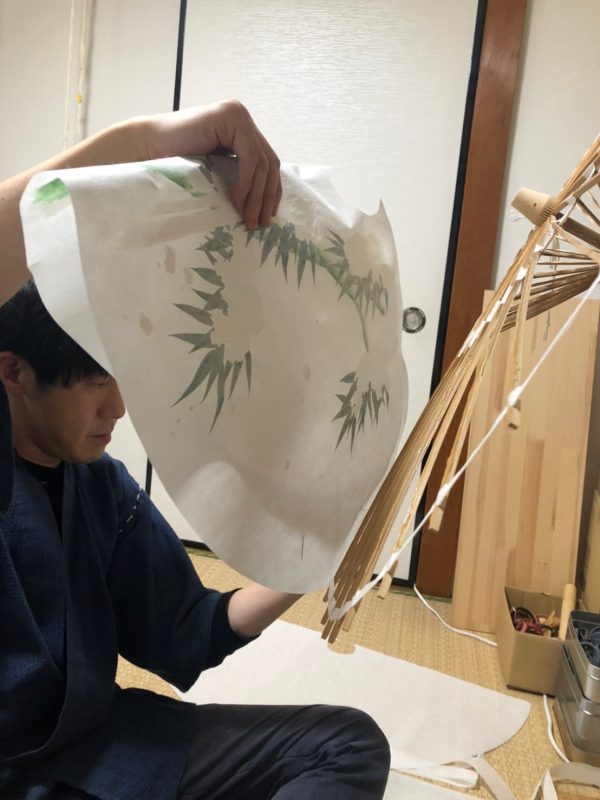
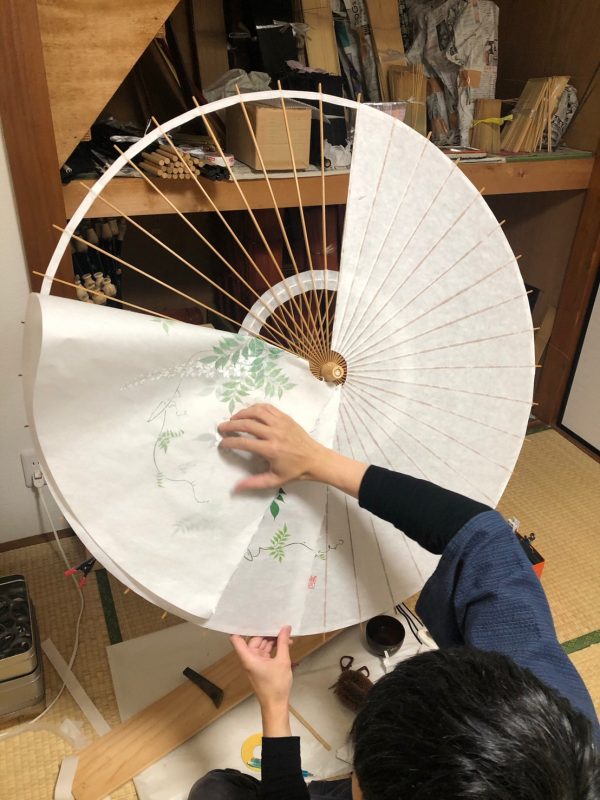
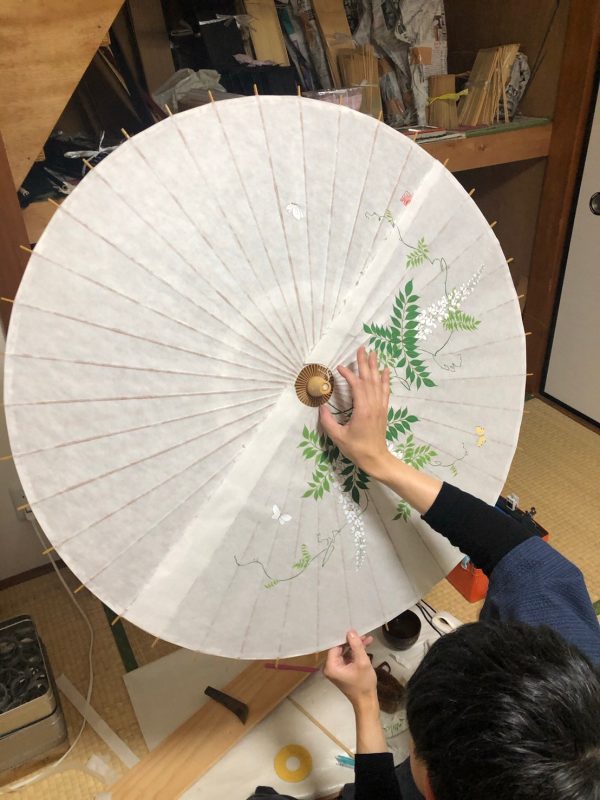
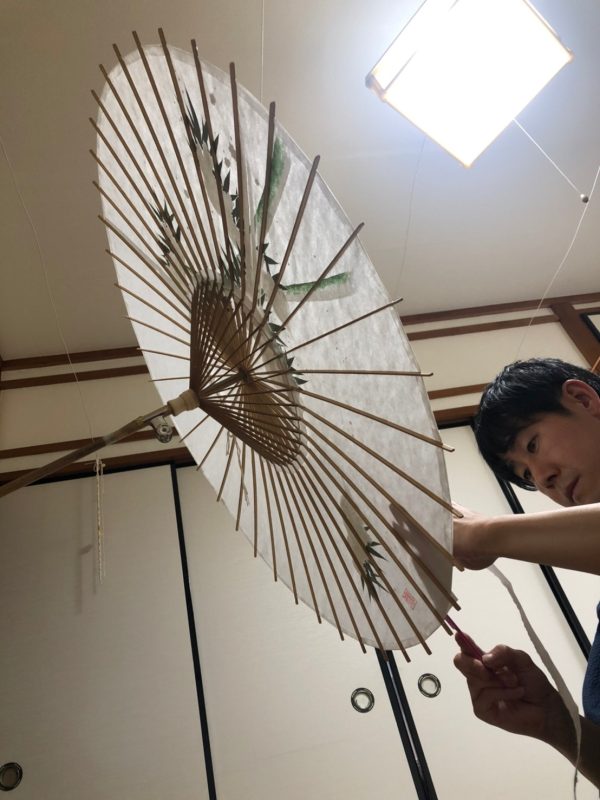
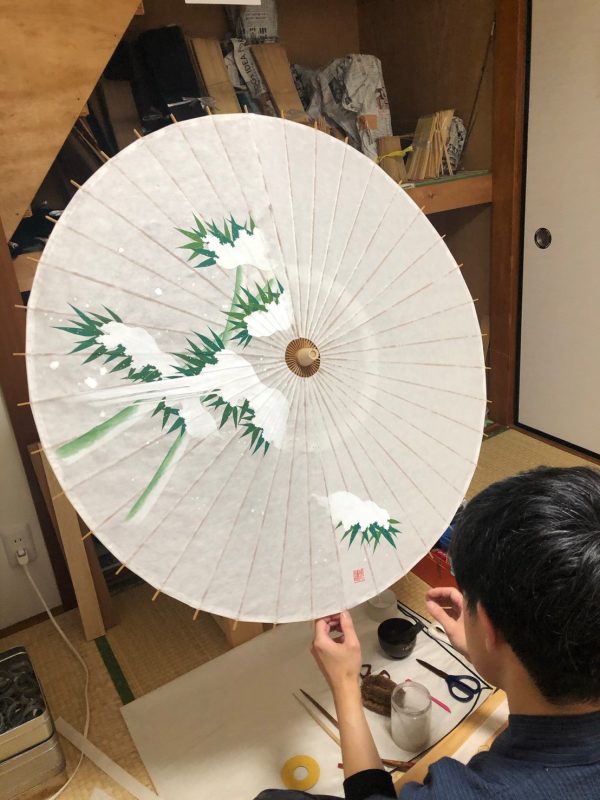
Product introduction of Kyoto Japanese umbrella shop Tsujikura
Higasa (Japanese parasol)
Higasa (Japanese parasol)
Higasa (Japanese parasol)

